Latest from TechRadar US in Reviews
Panasonic Lumix ZS99: One Minute Review
The Lumix ZS99 (called the Lumix TZ99 in some markets) is a relatively rarity in modern times – a brand new compact camera.
Only stop right there, most of it isn’t new at all. It uses the same sensor and lens combination as its predecessor, the ZS80D / TZ95D, only really adding the mandatory USB-C charging functionality that affects all new devices sold in the EU.

Worse still, Panasonic has seen fit to remove the small (but useful) viewfinder found in the previous incarnation. The screen remains the same as before, only now you’ll be completely reliant on it for every shot – shame.
This is not a bad camera by any stretch, but its highly versatile zoom is pretty much its only winning technical ability over your smartphone in 2025. You can get some good shots if you need to zoom, but pictures taken at the wide angle end are pretty much the same as any half-decent smartphone is capable of these days.
If you really want a separate device, and want to be able to zoom in close on distant subjects, then it’s a good choice – but don’t be surprised if you go back to using your phone in conditions such as low light.
Is the Lumix ZS99 one of the best compact cameras? Technically no, but it's one of the only travel zooms available, for a competitive price.
Panasonic Lumix ZS99 / TZ99: release date and price
- $499 / £469 / AU$999.95
- Available to buy now
- All black or black and silver colourways available
These days, paying $499 / £469 for something that your smartphone can (sort of) already do might seem like a lot of cash to part with.
However, cameras such as this have had a resurgence in recent times, largely thanks to the influence of, er, influencers. Last year, such was the popularity of the ZS80D / TZ95D that you could expect to pay double the list price of the ZS99 / TZ99, with even second-hand prices being off the charts.
So the ZS99 / TZ99 is far from cheap, but there’s really not much to compete with it in today’s market – if it’s something you want, it’s reasonably well priced. That said, if you’re happy to live with a smaller zoom (10x), you can get hold of the Panasonic TZ200 for about the same price as a TZ99. You’ll lose the zoom reach, but you’ll get a one-inch sensor which produces better quality images, so that’s worth thinking about.
- Price score: 4/5
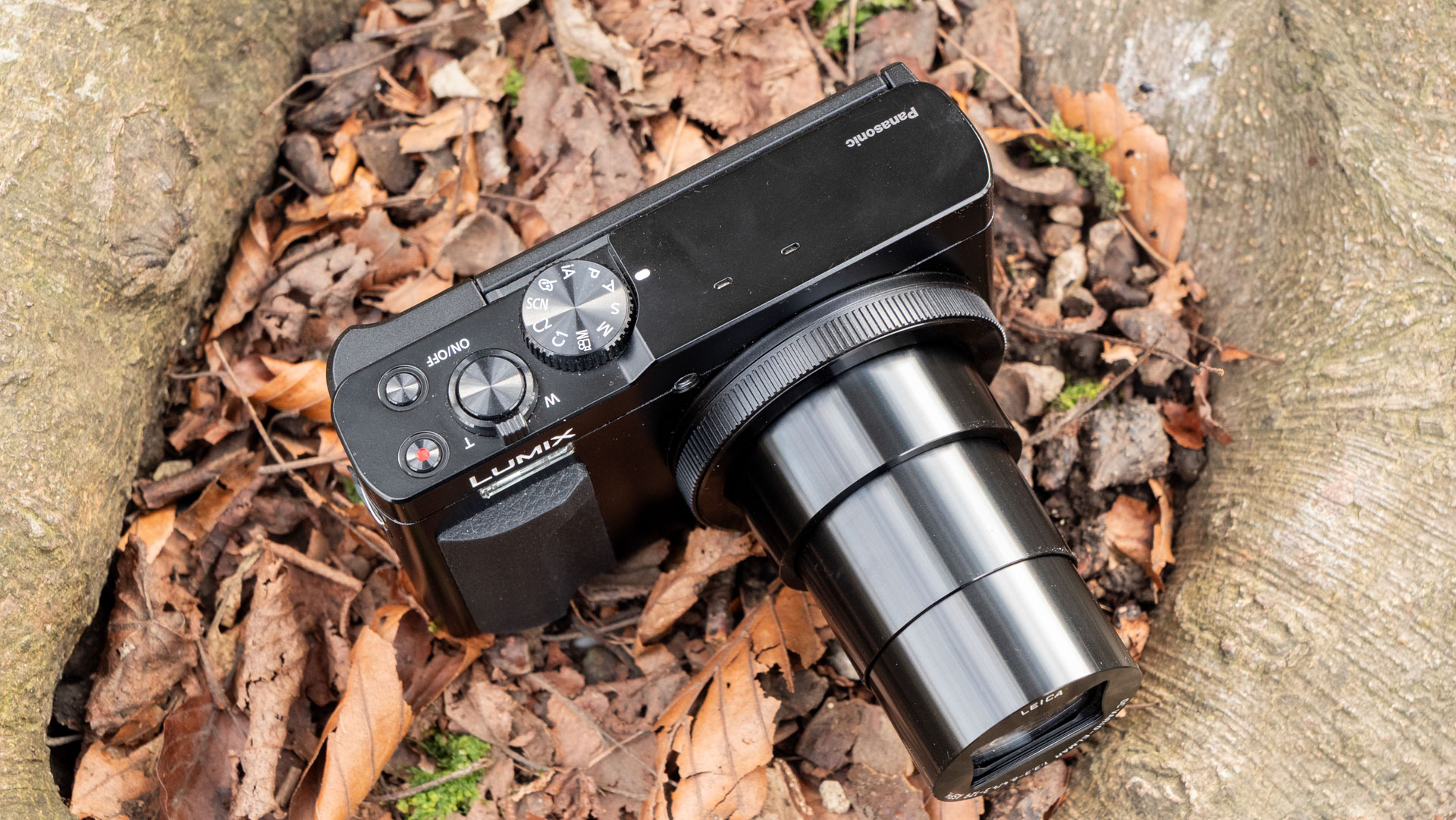
Panasonic Lumix ZS99 / TZ99: specs
Panasonic Lumix ZS99 / TZ99: design and handling
- Small, smartphone-sized sensor with 30x zoom
- Front-facing touchscreen
- No viewfinder
- Lots of physical buttons
At the heart of the Lumix ZS99 sits a 20MP 1/2.3-inch sensor. It’s about the same size as those you’ll find in modern smartphones – in fact some smartphones are packing even larger sensors these days.
Disappointed? Well, don’t be too much – it’s what gives the ability to zoom to 30x, something which your smartphone definitely can’t do, optically at least. The biggest downside of a small sensor tends to be a loss of detail in low light conditions – which for travel might not be too much of a bugbear.
That 30x lens gives you 24-720mm in full-frame terms (the common reference for lens focal length), and just as with the sensor, it’s the same as found on the ZS80 / TZ95D, so there isn’t any improvement in image quality (see the next section).
If you want a camera that fits neatly into your pocket and that isn’t your smartphone, then this should fit the bill. It’s fatter than the average camera phone, but it’s not quite as lengthy. There’s grips on the front and rear of the camera which makes it feel a bit more secure than a slippery phone, too.
Settings changes can all be made via actual, physical controls. A tactile rarity in today’s modern screen obsessed world.
There’s a mode dial giving you access to full manual control, for example, while the zoom is controlled via a rocker switch around the shutter release. Several of the buttons can be customized to suit the functions you use most, which is helpful – and there are some additional touchscreen settings you can use too.
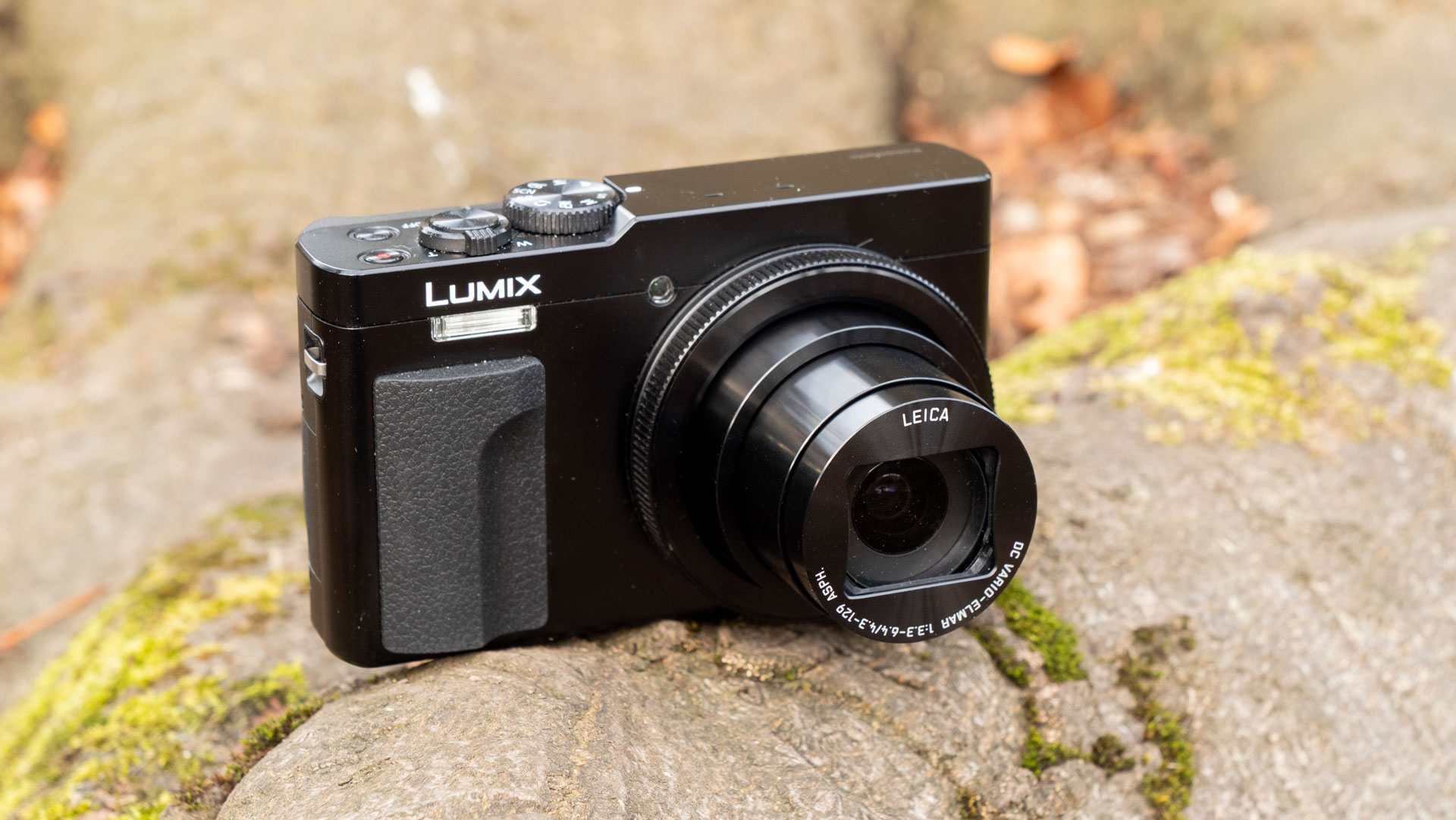

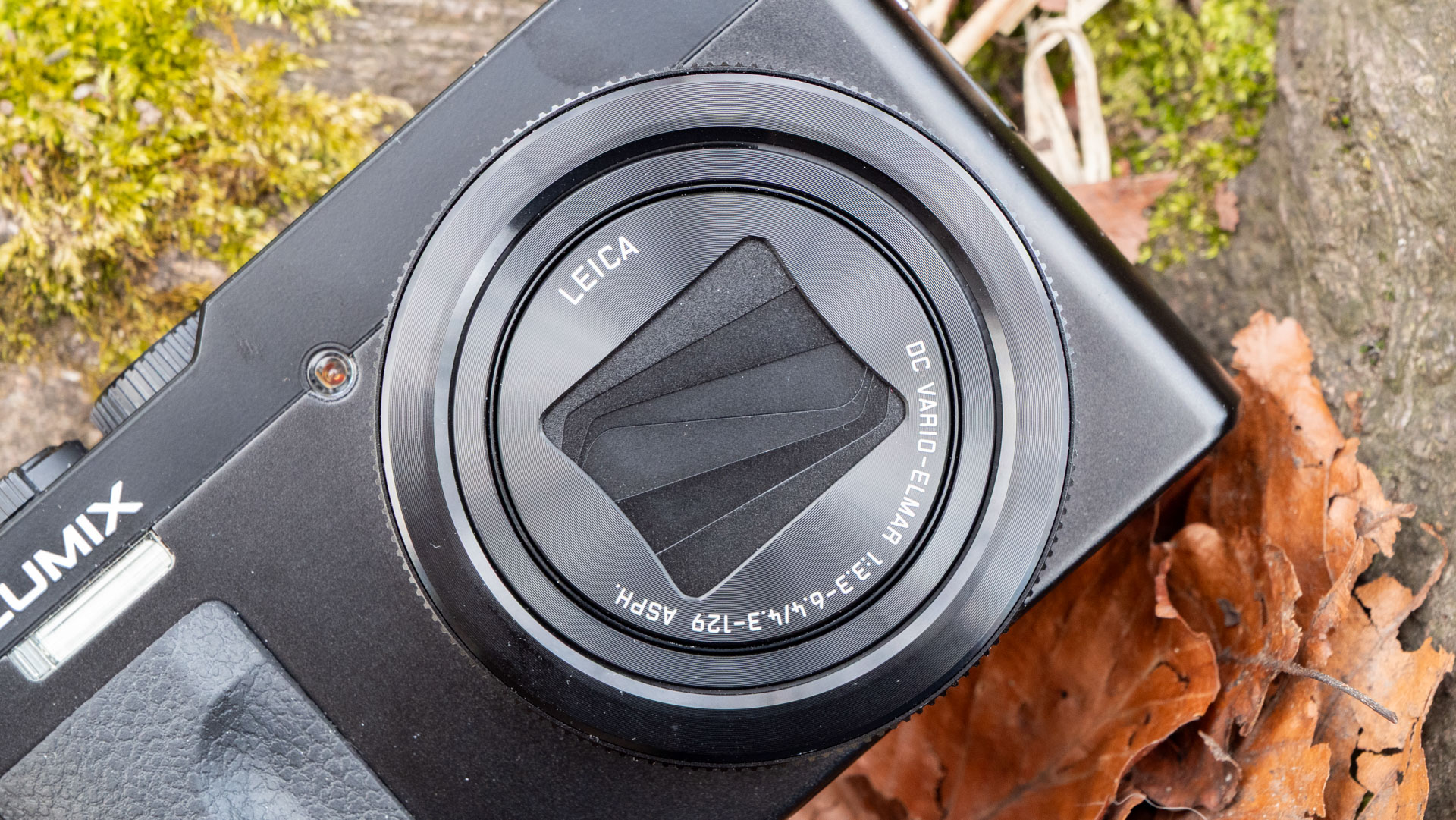


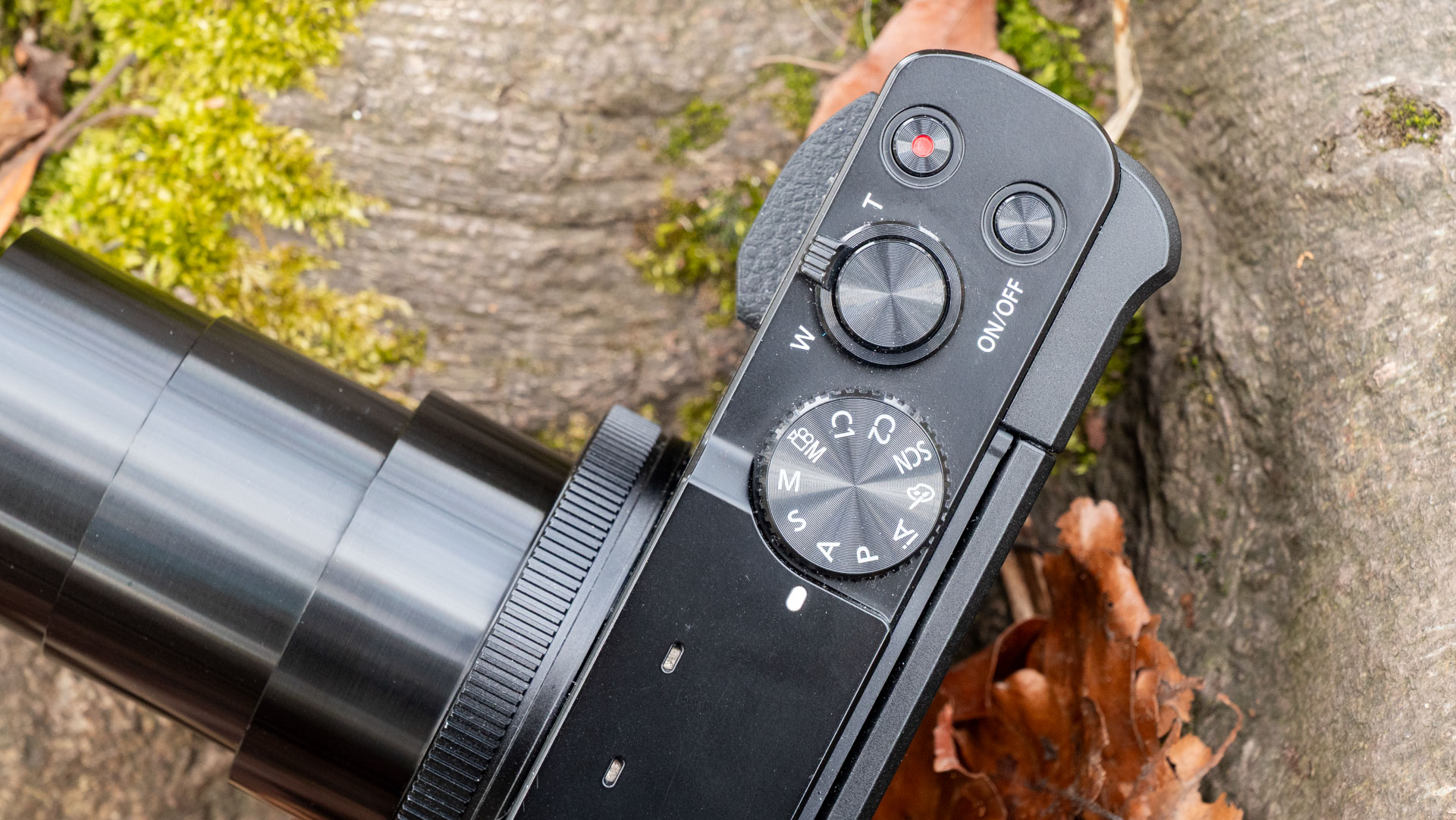
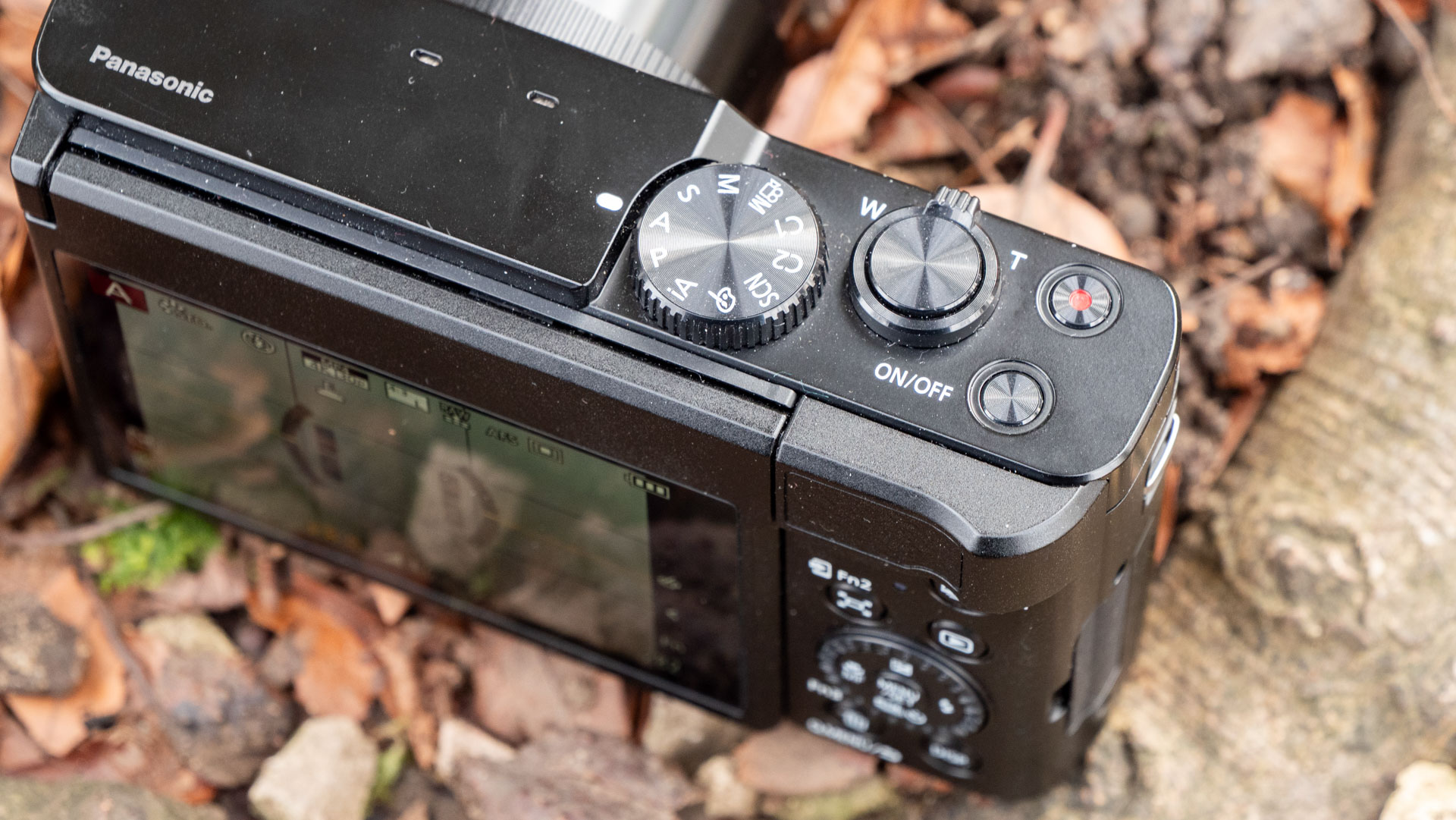
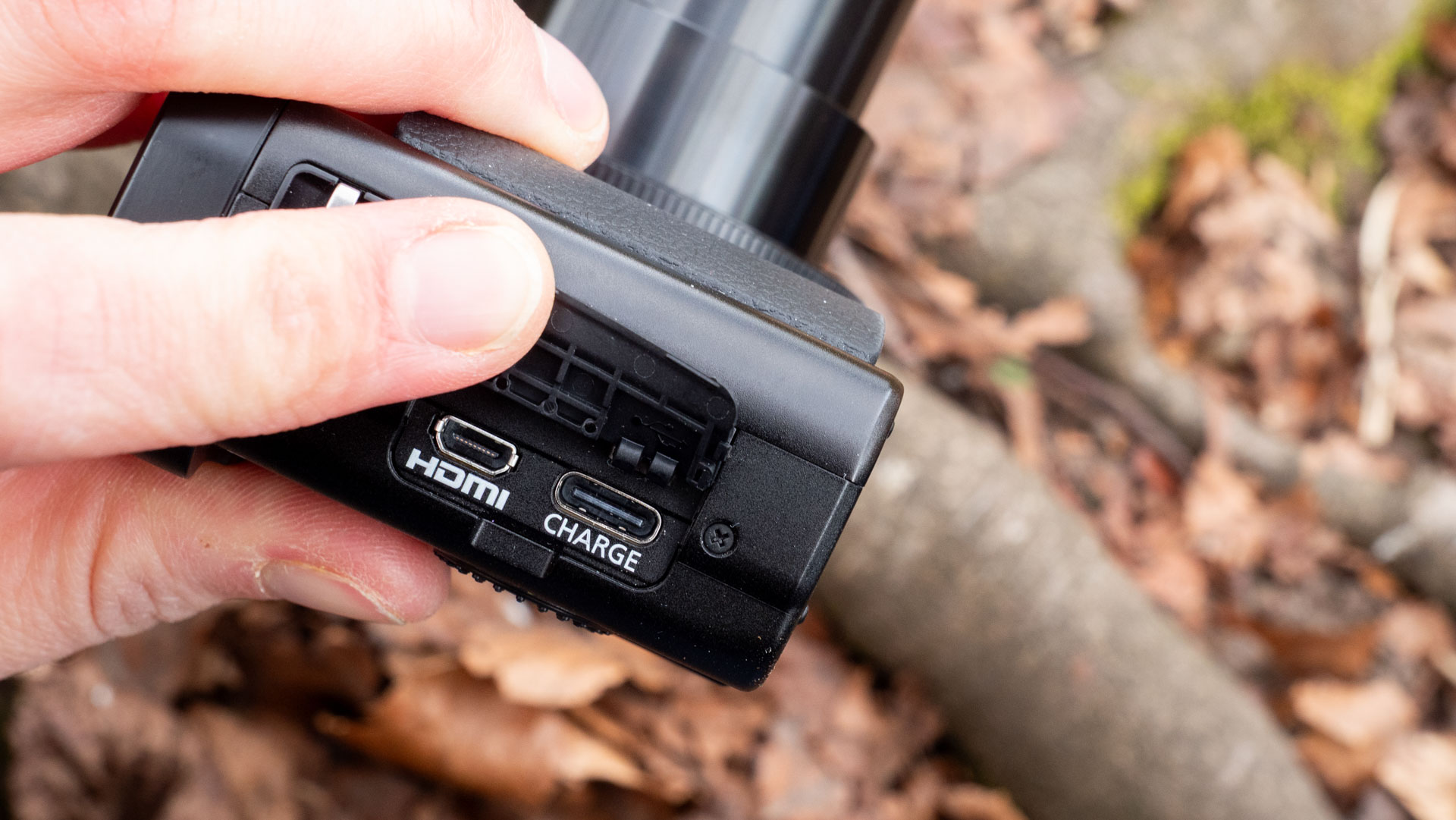
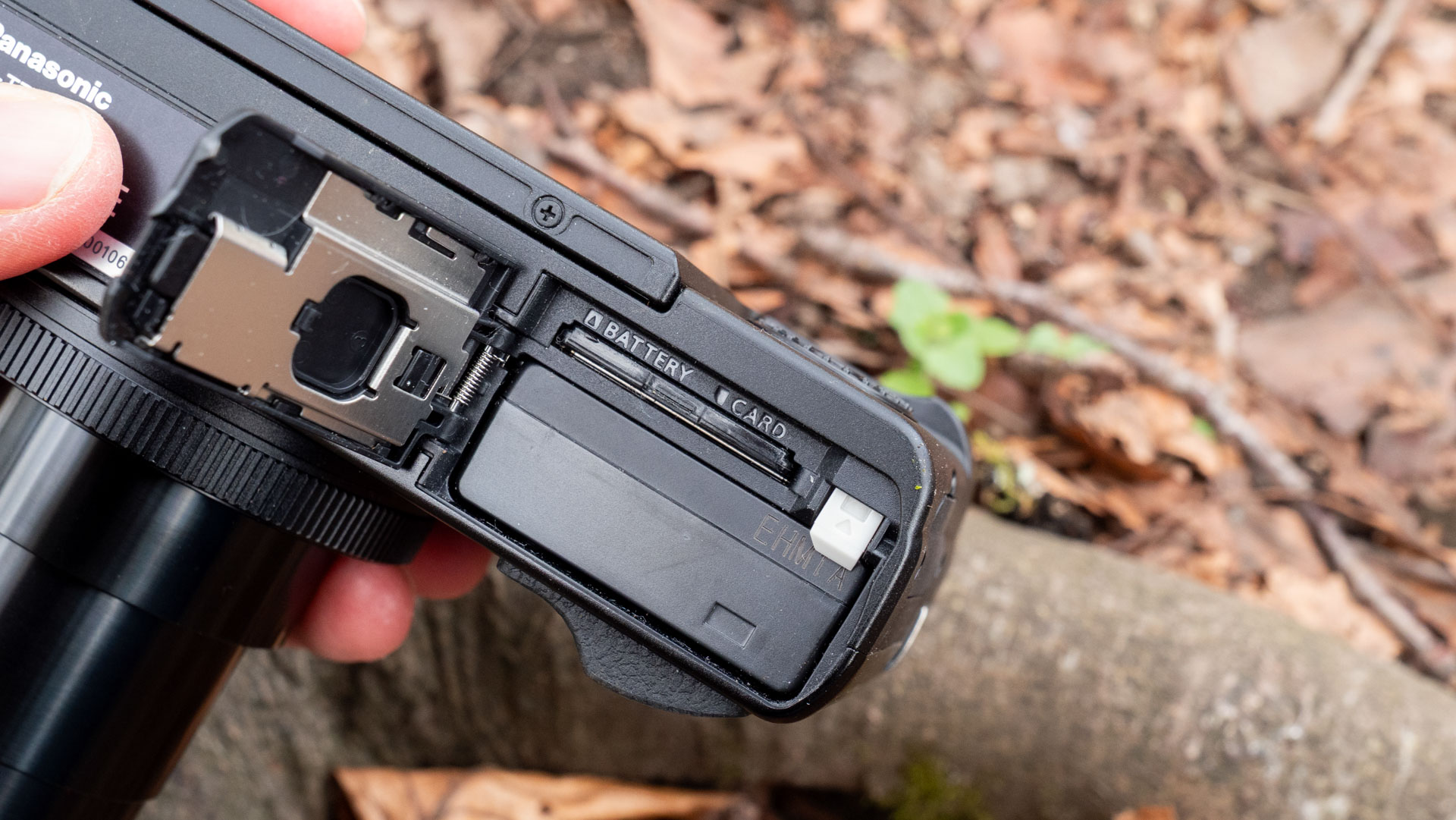
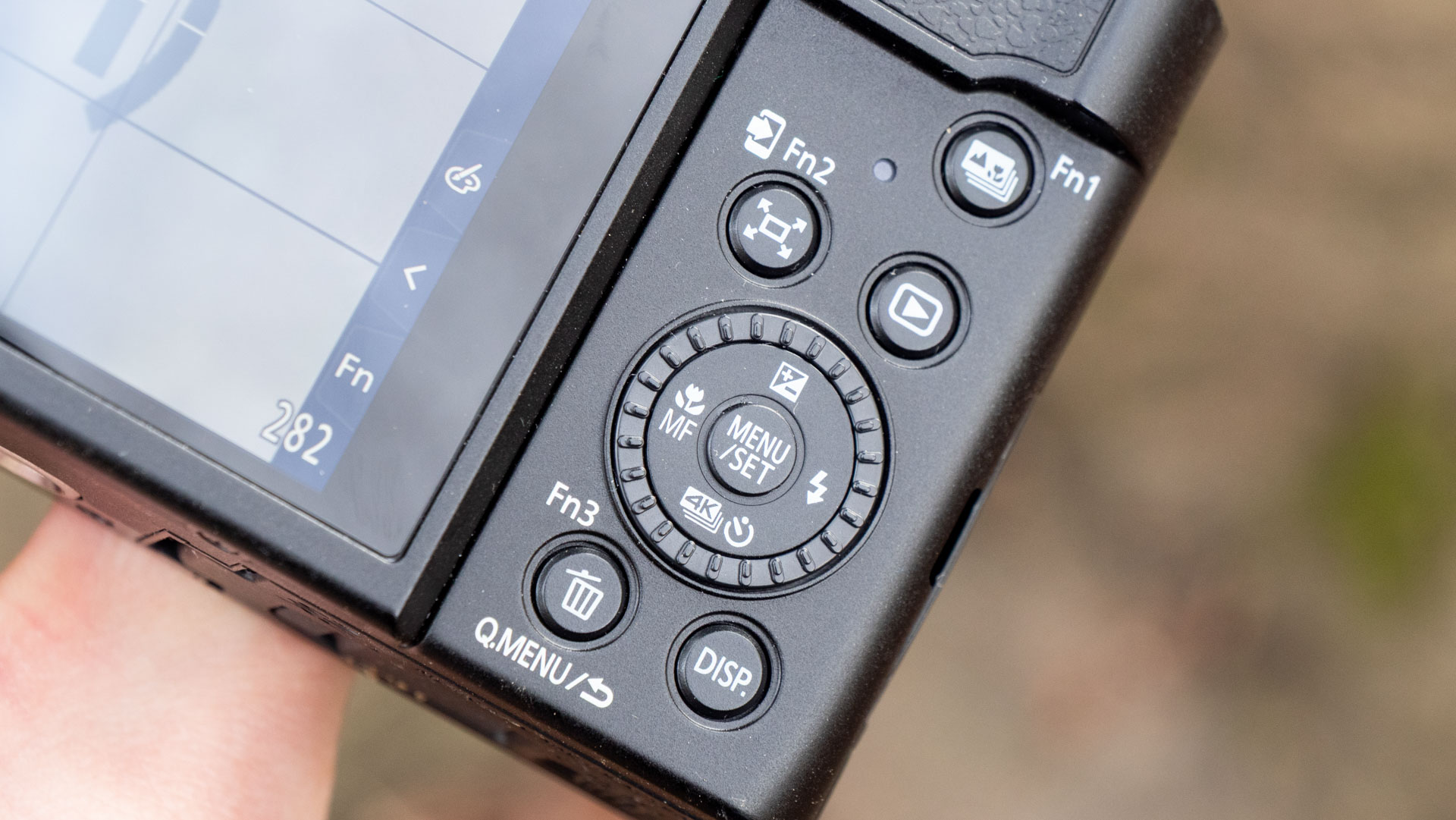
One function which is particularly useful is the Zoom Compose Assist button. Handy for when you lose track of your subject while shooting at a long focal length – such as a bird in flight – it'll quickly zoom out so you can relocate the subject, and then the lens zooms right back in to your last setting when you let go of the button. Nifty.
The screen is also the same as found on the predecessor. It flips forward for selfies and video and has 1.84m dots. It’s detailed and bright enough for most uses, and it’s touch-sensitive too. In the bright sun it’s harder to see, which is why it’s disappointing that Panasonic has removed the viewfinder, found in the previous model. That said, it’s probably true to say that anybody coming from a smartphone won’t be used to a viewfinder and is unlikely to miss the option.
- Design score: 4/5
Panasonic Lumix ZS99 / TZ99: performance
- Good for zoom shots
- At wide-angle, image quality similar to a smartphone
- Low light quality is less impressive
We already knew what to expect from the camera, considering it uses the same sensor and lens as its predecessor.
In short – it’s good, but not great. At least, not by modern standards anyway. There’s only so much that a small sensor can realistically deliver, and while there are some things that this camera can do that your phone can’t, sometimes even a budget smartphone will outperform it.
If you find yourself shooting in good overall light, which isn’t too harsh, and you’re shooting a still or fairly placid subject then you’ll get some nice images. There’s a good amount of detail, colors are realistic (if a little dull), and exposures are well balanced. At the wide-angle end of the lens, your smartphone probably achieves the same results.

However, it’s when you engage that zoom that the magic happens. So long as you can keep the camera fairly steady, even shooting at that far 30x zoom can leave you with nice close-ups of distant subjects.
There’s in-built 5-axis Hybrid optical image stabilization (OIS), which works fairly well, but once you’re shooting at 20-30x, any additional steadiness you can provide will go a long way too.
As for tracking of subjects – there’s no way you’re going to follow a leopard or a motorcar, but for more predictable and slower wildlife you stand a fighting chance of capturing the subject, sharply focused.
Now for some bad news – low light. Smartphones do pretty well at this subject by taking lots of pictures and merging them together. Here, you don’t get that, so even when it’s only as low light as indoors, you will notice a fair amount of smudginess. Avoid using this camera inside buildings or after dark, and you’ll be golden.
- Performance score: 3/5

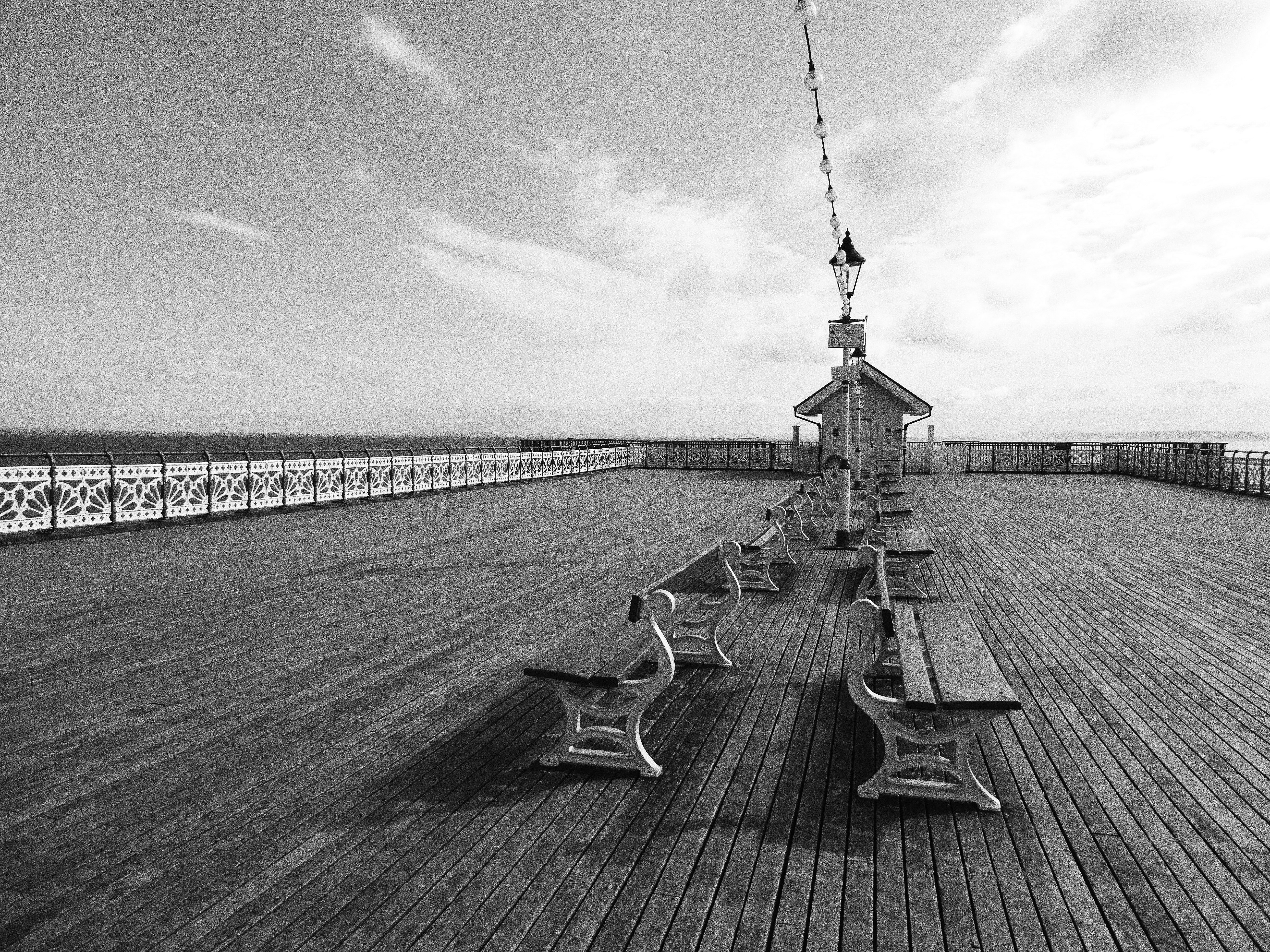


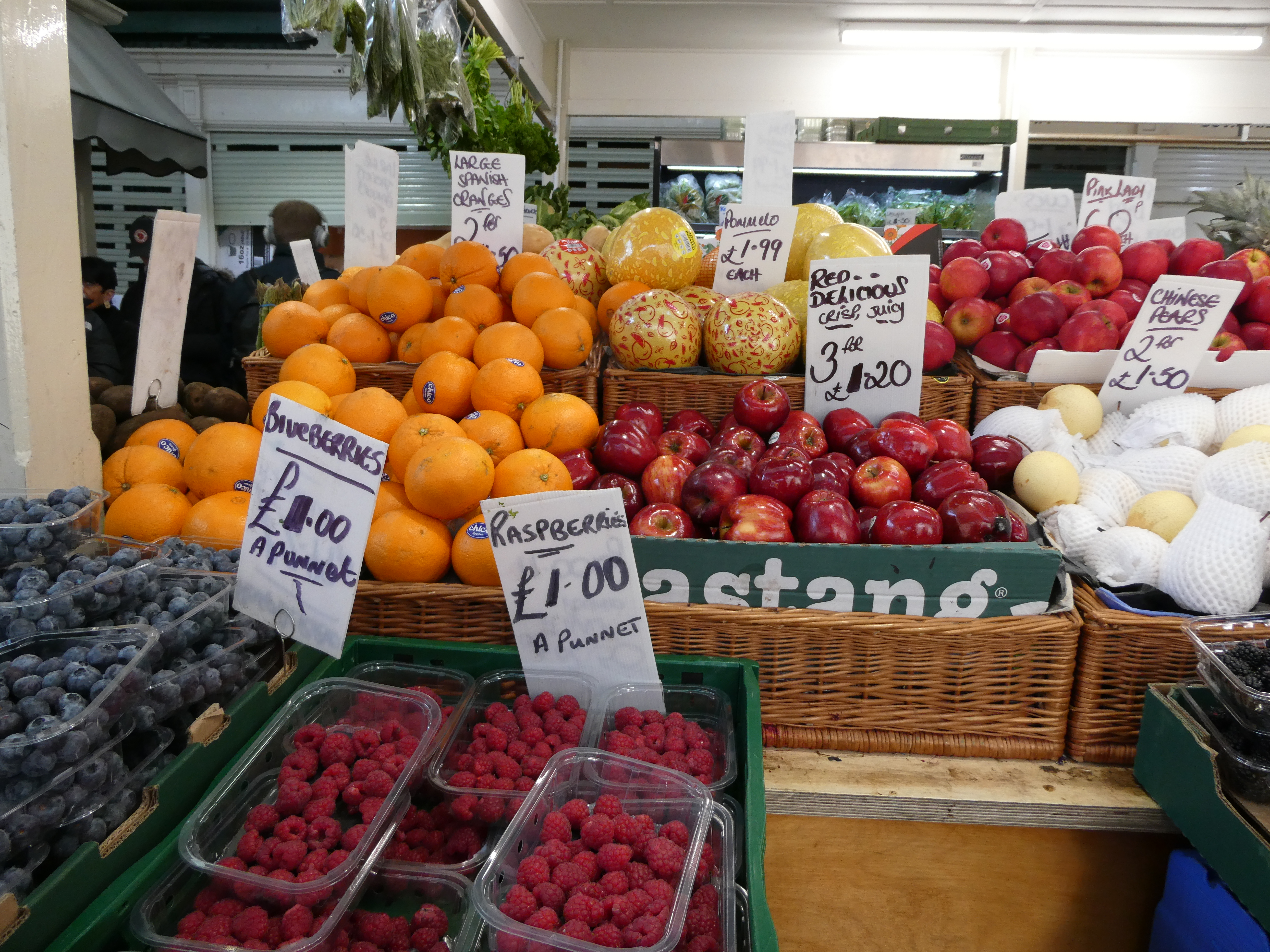

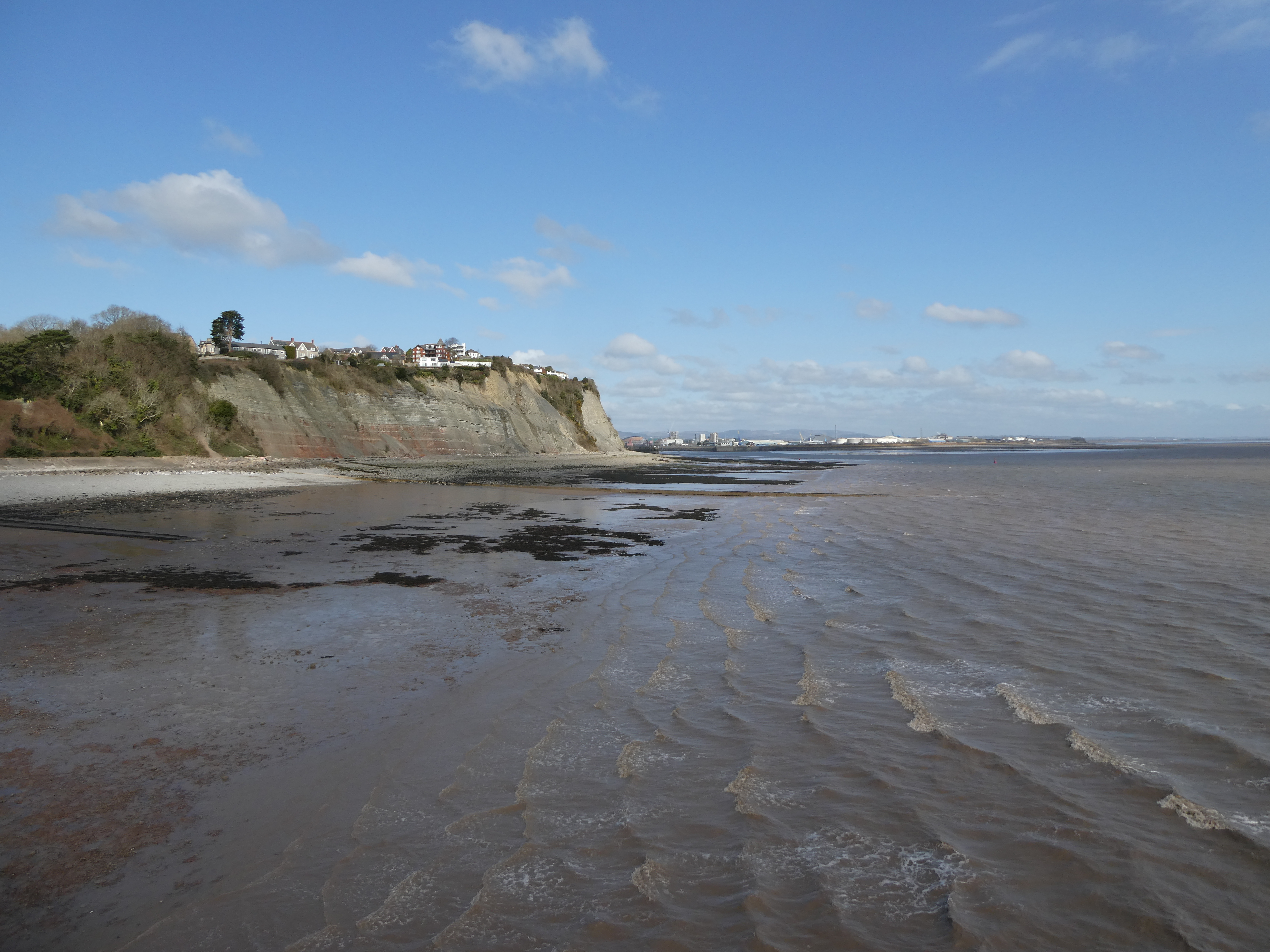



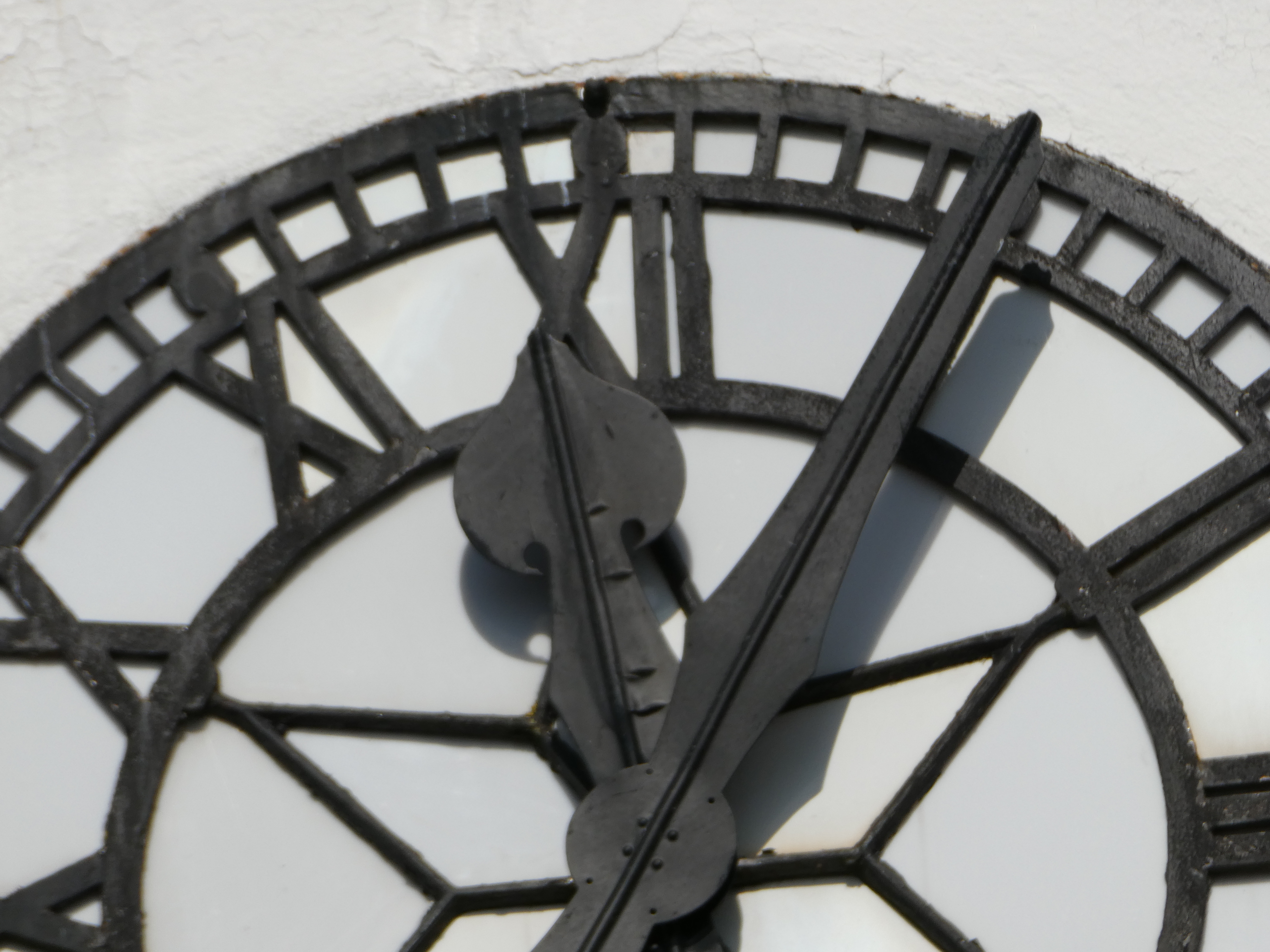
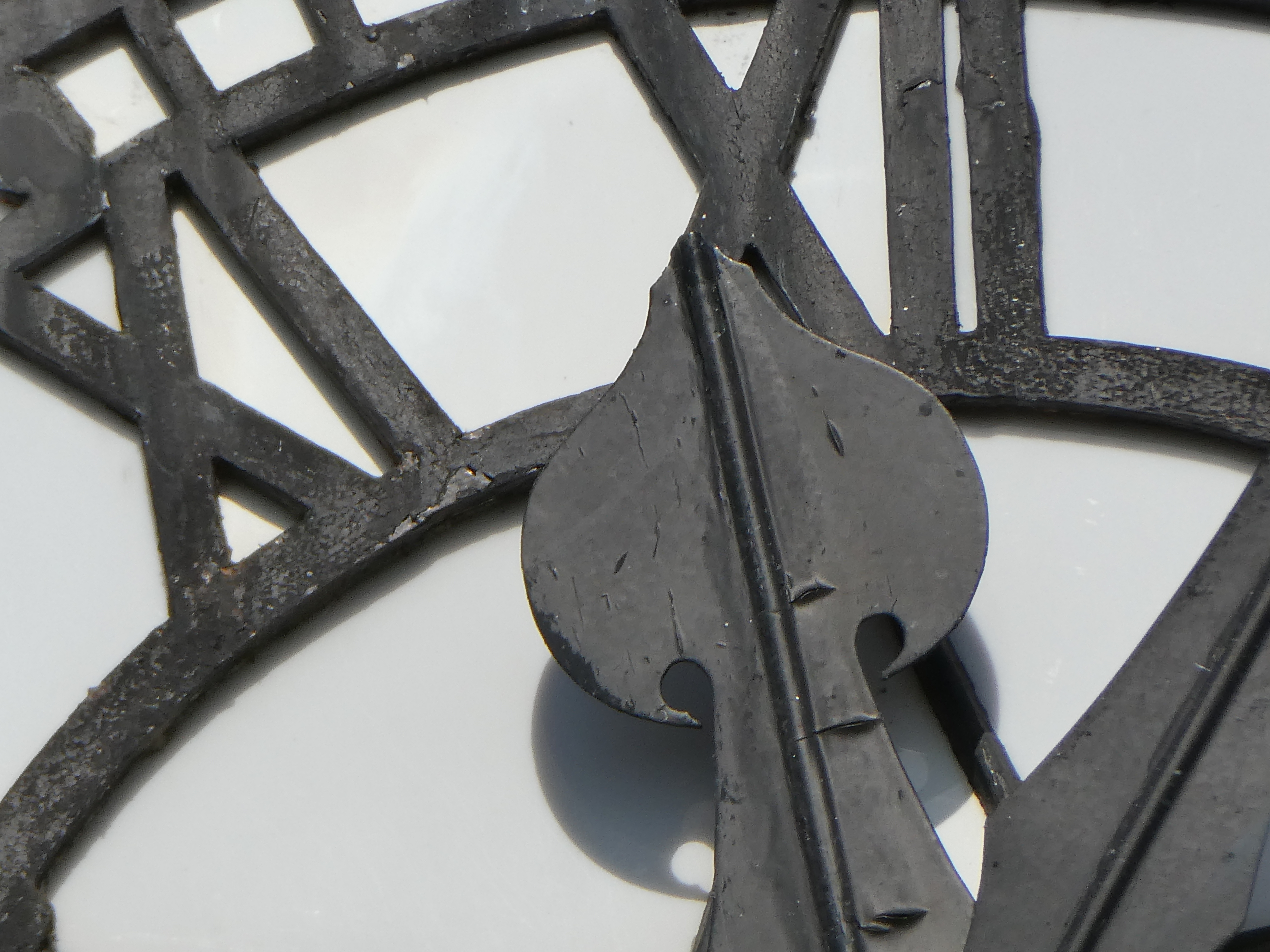


Panasonic Lumix ZS99 / TZ99: testing scorecard
Should I buy the Panasonic Lumix ZS99 / TZ99?
Buy it if...
You want a long zoom in a camera that fits into your pocket
In terms of zooming capability, there's not much else that can zoom this far, this well and will still fit in your pocket. 30x zoom with your phone will leave you with a blurry mess, whereas you'll get some reasonable detail here. It's a good idea for travel and everyday snaps for that reason, even if overall image quality isn't amazing.
You like the idea of USB-C charging for all your devices
Pretty much the only improvement from the ZS99's predecessor is the addition of USB-C charging. When you're traveling, only having one cable to charge everything is definitely a bonus.
You want a camera with a front-facing screen for selfies and vlogging
The screen can face all the way forwards, putting yourself in the frame in front of those travel highlights. Amateur vloggers may also like it for the same reason.
Don't buy it if...
You already have a ZS80 / TZ95D
It makes virtually no sense to buy this if you already have a ZS80 / TZ95D. That is unless you really, really want USB-C charging and never use the viewfinder anyway. The sensor, lens and screen are all exactly the same as before - don't assume a new camera means new tech.
You want a viewfinder
OK we've mentioned this a few times now, but the viewfinder has been removed! Why? Perhaps you don't need one. But if you do, don't get this camera.
You shoot in low light with any frequency
Low light performance is a weak area of this camera, so if it's something you do often, don't expect to take good shots with this camera. If you only shoot the odd thing after dark, it's less of a deal breaker.
How I tested the Panasonic Lumix ZS99 / TZ99
- I used it in a variety of different shooting conditions
- I took pictures at different focal lengths
- I tried the different shooting modes
I tested the Panasonic Lumix ZS99 / TZ99 over two weeks, in a range of different locations and across different shooting conditions.
I used it to photograph landscapes and typical travel subjects, taking pictures at a variety of different focal lengths. I also took photos of animals to test the focus tracking.
I took the ZS99 indoors to evaluate what happens when light is low, as well as shooting in very bright sunlight and more overcast conditions.
First reviewed April 2025
VistaPrint photo book review
VistaPrint offers eight photo book sizes in square, portrait, and landscape formats, which range in size from 13 x 10cm (5.1 x 3.9 inches) to 39 x 29cm (15.4 x 11.4 inches). You can have up to 120 pages in a single photo book, although you’ll have to pay £1.50 extra for every two pages beyond 24. Layflat binding is also available on selected sizes for an extra £1.50 per page, and two stocks are available to choose from: Standard and Premium Glossy, the latter of which costs £10.50 more. A photo cover costs an additional £6.50.
The editor for creating a VistaPrint photo book is available both online in a browser and offline as an app for Windows or macOS systems. Books can be created from scratch or using VistaPrint’s Smart Assistant, which judges your best photos from those you’ve uploaded and automatically sets the layout, while still letting you edit as you wish.
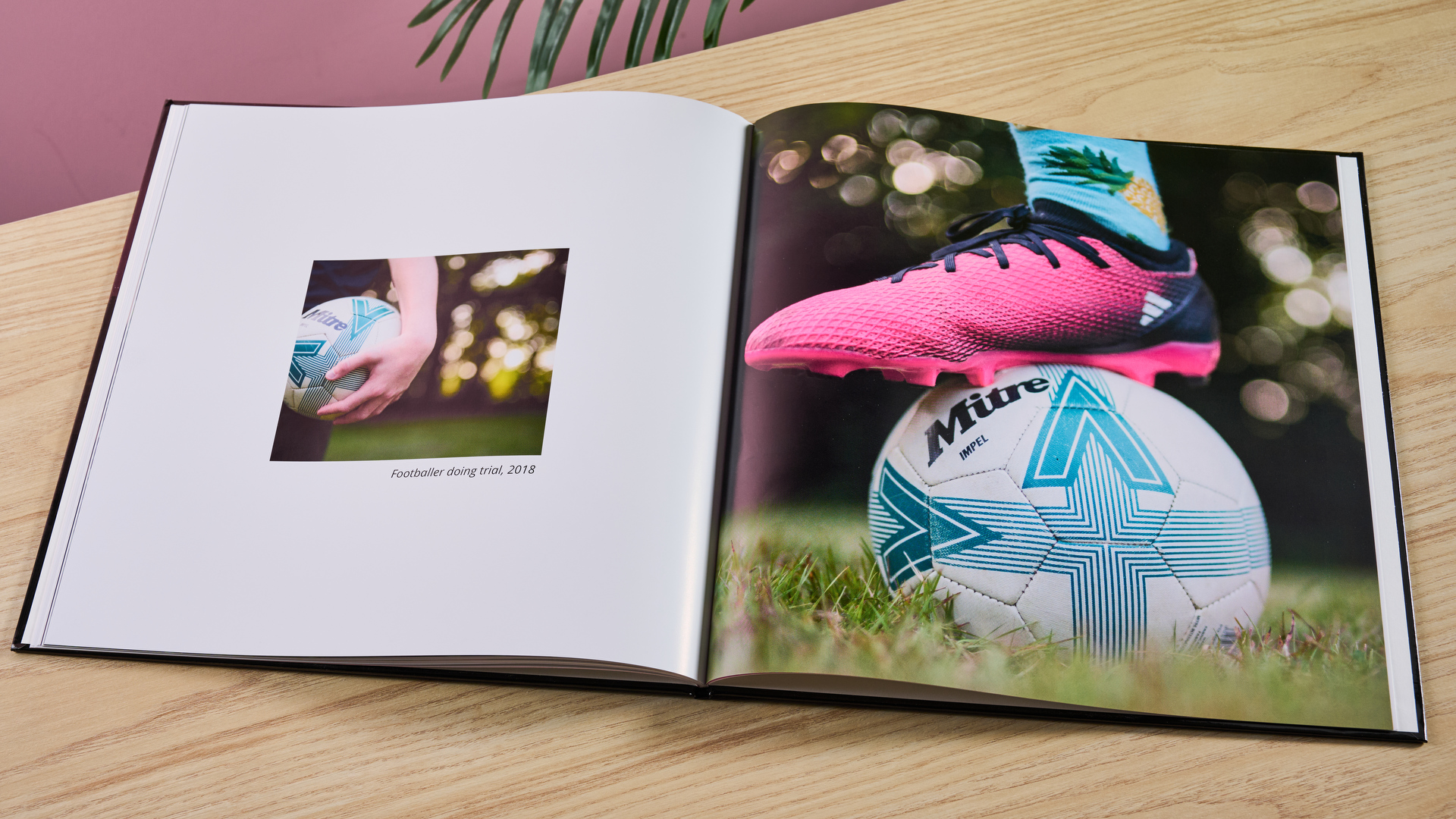
Navigating the editor is easy thanks to its clear interface and toolbars for easy access to common elements. I created a book from scratch, although, annoyingly, VistaPrint still thrusts a preset layout upon you, which adds to the labor as you delete the blocks you don’t want.
On the other hand, if you need some inspiration, a menu of template layouts is available for instant insertion, with options containing various combinations of image and text blocks.
Inserting photos is simply a case of inserting image blocks and adding your photos, which can be done in three ways: uploading them in bulk and selecting them from a menu, clicking on a block to bring up a file explorer, or dragging and dropping the file from your computer.

You can then drag the corners and sides to resize your photos as you see fit. However, you’ll be disappointed if you want exact measurements, as there aren’t any, so you’ll have to rely on your eye. Thankfully, moving boxes can be made using the arrow keys, which certainly helps with fine-tuning layouts.
Other common keyboard shortcuts also work in the editor, such as those for copying, pasting, and undoing. However, you can’t select multiple blocks with Ctrl- or Shift-clicks, which is a shame.
Snap lines for horizontal and vertical centers are present, although somewhat frustratingly, they don’t always appear. For instance, I didn’t get a vertical center line when trying to align an image block on the back cover. However, both horizontal and vertical snap lines also appear when lining up a block with another, which is very useful.
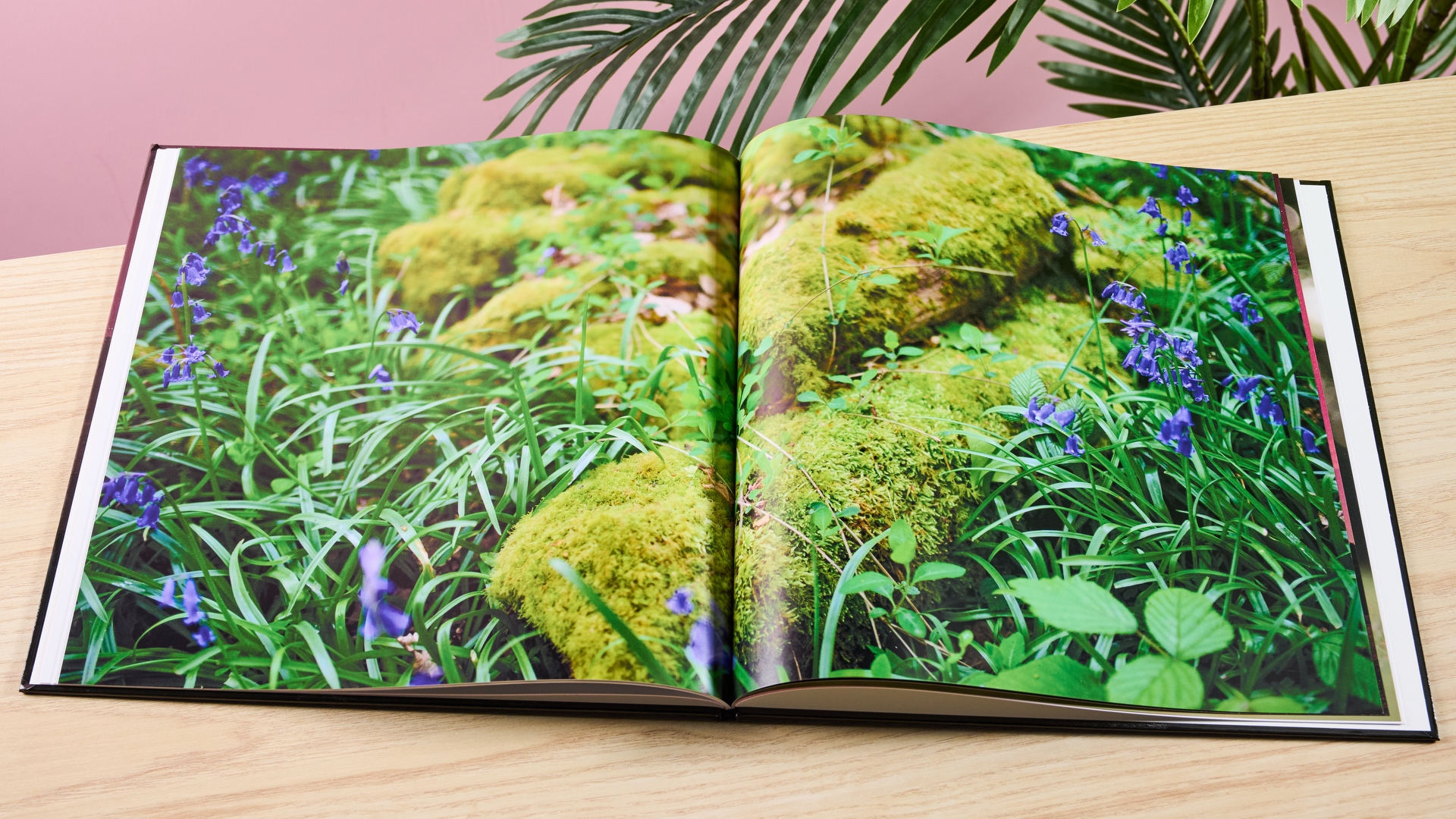
When you click on an inserted photo, a popup menu appears with a slider that lets you zoom in and out of the image within its box. You can also drag the image around within the box, allowing you to effectively crop photos with ease.
This menu also has options for moving your image to the front or to the back relative to other boxes, as well as rotate and flip functions. There’s also a filter menu with Black & White and Sepia effects to choose from.
There’s also an Auto Enhancement feature, but there’s no explanation as to how this actually works. As far as I could tell, it makes images brighter, which works well in some cases, but can lead to overexposure and oversaturation in others. More annoyingly, I couldn’t find a way to turn it off permanently; the best I could do was click the delete enhancement button in the top toolbar, but I had to do this every time I inserted a new photo, which was mildly irritating.
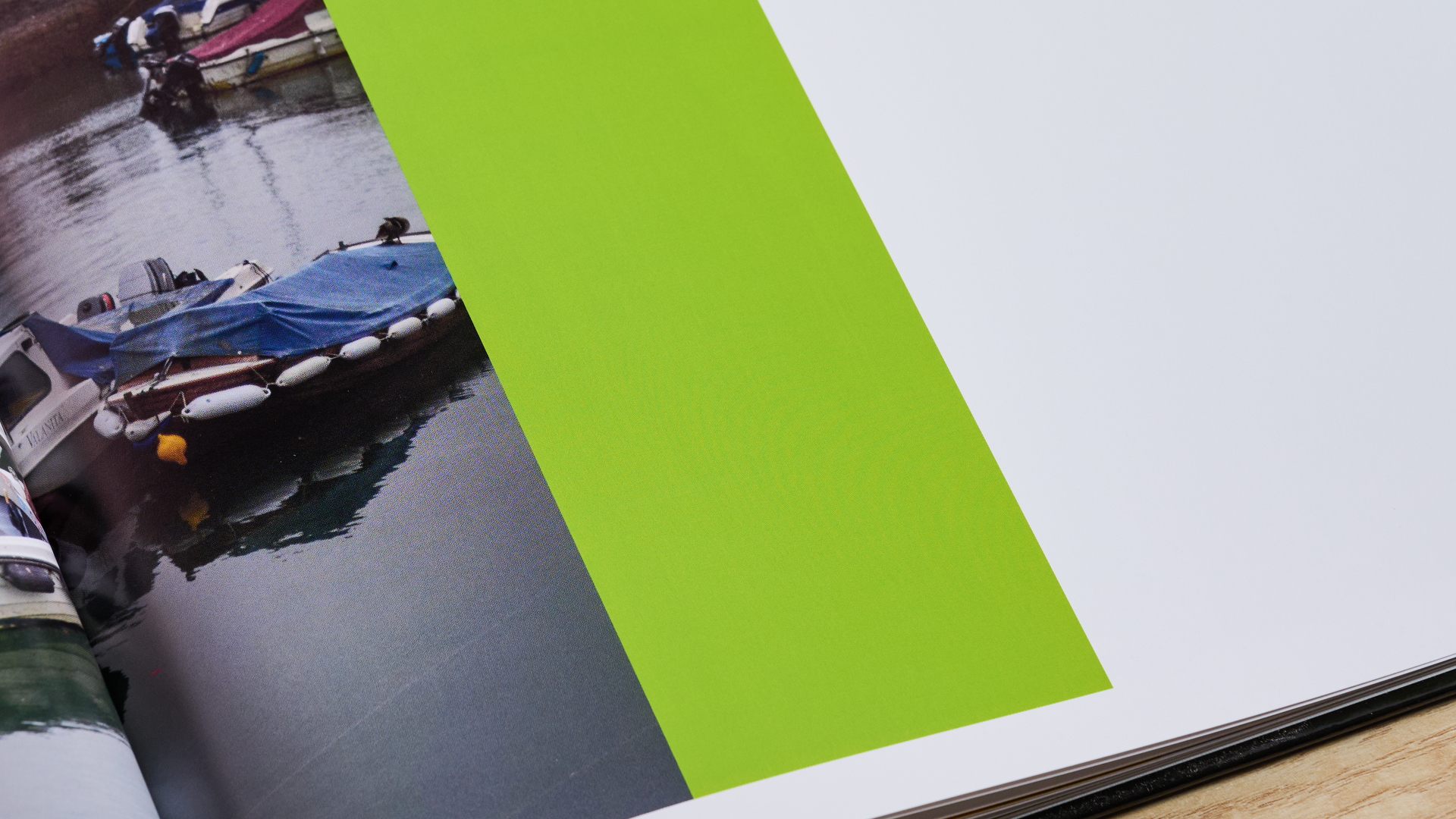
Different background colors are available should you want them, but the options are limited since there’s no color wheel or hex code input for inserting any shade you like.
There are far more framing and masking options, ranging from basic looks to more ostentatious offerings. Various clip art stickers are available too. As for text, VistaPrint offers a good number of fonts to choose from as well, along with the usual point sizes, colors, and basic formatting options.
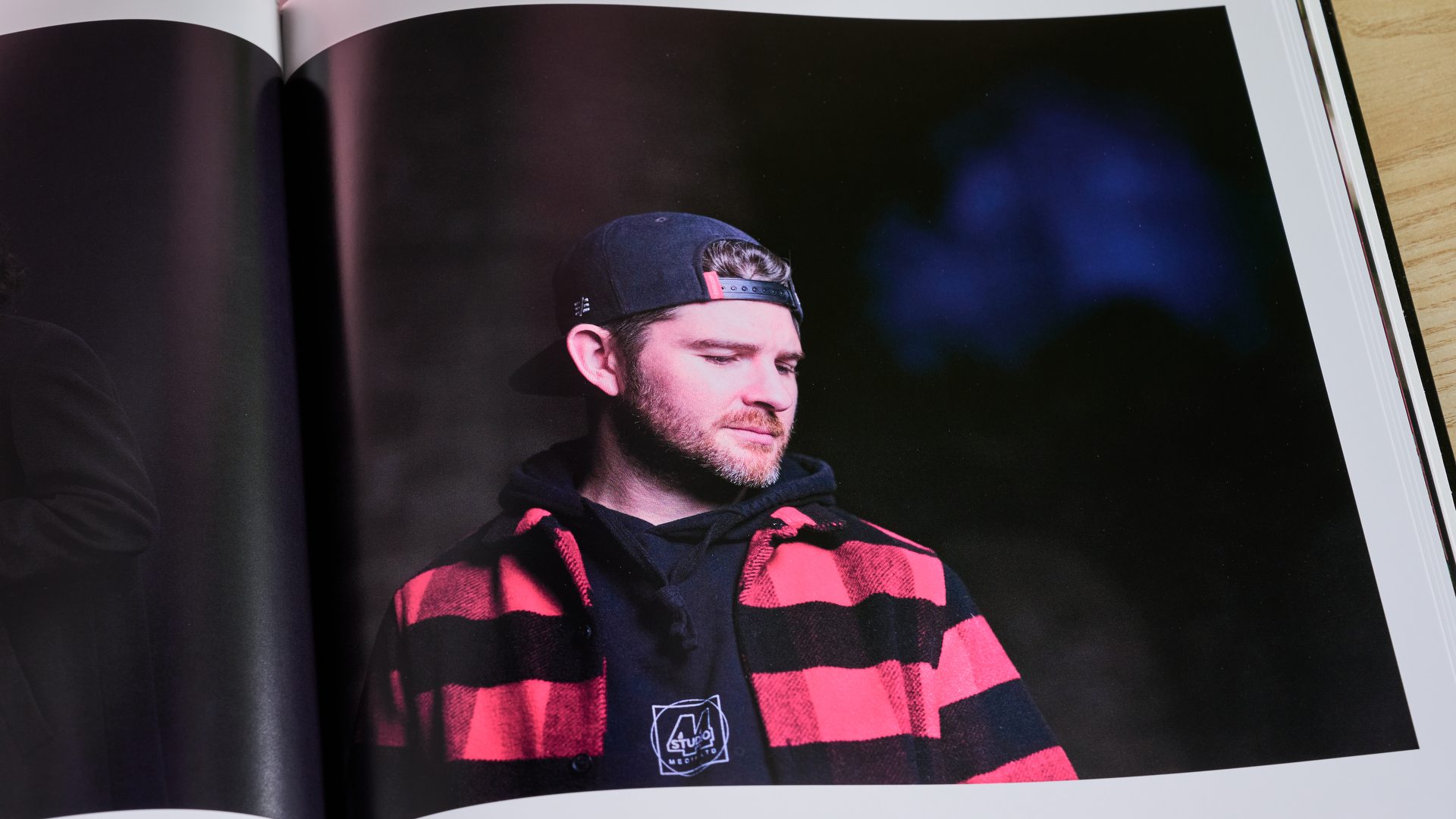
There are a few snags with the editor that are worth pointing out. Firstly, I couldn’t find a way to remove a frame or mask once inserted, which was frustrating and meant I had to delete the block entirely to eliminate it. I also couldn’t scale our TechRadar logo small enough to fit along the spine, despite being able to fit text here.
Other issues include black backgrounds obscuring the margin lines of the spine, and smaller images appearing with strange artifacts, which thankfully remedies itself once you zoom in, so it seems this is merely a GUI issue.
Popups occasionally appear reminding you to save your work, although an autosave feature wouldn’t have gone amiss. Saving is usually quite quick, although it was somewhat sluggish when returning to a saved session.

I also had a popup stating that photos were taking longer to load than usual when starting a new session, recommending I wait before making further changes to the book. Thankfully, this was only a momentary issue.
The projected delivery date for my order of a XL Square (30 x 30cm / 12 x 12 inch) photo book was two weeks, and unfortunately, unlike other services, there’s no expedited option for quicker turnarounds.
Such photo books cost £49.99. I was lucky to catch VistaPrint in a sale, so claimed a 40% discount, bringing my order to £35.69, which included a photo cover and a few extra pages beyond the default 24. Delivery cost an extra £5.50, bringing my overall total to £41.19, although orders over £40 have free delivery.
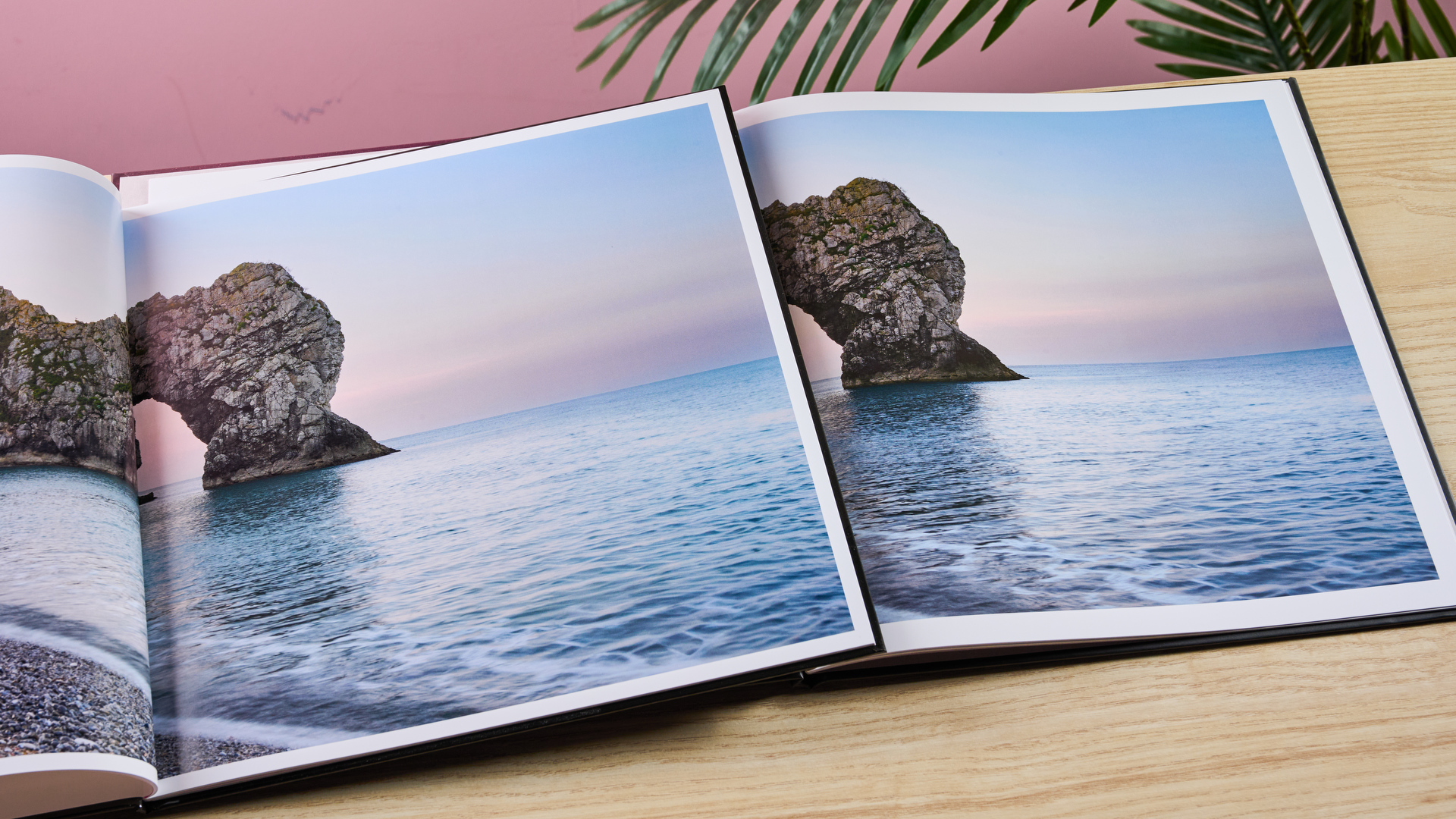
The book arrived about four days earlier than estimated, which was a pleasant surprise. However, unfortunately there was some damage to the top of the spine and consequently the inside corners of nearly every page, as if it had been crushed from the top.
This wasn’t exactly surprising given how thin the cardboard sleeve was, with no bubble wrap or protective padding of any kind around the book. Thankfully, the damage was subtle, and much of it was hidden from view by the curve of the pages towards the binding.
The printing quality was excellent, though. Images were sharp with no blurring or artifacts. Colors were rendered with plenty of accuracy and vibrancy, which was especially noticeable on full-page spreads, making them a real highlight of the book.
However, some images and text had a slightly jagged edge to them, as did the solid blocks of color, which also contained a few outlines in a darker shade. There were also a few stray dots of color on white backgrounds, but these were infrequent and hard to notice owing to their minute size.
On the whole, though, the VistaPrint photo book delivers pleasing results, especially for those looking to showcase larger photos. Combined with its capable and intuitive editor, this is a service worthy of your attention.
Should I buy the VistaPrint photo book?
Buy it if…
You want an easy editor to use
For the most part, the editor is clear and simple, and various standard keyboard shortcuts can be used to make things even easier.
You want a good price
VistaPrint’s photo books are good value for money, undercutting many of its rivals, and by a considerable amount in some cases.
Don't buy it if…
You want precision and color options
Unfortunately, VistaPrint’s photo book editor provides no photo measurements nor a color wheel or hex code input for backgrounds and solid blocks of color.
You want a quick turnaround
Two weeks is the fastest delivery time VistaPrint provides, which is a shame since there are quicker services out there (I did receive mine earlier than expected, though).
VistaPrint photo book review: also consider
Shutterfly
If you’re looking for precise control over photo resizing, then Shutterfly could be for you. It displays image dimensions in inches, which is very useful for those with specific layout requirements. The options for tailoring templates are limited, and we didn’t find its editor the easiest to use, but it’s still competent enough. Read our Shutterfly photo book review.
Mimeo
Mimeo offers another simple and easy to use photo book creator, which we found helped to offset its rather limited design and material choices compared to the competition. We also thought the shipping costs were too steep, but if you prize a great user experience and a high-quality end product, this could be the service for you. Read our Mimeo photo book review.
How I tested the VistaPrint photo book
- Made and ordered photo book
- Followed TechRadar's photo book template
I used VistaPrint’s online editor to order a 12 x 12 inch (30 x 30cm) XL Square photo book with 28 pages, following our TechRadar template, which includes a variety of photos, containing both people and landscape, with varying colors palettes and exposure levels, as well as some black and white images.
Our template also contains various page layouts, in order to test the versatility of the service in question, both in terms of its editing capabilities and the final result.
- First reviewed: March 2025
- Read more about how we test
Sigma BF: two-minute review
I knew that the Sigma BF would frustrate me at times, but what I wasn't prepared for was how much I would enjoy making pictures with the camera.
This unique and boldly minimalist camera, which has been likened to Apple's products, oozes character, and despite its many design and performance concessions I've come to love it.
Yes, the 24.6MP full-frame Sigma BF's minimalist design polarizes opinion – for some it's an object of desire, for others it's a firm no. However, even hardened fans of the camera, who now include me, will admit there's maybe one concession too many.
Rated using a conventional scoring system, the Sigma BF comes up short because its limitations are many. It doesn't have a viewfinder; its touchscreen is fixed; memory is internal only (a 230GB SSD and no card slot); the 24MP full-frame sensor isn't stabilized; its ergonomics could be better; battery life is modest; and key connections ports for video, such as mic in and a headphone jack, are absent.
That said, cameras can't be reviewed purely by ticking boxes. They're creative tools, and if you find one that gets you, and brings out the creator in you, then what it scores in a review is less relevant.
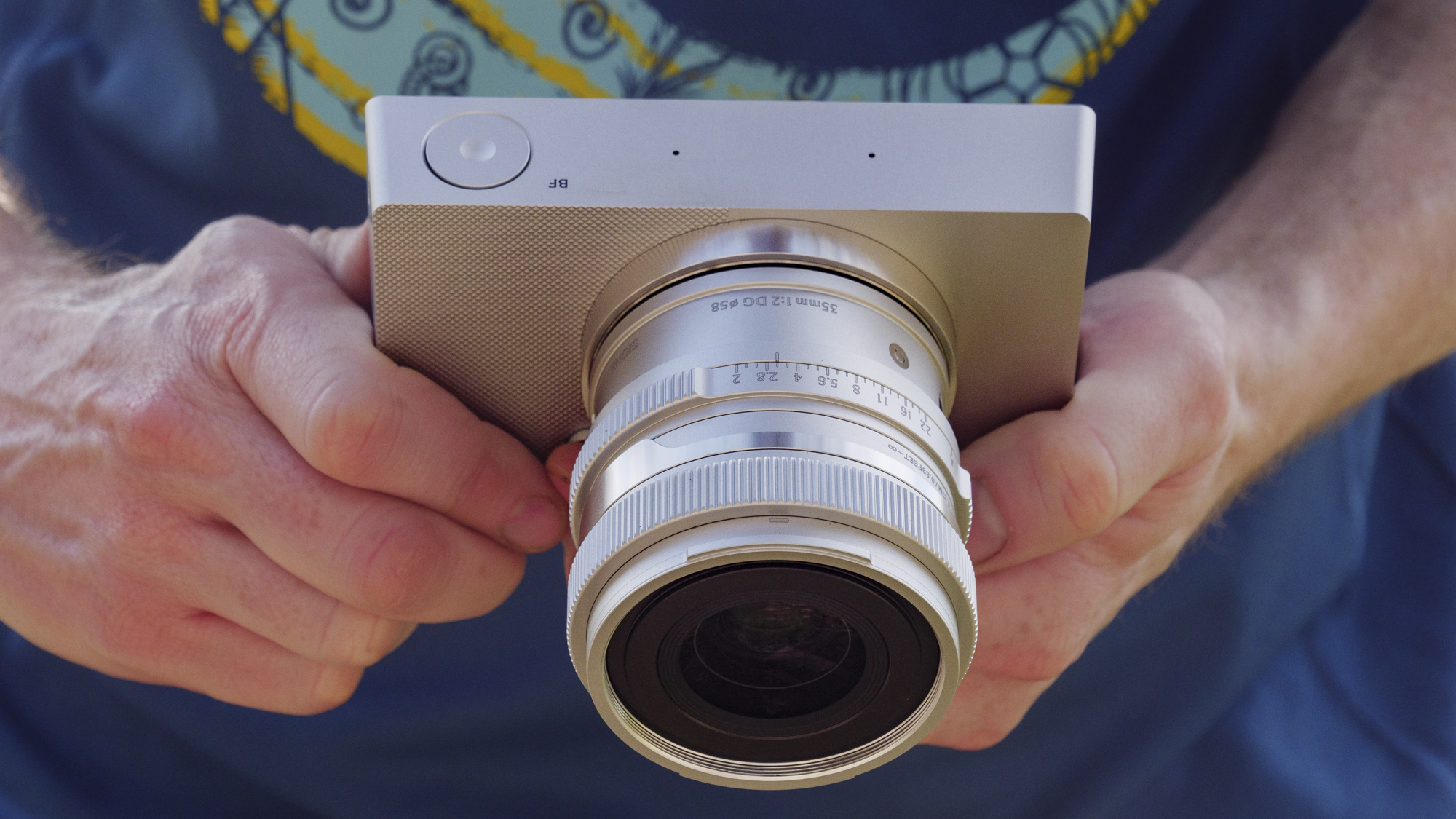
A similarly-priced, conventional mirrorless camera like the Nikon Z6 III gives you all the tools you need, wrapped in a sensible design with superb ergonomics, and it 'scores' better. However, if you want a bit of excitement, and a stunning and unique camera that can delight, frustrate, then delight again from one beat to the next, the BF is the ticket.
For seasoned photographers, there’s a re-learning process with the Sigma BF in terms of navigating its nondescript controls and minimalist menus. You need to spend some time getting to know the BF. Familiarize yourself with its quirks and its joys, and most other cameras feel somehow dull and characterless by comparison.
It's also a sensational pairing with Sigma's Contemporary I-series lenses – I had a new silver version of the 35mm F2 DG lens to match the silver BF. Sigma, if you're reading this: producing a pancake lens next, that pairs with the BF's compact body, should be a top priority.
Sigma says the BF stands for 'Beautiful Foolishness', I've read other reviewers liken it to a 'Best Friend'. For me, it’s Brilliantly Flawed and I'm a Big Fan.
Whatever its technical compromises, the Sigma BF is a design masterstroke. It's a beautifully imperfect thing that deserves its place in your hand. Relationship status? Seeing someone.
Sigma BF: price and release date
- The Sigma BF body-only costs $1,999 / £1,969 / AU$3,995
- It's available for pre-order in silver or black versions
- Sigma has also launched silver versions of multiple I-series lenses
Sigma lenses are typically around half the price of proprietary brand equivalents, but what of the brand's cameras? Well, the BF costs $1,999 / £1,969 / AU$3,995 body-only, which on the one hand is pretty steep for a 24MP full-frame camera with no viewfinder.
However, this is no ordinary camera. When you consider the BF's build quality – the chassis is machined from a single ingot of aluminum, and the camera has premium touch-sensitive controls – then suddenly it feels more reasonable.
Pre-orders are open now, and the BF is available in silver or black versions – interest in the silver version has been particularly high. However, reportedly Sigma can only make nine Sigma BF units per day, and so the lead times for orders could dwarf even those for 2024's most sought-after camera, the Fujifilm X100VI.
- Price score: 4/5
Sigma BF: specs
Sigma BF: design and handling
- Chassis machined from a single ingot of aluminum
- Nondescript controls, some of which are touch-sensitive, plus simple menus
- Internal SSD memory only, no card slot
- No mic or headphone port, just a USB-C port
A camera that's machined from a single ingot of aluminum in a process that takes seven hours, with production limited to nine units per day, should be special. The BF is just that.
It's true that the Sigma BF's minimalist design won't be for everyone. It's distinctly Apple-like in terms of its design, at a time when retro cameras like the Fujifilm X100VI are trending. Personally, I've found the BF to be one of the most fascinating cameras in recent memory.
Its premium quality is obvious, right down to the smallest details – even the the metal body cap, which I dedicated an entire article to. The camera is weather-proof and feels rock-solid – I'd fear more for any surface it came into contact with, even though of course I wouldn't want to thrash such a lovely camera around.
With its clean lines and stripped-back control layout come various design concessions, particularly if you've been spoilt by other mirrorless cameras that place plentiful controls at your fingertips.
There's no grip to speak of, just a textured front half; a design choice that feels more aesthetic than anything else, and which complements the matte finish beautifully.
As such, the BF is best used with small lenses, especially Sigma's I-series of Contemporary primes. Sigma was on the ball in launching silver versions of some I-series lenses to match the new silver BF – I had the new silver 35mm F2 DG for this review.
These I-series lenses are pretty small, none more so than the 45mm F2.8. That said, there's no true pancake lens for Sigma's L-mount, and I'd like to see one to full complement the BF's ergonomics.
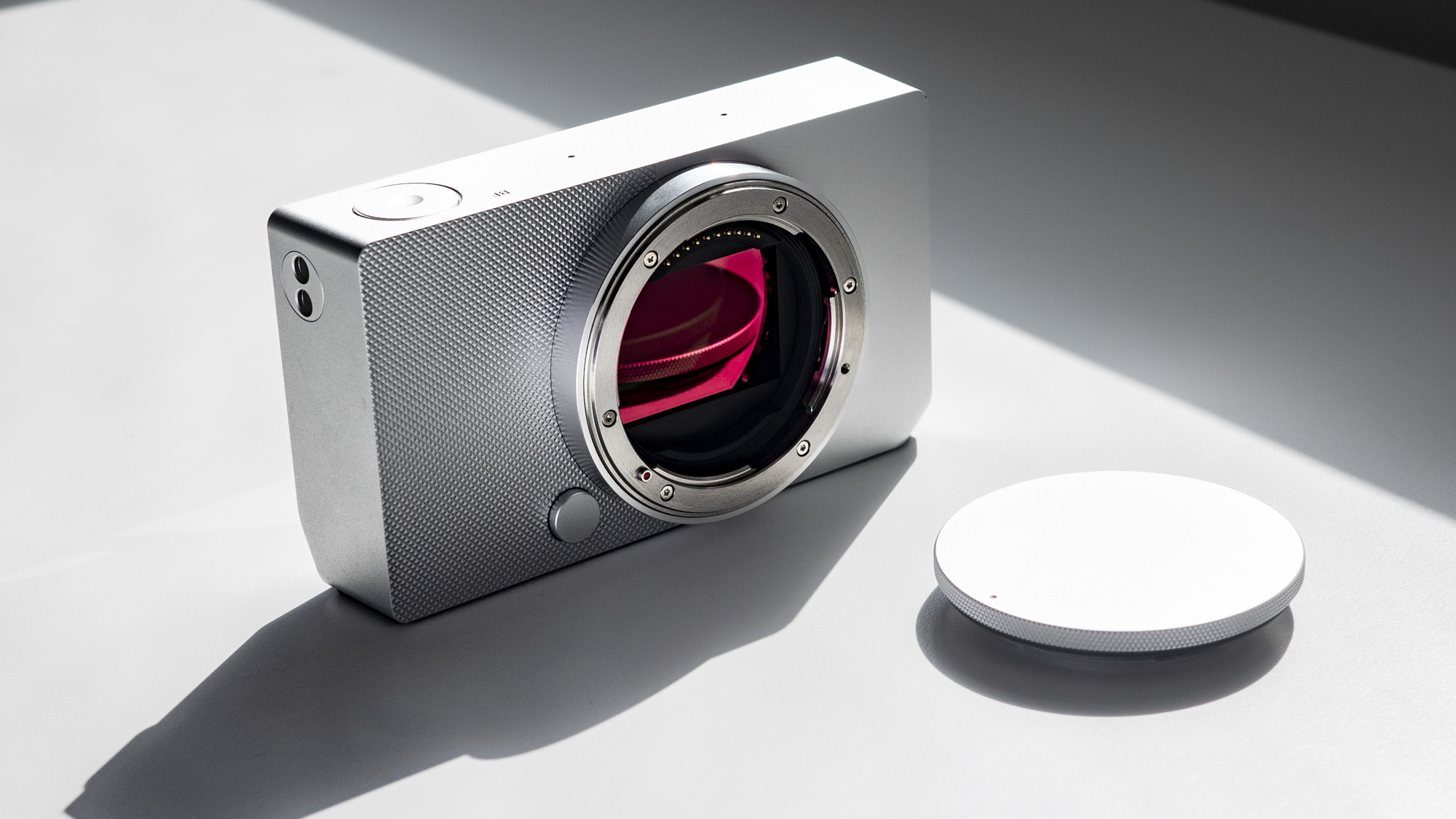

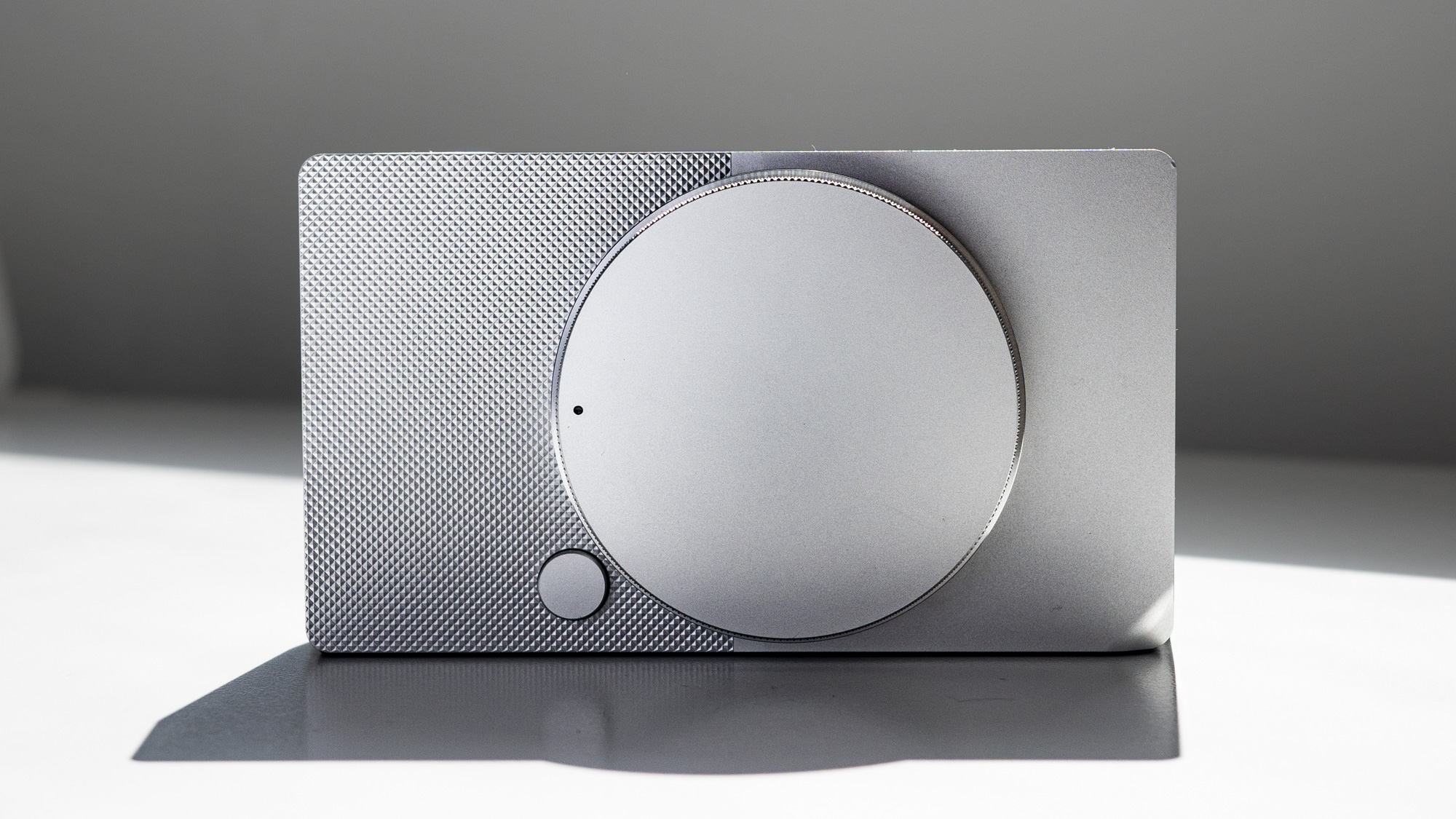
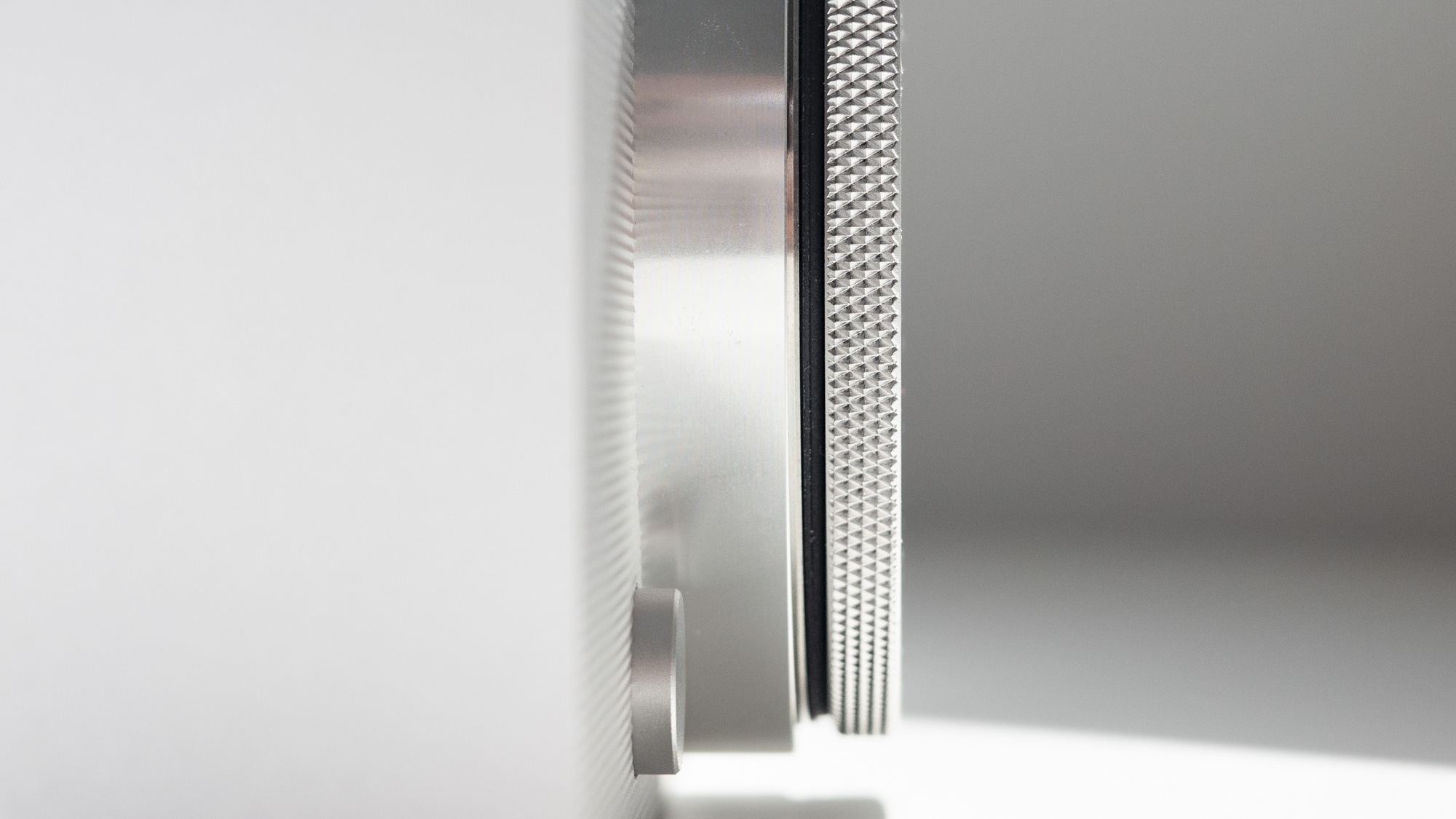

Each button and control is beautifully dampened, and – get this – two of the buttons are touch-sensitive: the menu button and the playback button. If you half-press the playback button, your latest image pops up on screen until you let go. Fully press the button in and you enter playback mode. Quality.
Markings on the buttons are suitably nondescript, so it'll take you a while to workout what each one does. Also, once you're in a menu, it's not all that obvious how to make exposure changes – a prize goes to whoever works out how to select or deselect the auto option in exposure settings the fastest.
Finding commonly used settings is no problem, though. There are three simple menus to navigate: the main one with your most-used settings, and two sub-menus. This simple setup feels very Hasselblad X2D 100C.
In that top menu, you can scroll through the options using the control wheel, with the latest setting being displayed on a charming, tiny LCD. Via this, quick changes to settings like color profiles are possible.

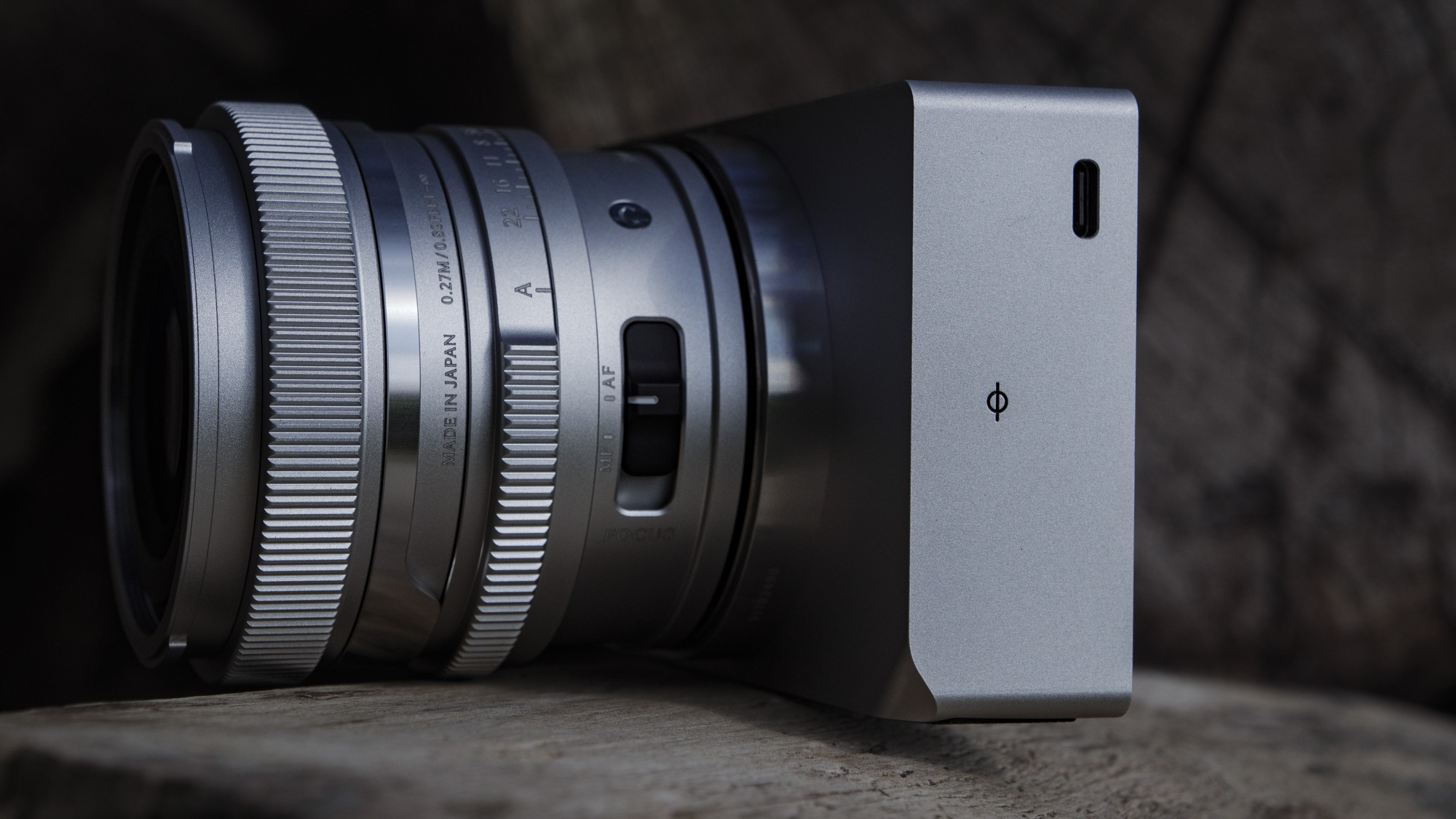

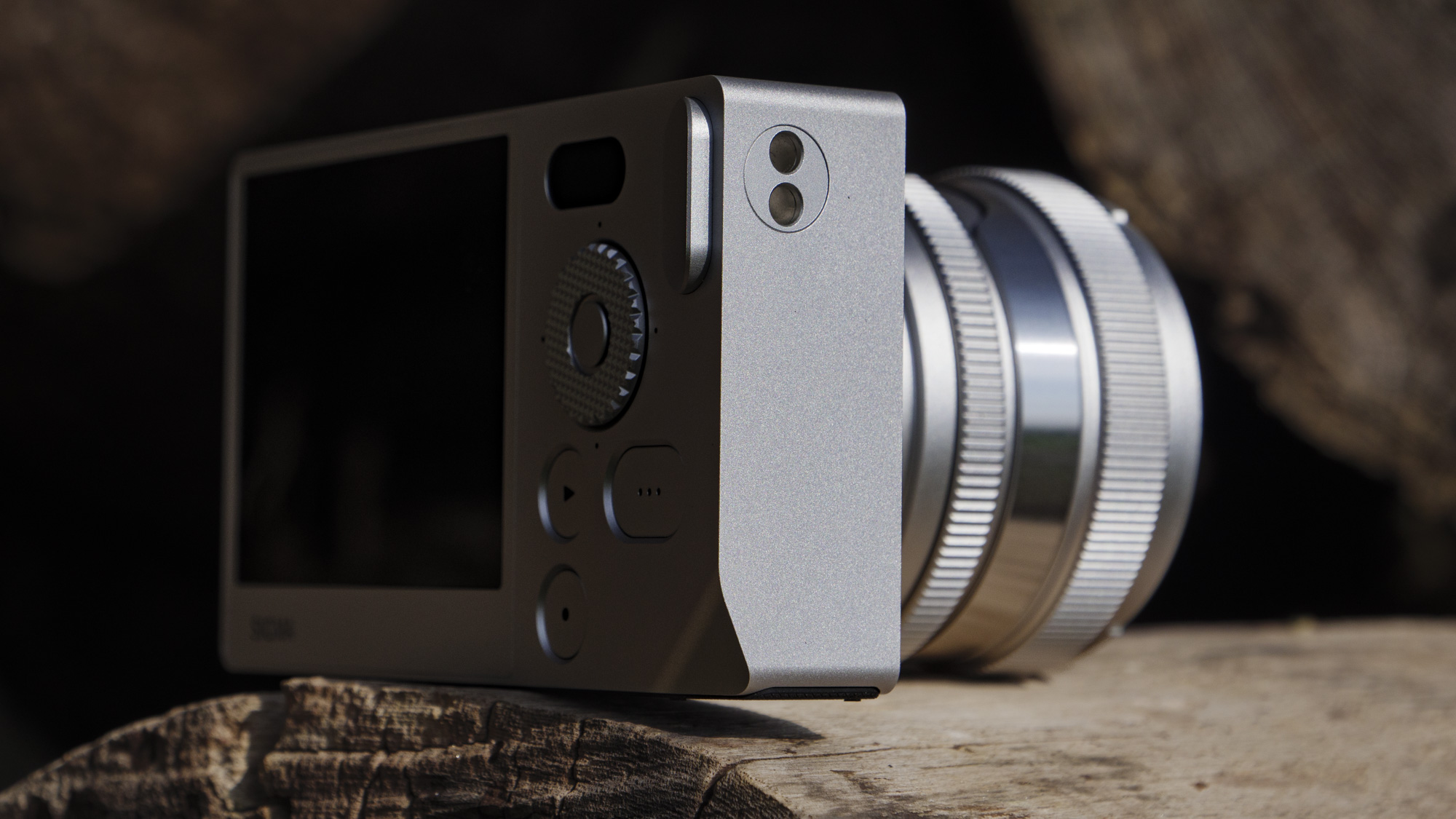
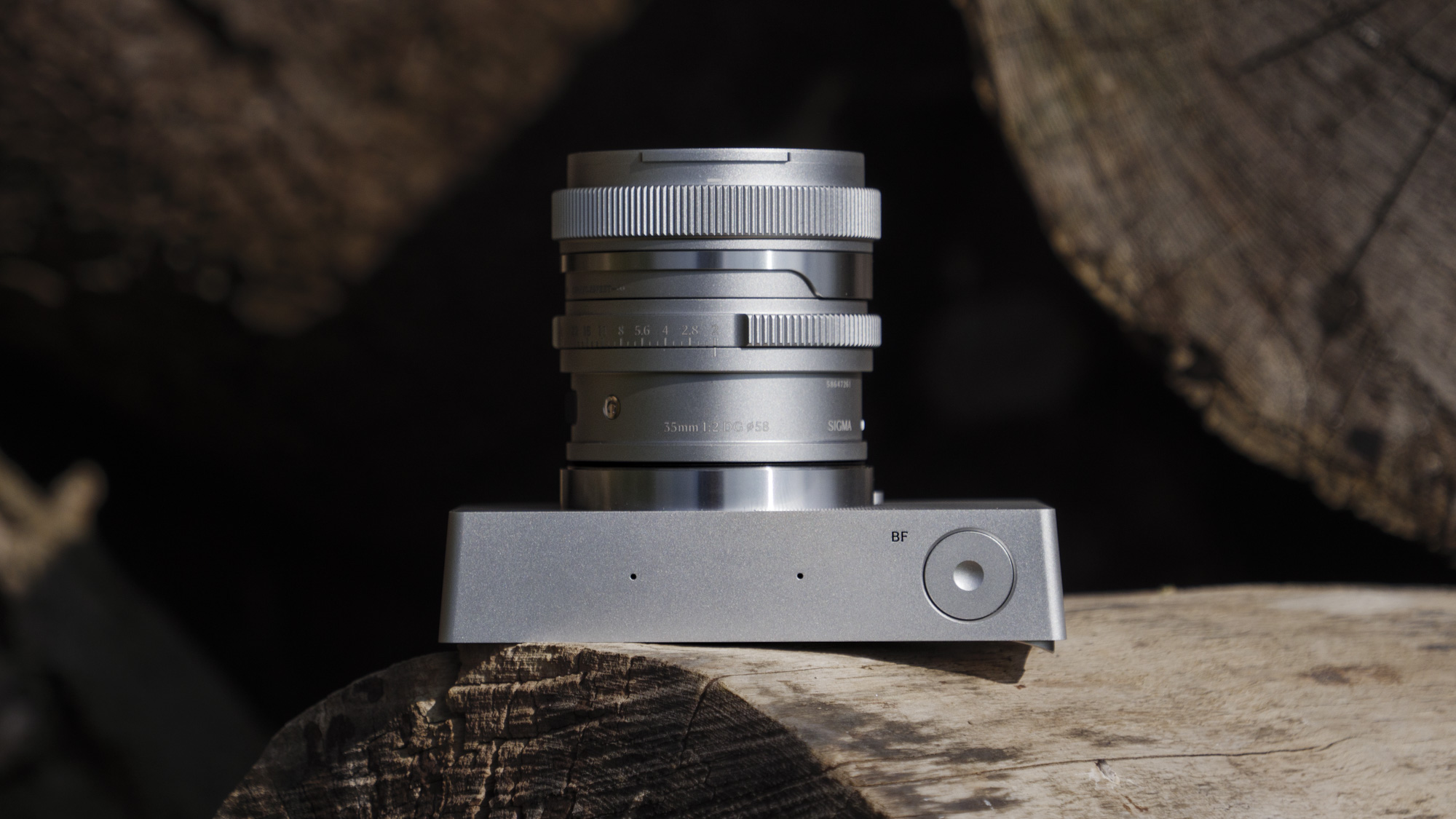
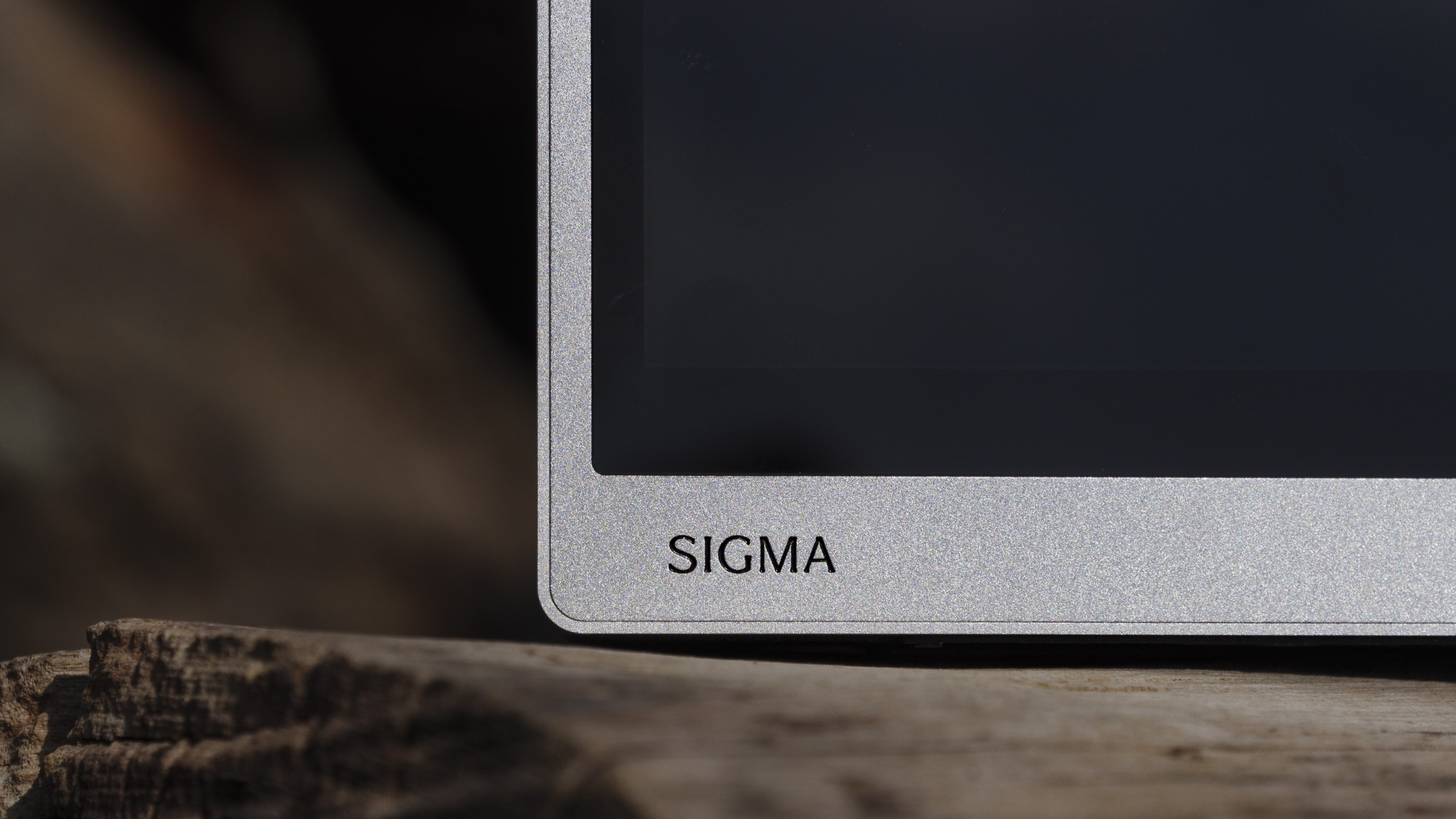

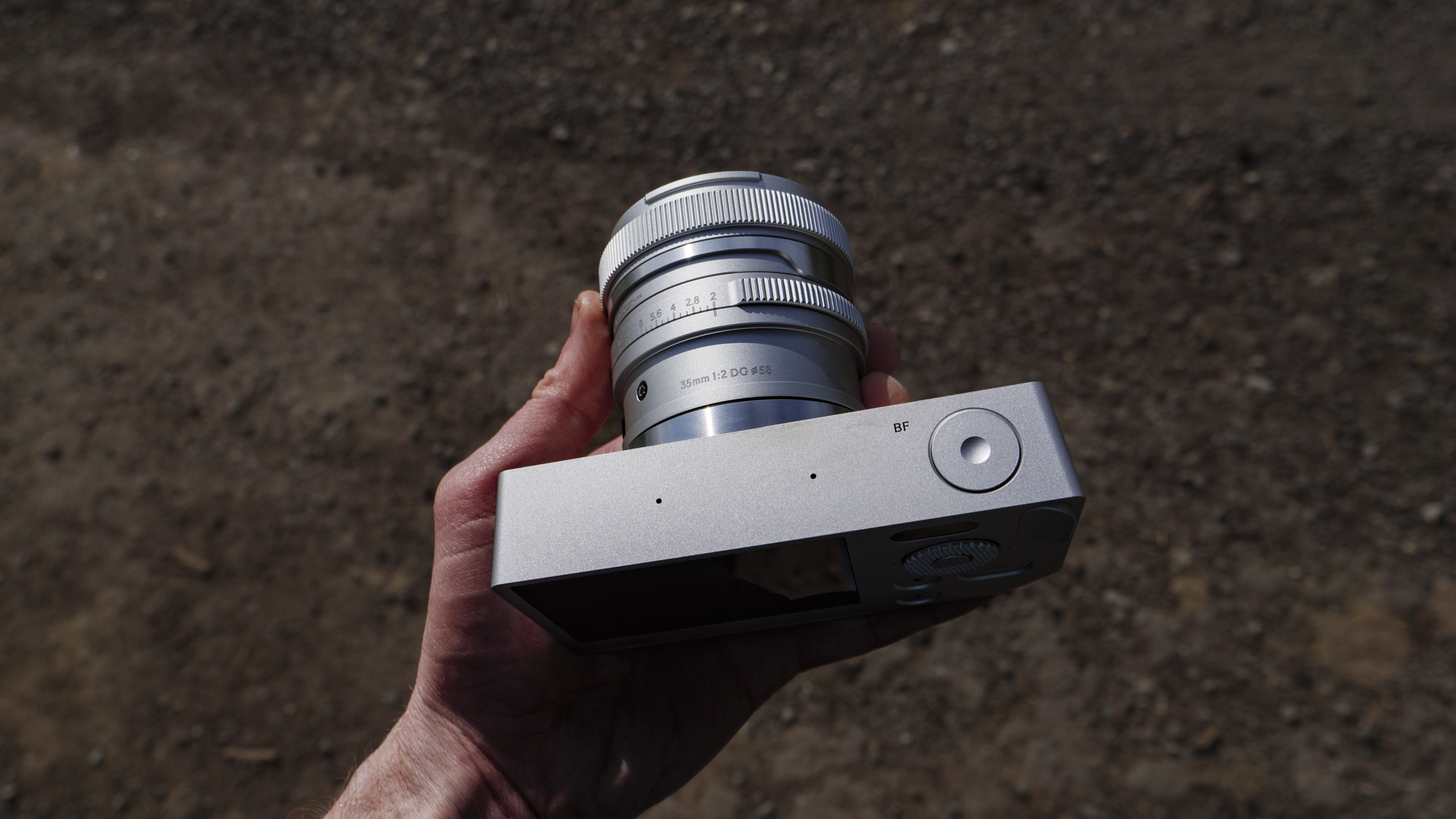

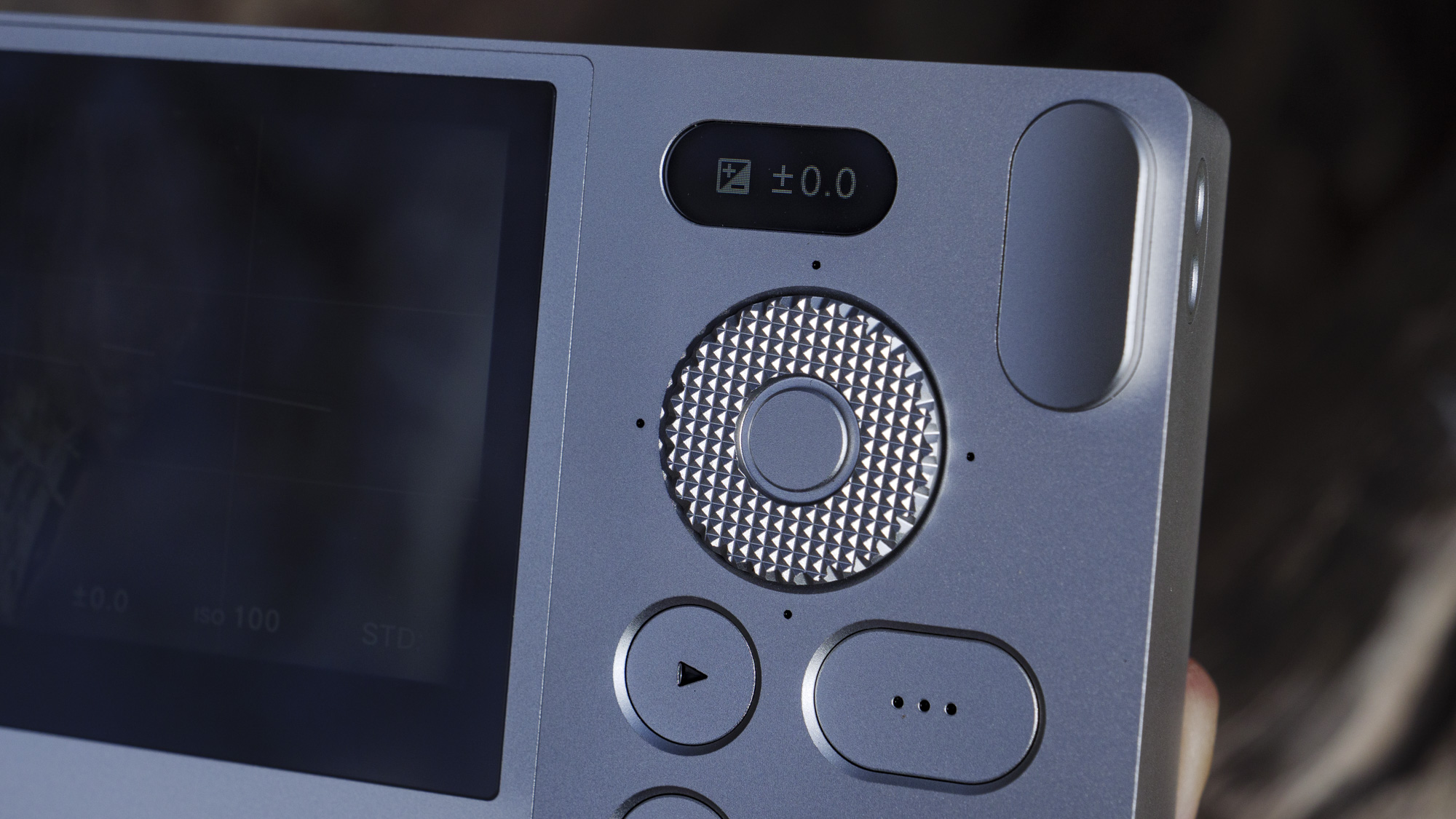
Arguably Sigma's most controversial design choice was to limit storage to an internal SSD only. That's fine, so long as the SSD is reliable – and we've no reason to believe it won't be – but if there's an issue with it the camera becomes useless without a costly repair (assuming that is indeed possible).
I love cameras that include built-in memory as a fail-safe, but that's when it's in addition to removable media such as an SD card. Internal memory only will be a dealbreaker for some people.
To upload photos from the BF you'll need to connect it via the USB-C port, which is also used to charge the camera. I found the upload process super straightforward, and speedy to a MacBook Pro.
The exterior is suitably stripped-back too, meaning there's no mic input, headphone jack, HDMI or even loops on both sides for a shoulder strap, just on one side for a wrist strap.
I don't mind all of the above. What I did miss the most is having a viewfinder or a tilt / vari-angle screen. In bright sunlight I naturally found myself bringing the camera up to my eye as if a viewfinder was there to compose the shot, while at awkward low angles I wished for a tilt screen.
Both or either of those display features would make the BF more practical, but I understand why they're absent – how could Sigma otherwise make such a beautifully minimalist camera?
- Design score: 4.5/5
Sigma BF: features and performance
- 8fps with continuous AF, recorded onto rapid internal SSD
- Below-average 260-shot battery life
- No IBIS, just electronic stabilization for video
If you want an all-singing all-dancing mirrorless camera, the Sigma BF is not for you. Sure, its startup time is rapid, but it lacks many of the powerful features that we've come to take for granted in cameras at this price point and above.
Take the 24.6MP sensor – it's not stabilized. That's not a dealbreaker for what will surely be an everyday camera for photographers, and used with fast-aperture prime lenses, but I'd love to see it – after all, in-body image stabilization is part of an internal component, and so including it wouldn't impact the BF's minimalist design.
For video, there's the option for electronic stabilization, which imposes a 1.25x crop to the image area, meaning it's not available for the 6K option.
The burst shooting with continuous AF drive mode maxes out at 8fps, so it's not the quickest. However, sequences can run for longer than you'll likely ever need: up to 350 raw images or 1,000 JPEGs. Buffering time for those sequences, before the camera is ready once more to perform fully, is shorter than on most rivals too.
As mentioned, there's no card slot, and images are saved to an internal 230GB SSD. You can upload photos via the multi-purpose USB-C 3.2 port, which is rated up to 10Gbps and can also be used for any one of the following functions at a time: external video output, charging and power delivery, cable release, external mic, and headphone output.
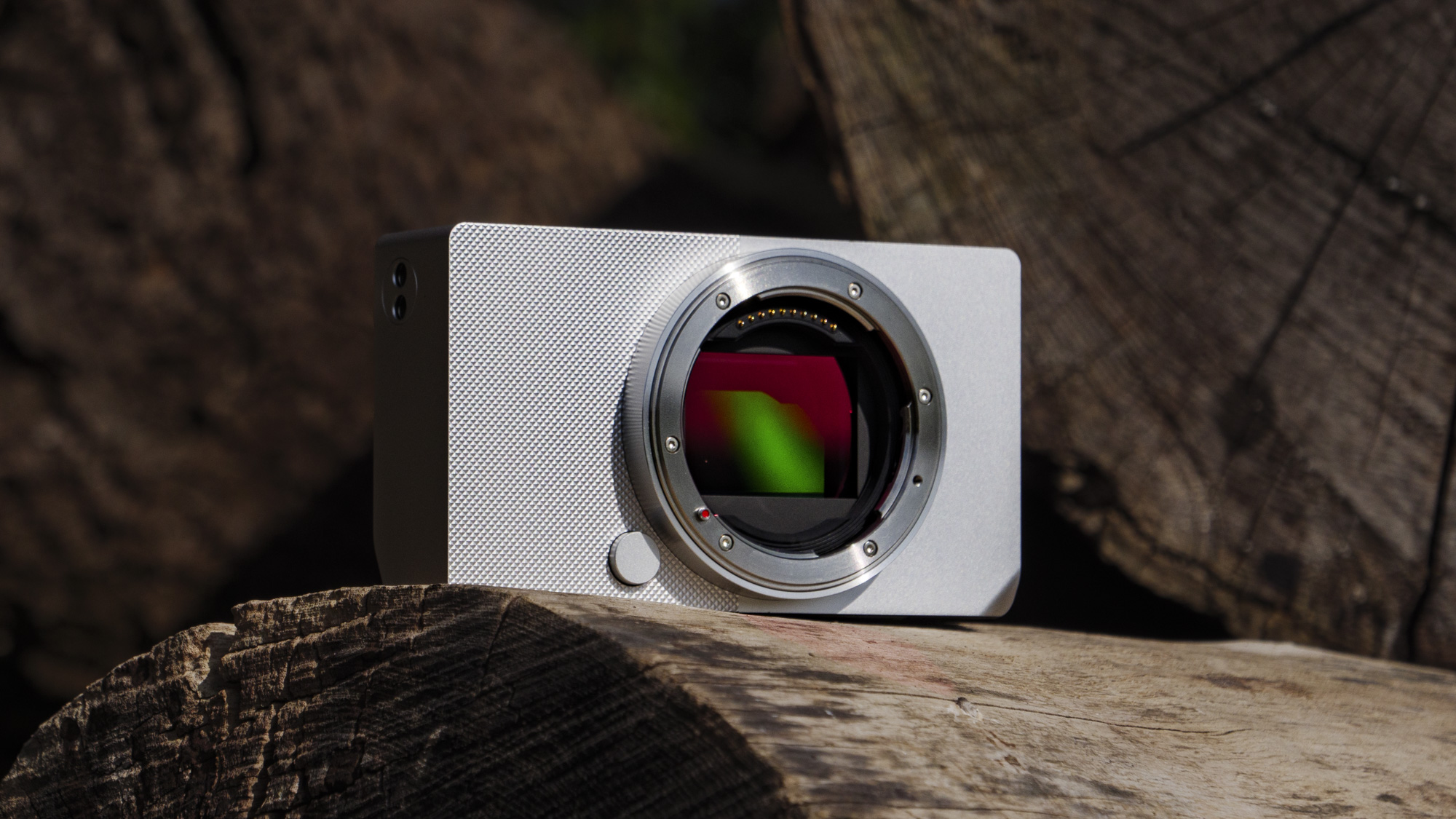
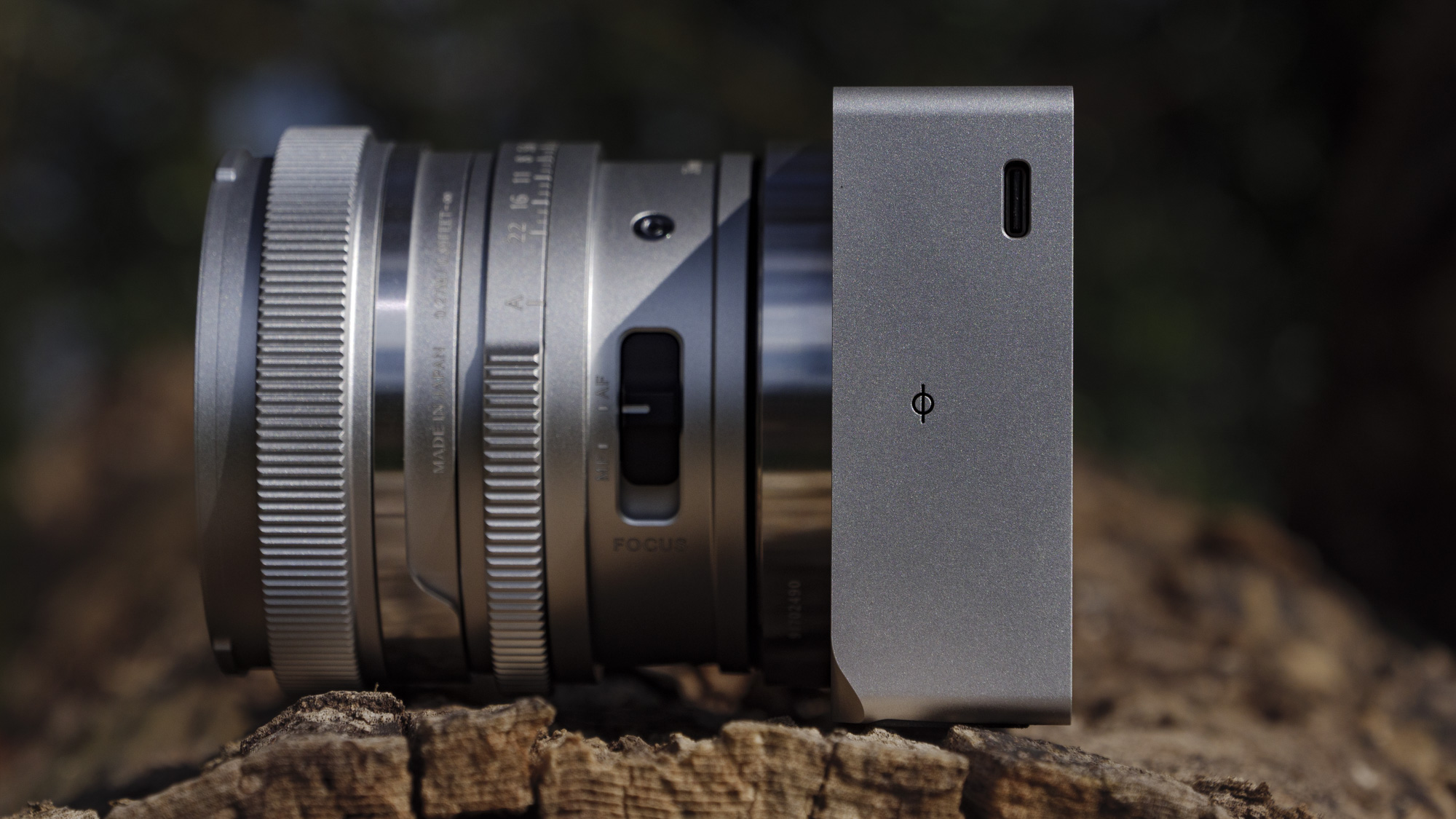
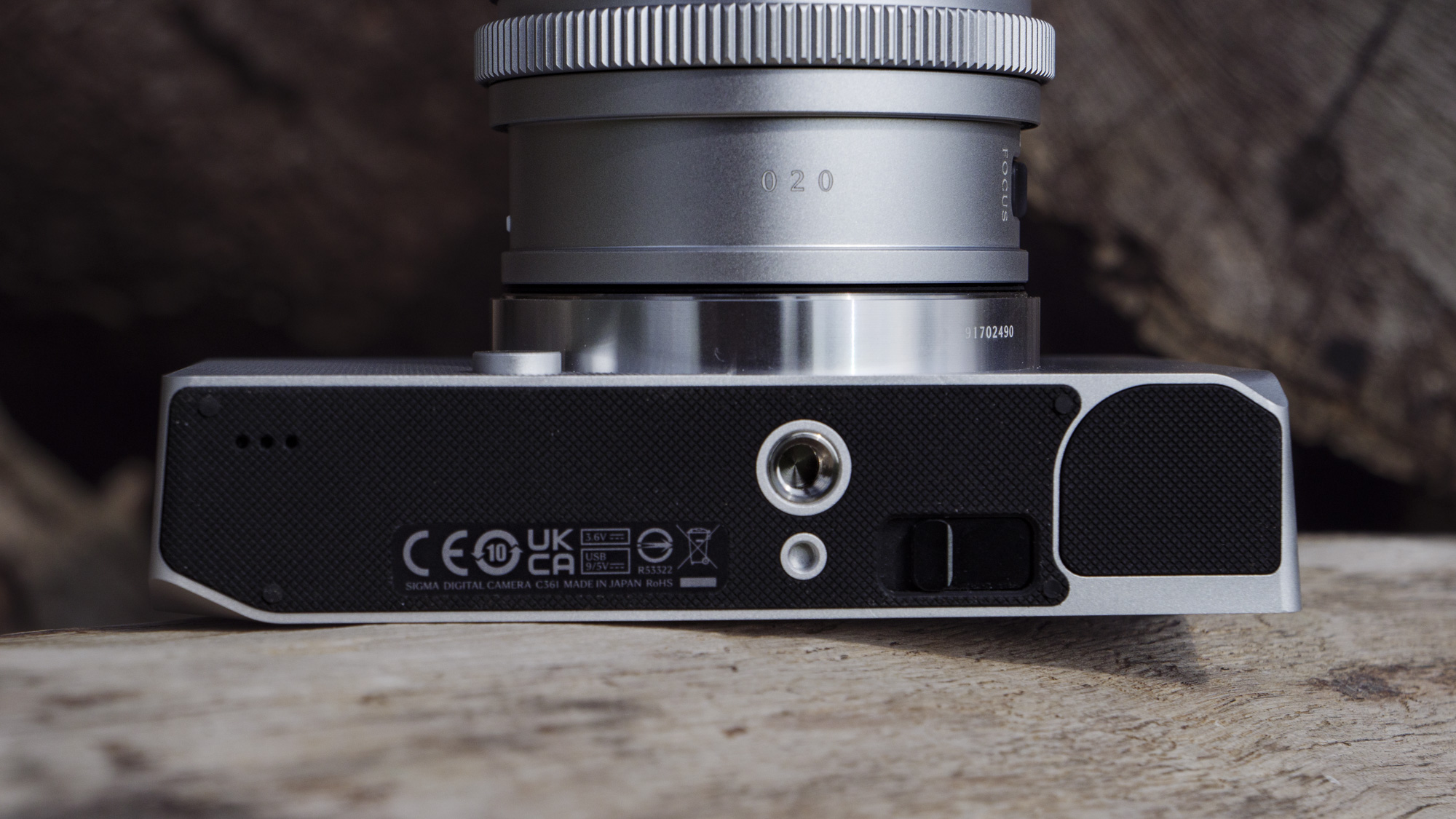
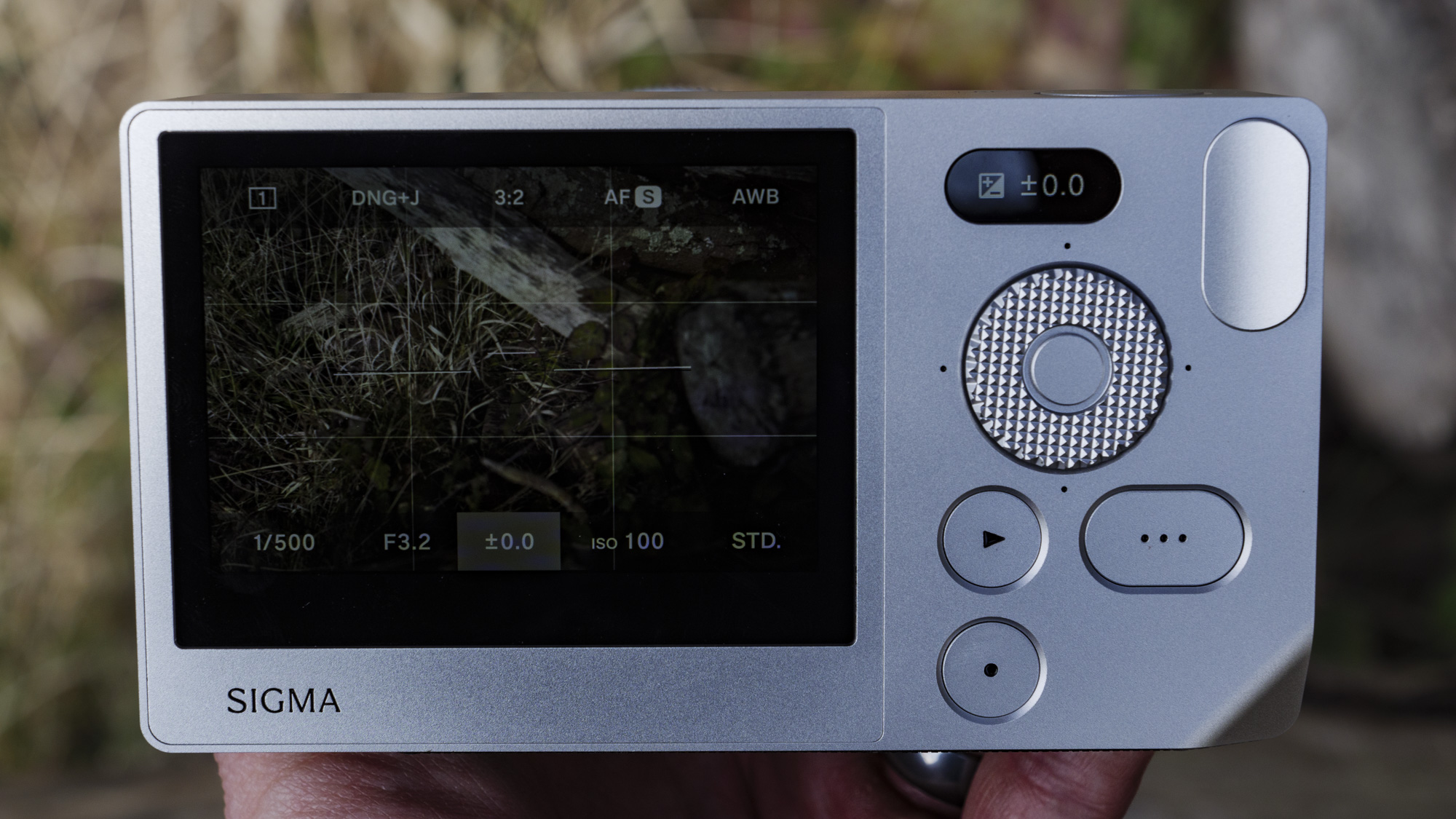

Sigma has created a new BP-81 battery for the BF – it's a tiny 3,300mAh unit that's rated for a meagre 260 shots, although I don't mind the lower-than-average shot life when you consider how compact the BF is.
Autofocus is a hybrid phase-detection and contrast-detection system, with subject tracking for humans and animals. It's proven pretty reliable overall during my testing, especially for close-up portraits, but I've certainly used more sophisticated systems from the likes of Sony, Canon and Nikon.
Part of the issue with autofocus is relying on a fixed touchscreen that's not always the easiest to see, depending on the shooting conditions. You hope focus is spot on, but it isn't always.
Another element that limits autofocus performance is that the focus options you have to choose from are relatively basic – this is a minimalist camera in just about every way. I'd also say, based on my experience of both cameras, that the Nikon Z6 III is much better at picking up subjects that only take up a small portion of the frame.
As for video, the BF features built-in stereo mics, but no dedicated mic input, just mic connection via the multi-purpose USB-C; and the stereo mics are particularly susceptible to wind distortion. In short, many of the features that video users rely on are absent – the BF is more a photographer's camera that happens to shoot lovely-quality 6K video.
- Features and performance score: 3.5/5
Sigma BF: image and video quality
- 24.6MP photos in detail-rich 14-bit raw universal DNG format
- 6K video from the full width of the sensor, no EIS available at this resolution
- 13 color profiles for photos, L-log for video
Despite its rather conventional-sounding 24MP full-frame sensor, the Sigma BF is capable of producing highly-detailed images with gorgeous color.
Special mention must go to the superb 35mm F2 DG lens I was testing the camera with – detail is pin-sharp from center to edges, with a lovely focus fall-off when you're shooting at the maximum f/2 aperture.
There are plenty of other superb L-mount lenses to pair with the BF, and Sigma lenses are reasonably priced too. That said, I do think that Sigma needs to prioritize producing a pancake lens that truly complements the BF's compact body, especially while sales for the camera are likely to be strong. A tiny 35mm f/2.8 should be doable.
The photos in the gallery directly below are a selection of the kind of everyday images that the Sigma BF is so adept at capturing.



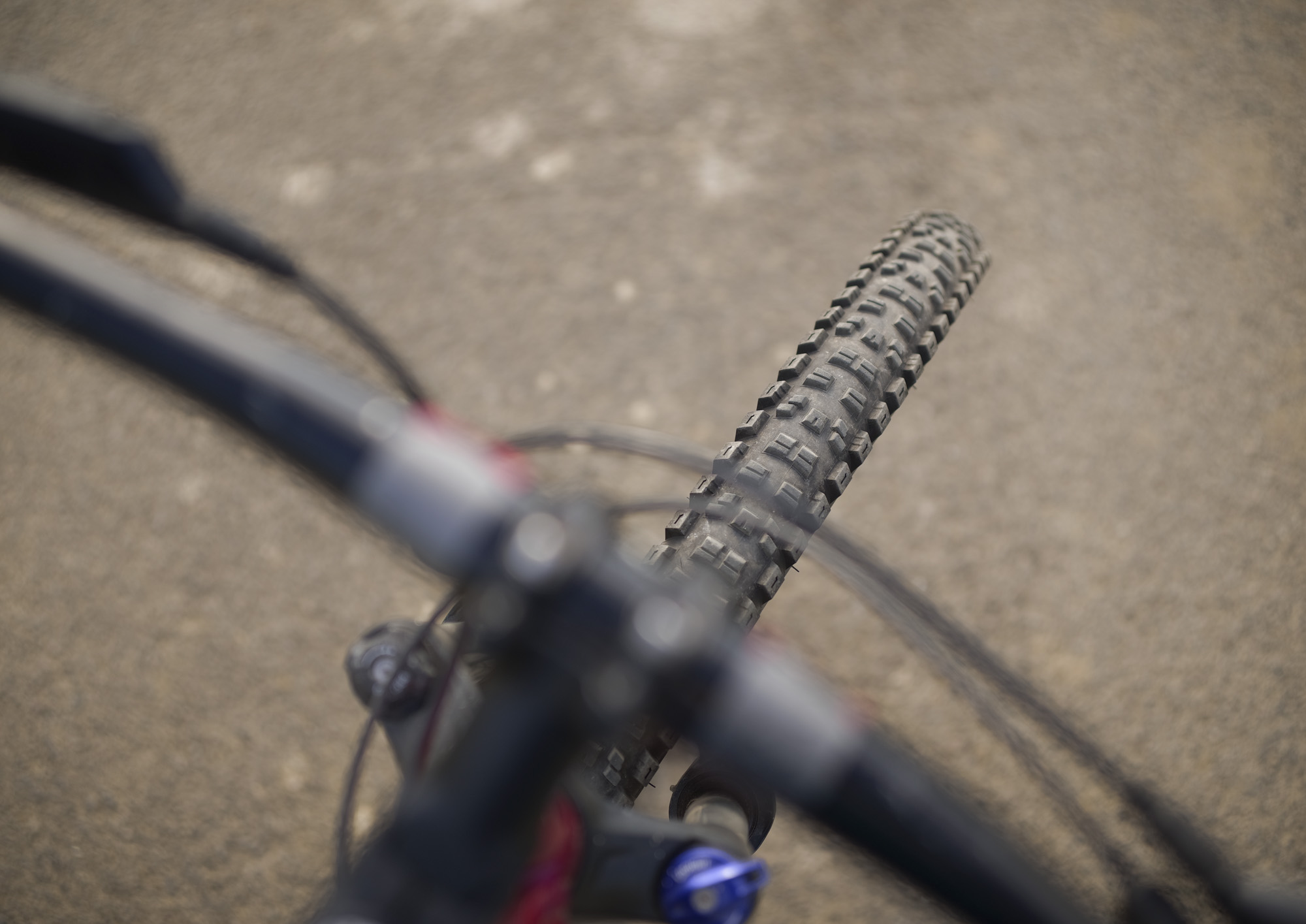
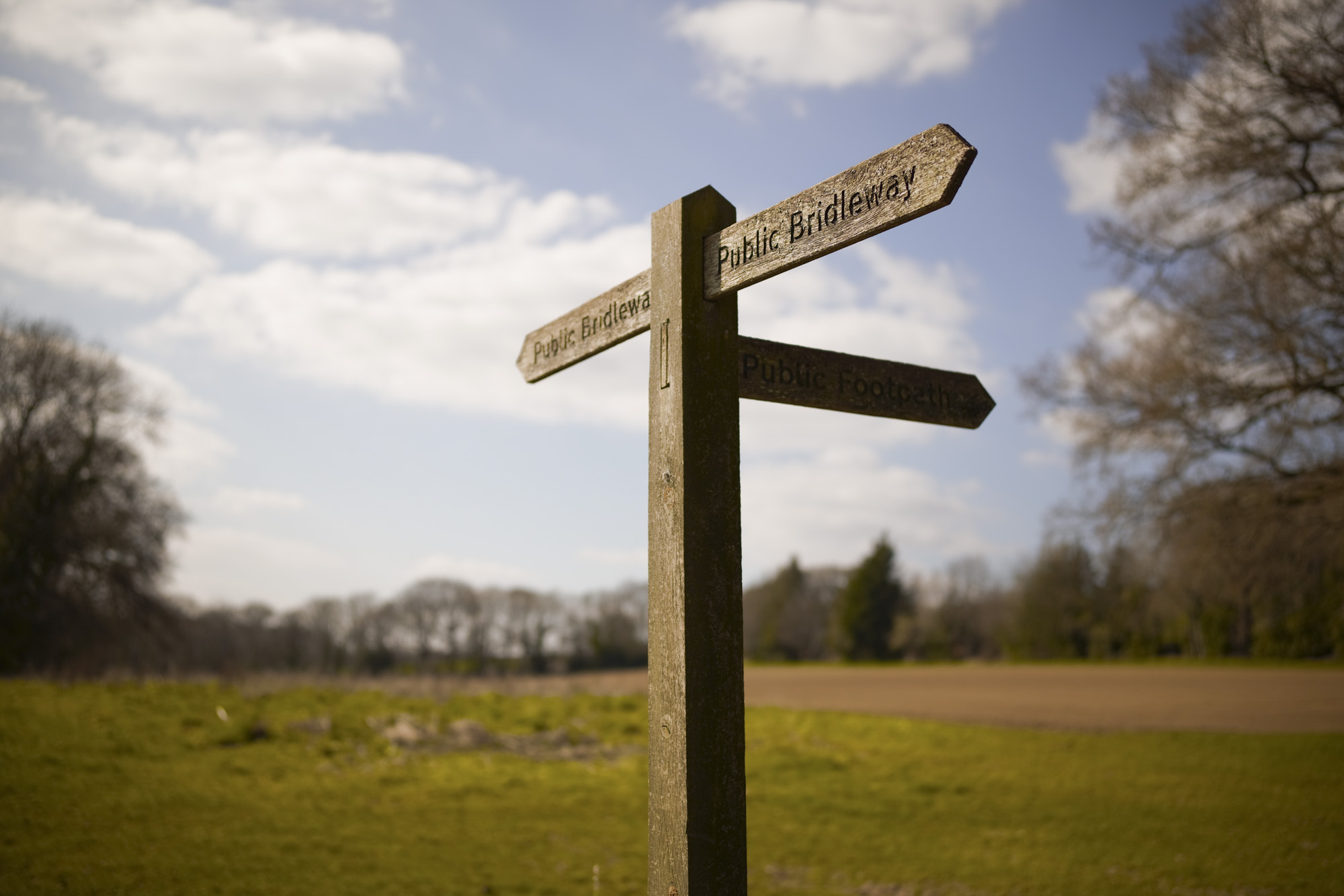

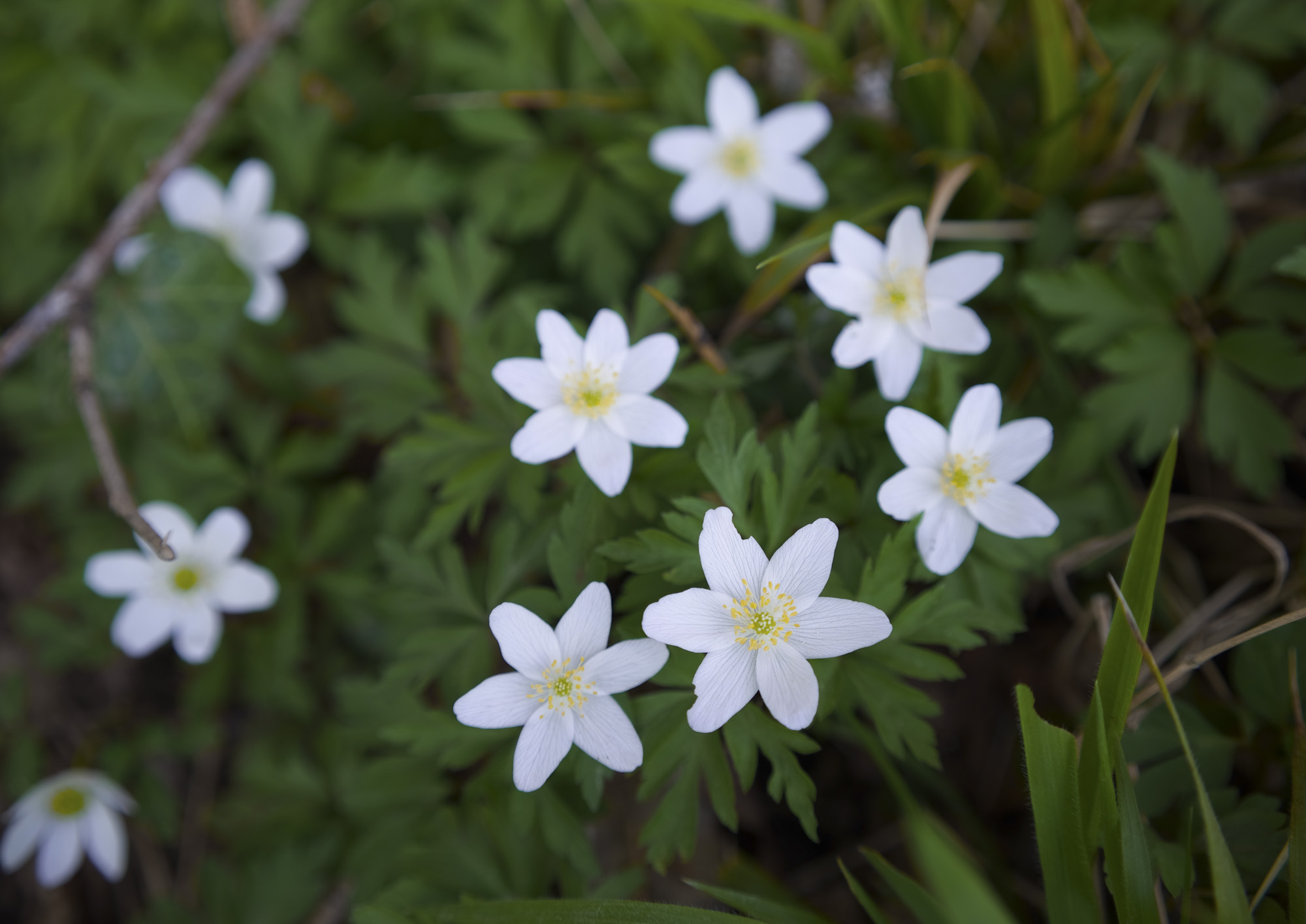


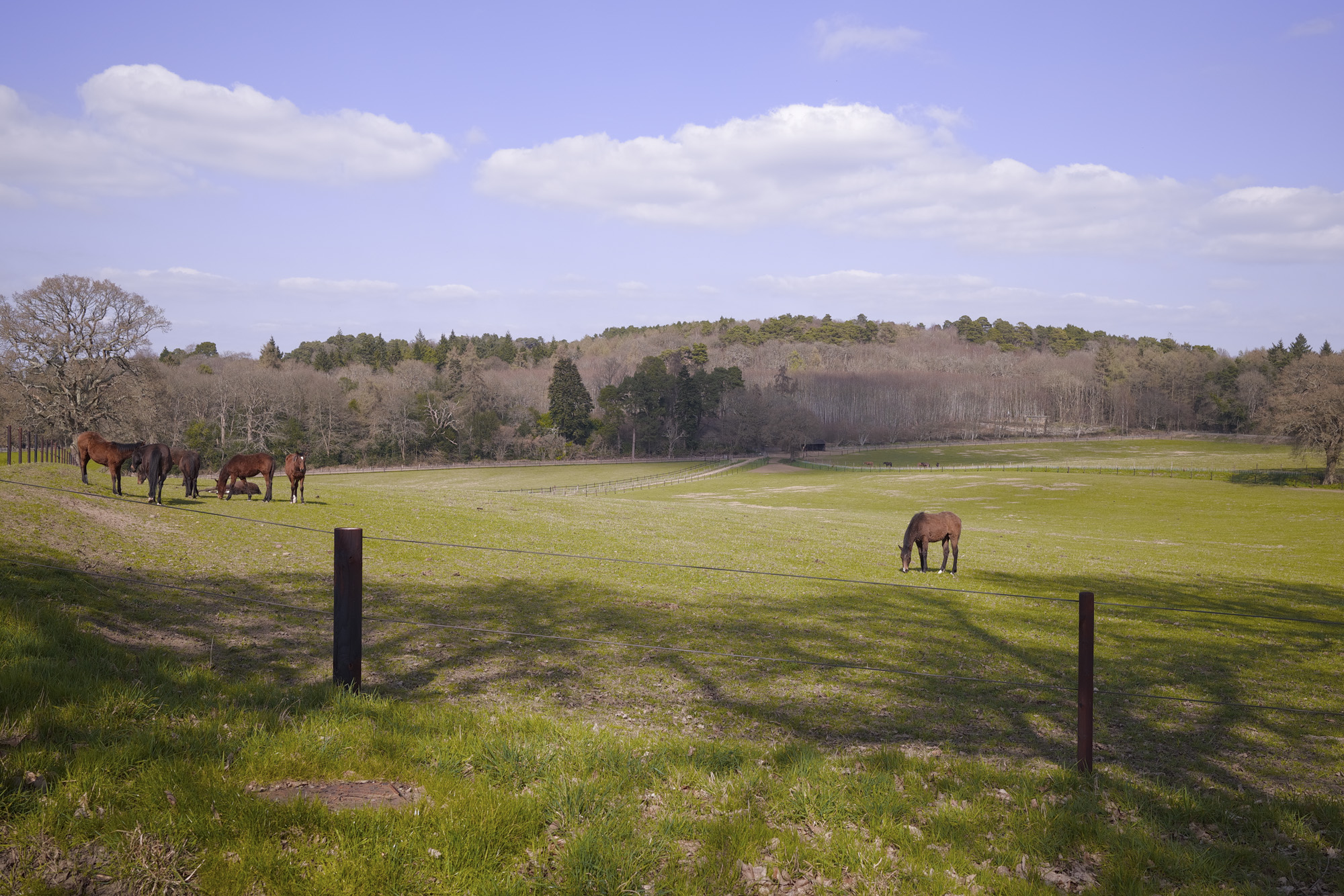

As with Leica, I always appreciate that a Sigma camera's raw files are the universal DNG format, meaning that just about any editor happily accepts the files; and they're detail-rich 14-bit files, no less.
Shoot in raw and JPEG simultaneously, and the standard color settings and full image area is kept for raw files, but your active color mode is applied to JPEGs. There are 13 modes to choose from for photos, and there are a few crackers amongst them.
The Calm color profile is Sigma's version of natural / muted, while Rich is a vibrant profile. I'm a fan of the BF's natural '709 Look' for photos, even though it's based on the Rec.709 profile traditionally used for video, plus the punchy and trendy Teal and Orange. It's easy to scroll through these options quickly to make your selection.
Here's the entire list of color modes: Standard, Rich, Calm, Powder Blue, Warm Gold, Teal and Orange, FOV Classic Blue, FOV Classic Yellow, Forest Green, Sunset Red, Cinema, 709 Look and Monochrome.
Street photography is a forte of the Sigma BF, as you can see from the collection of images below.
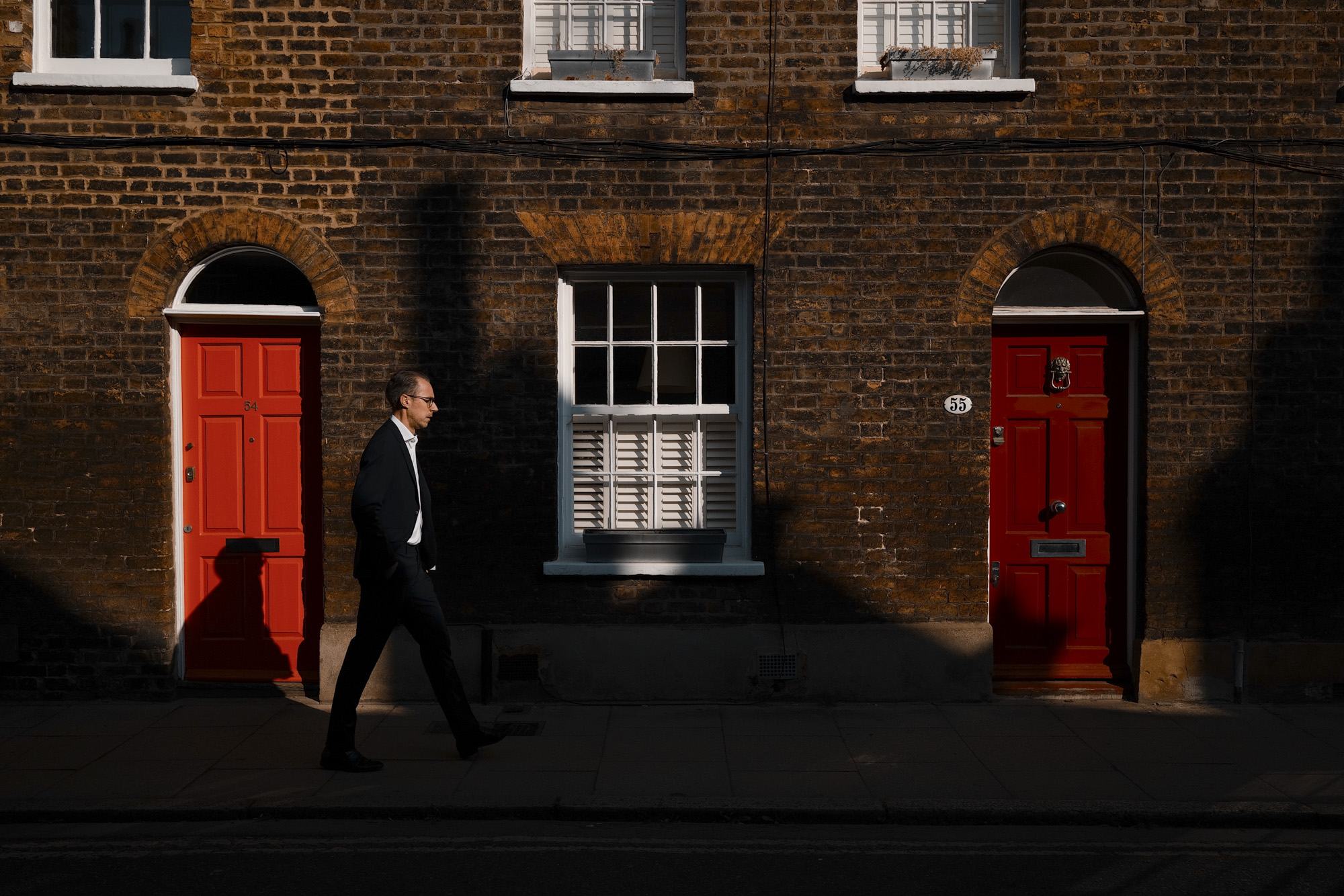
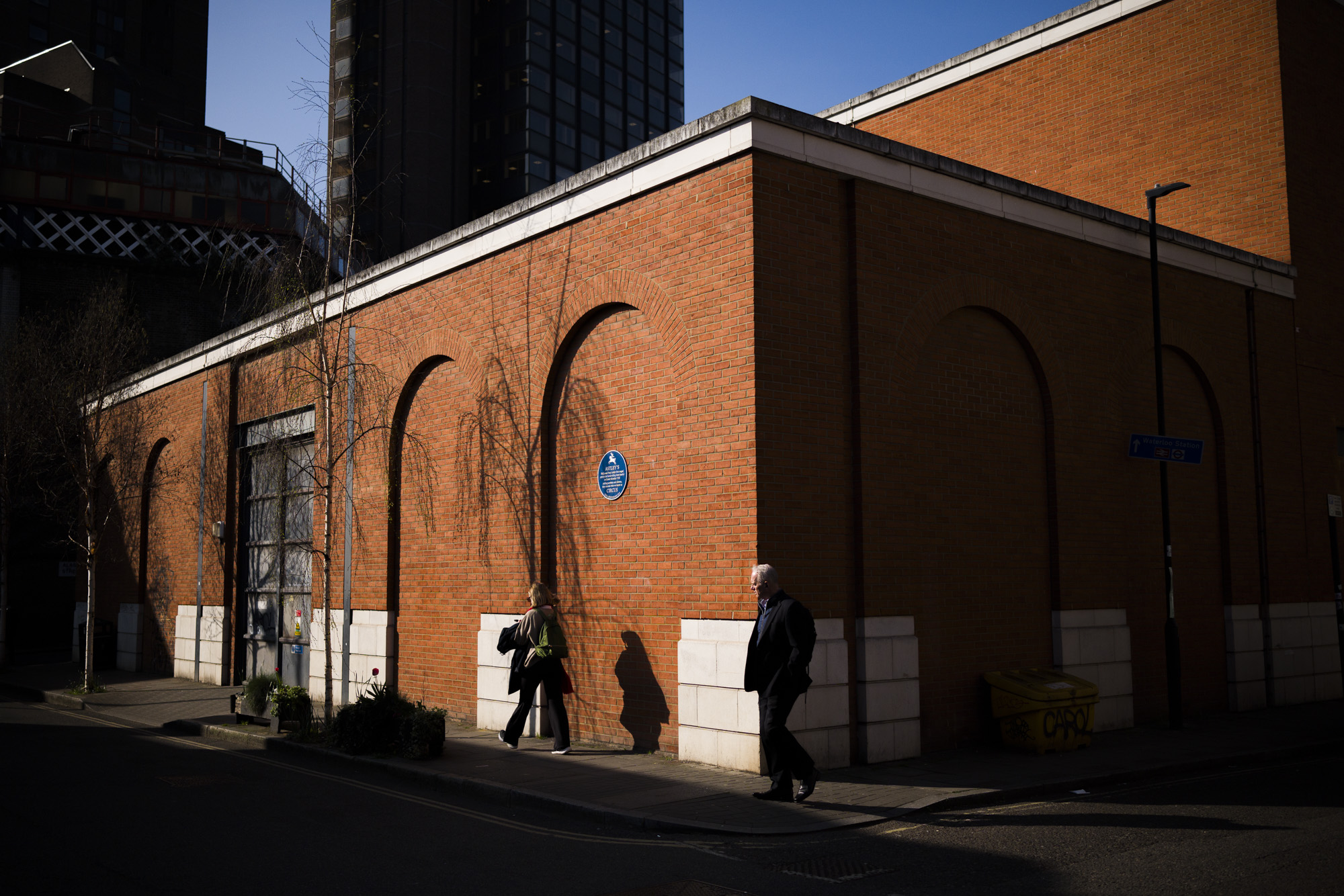
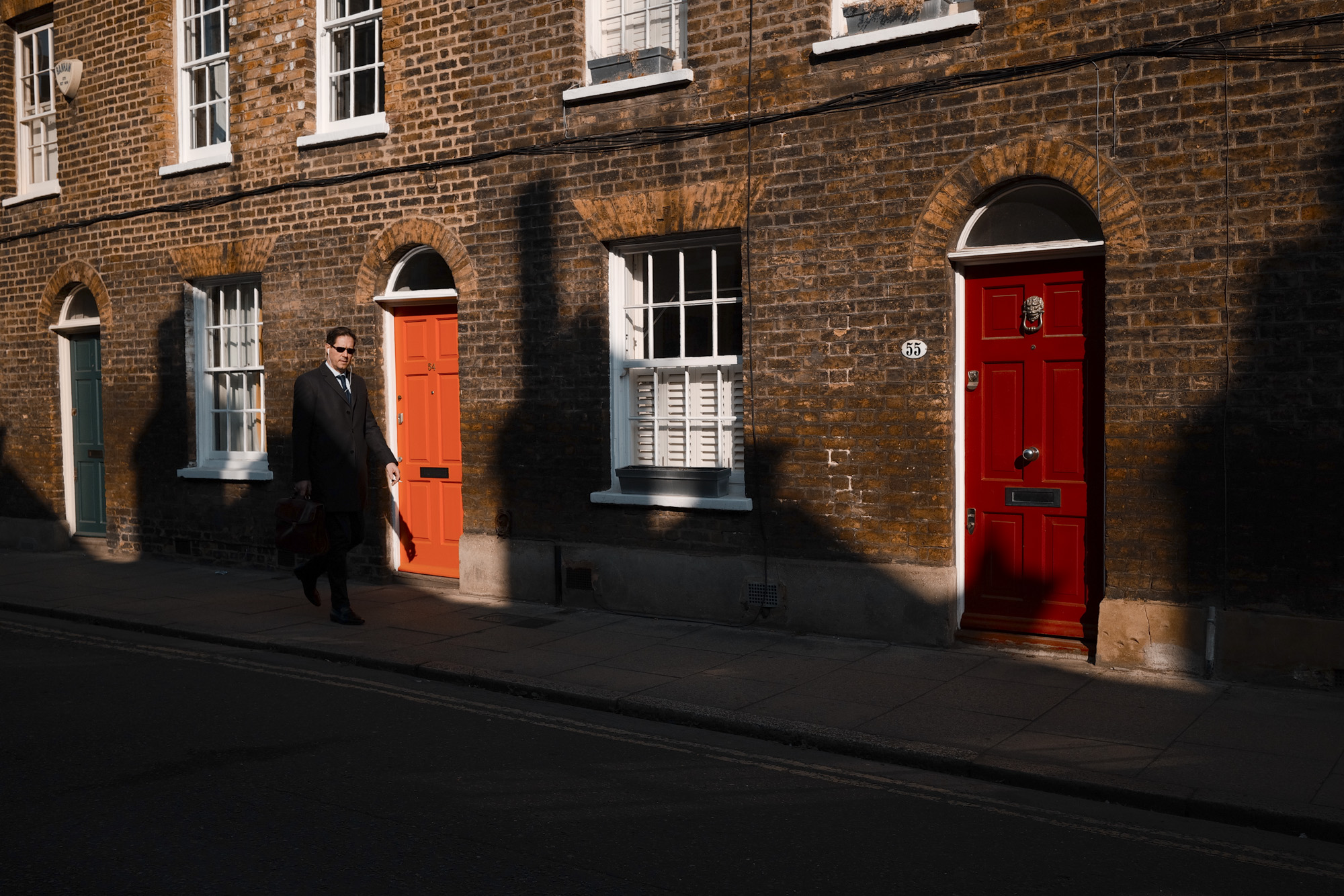



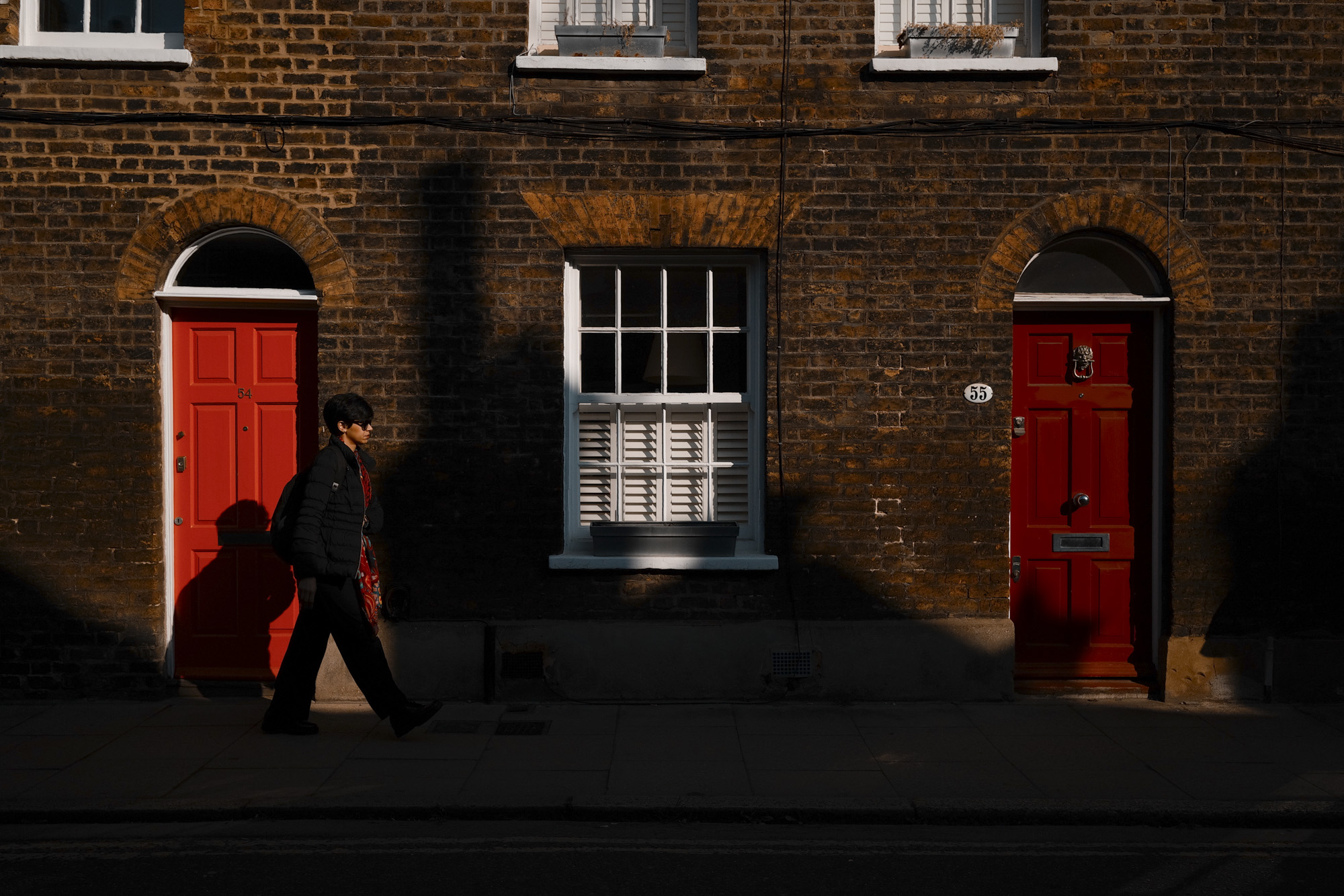

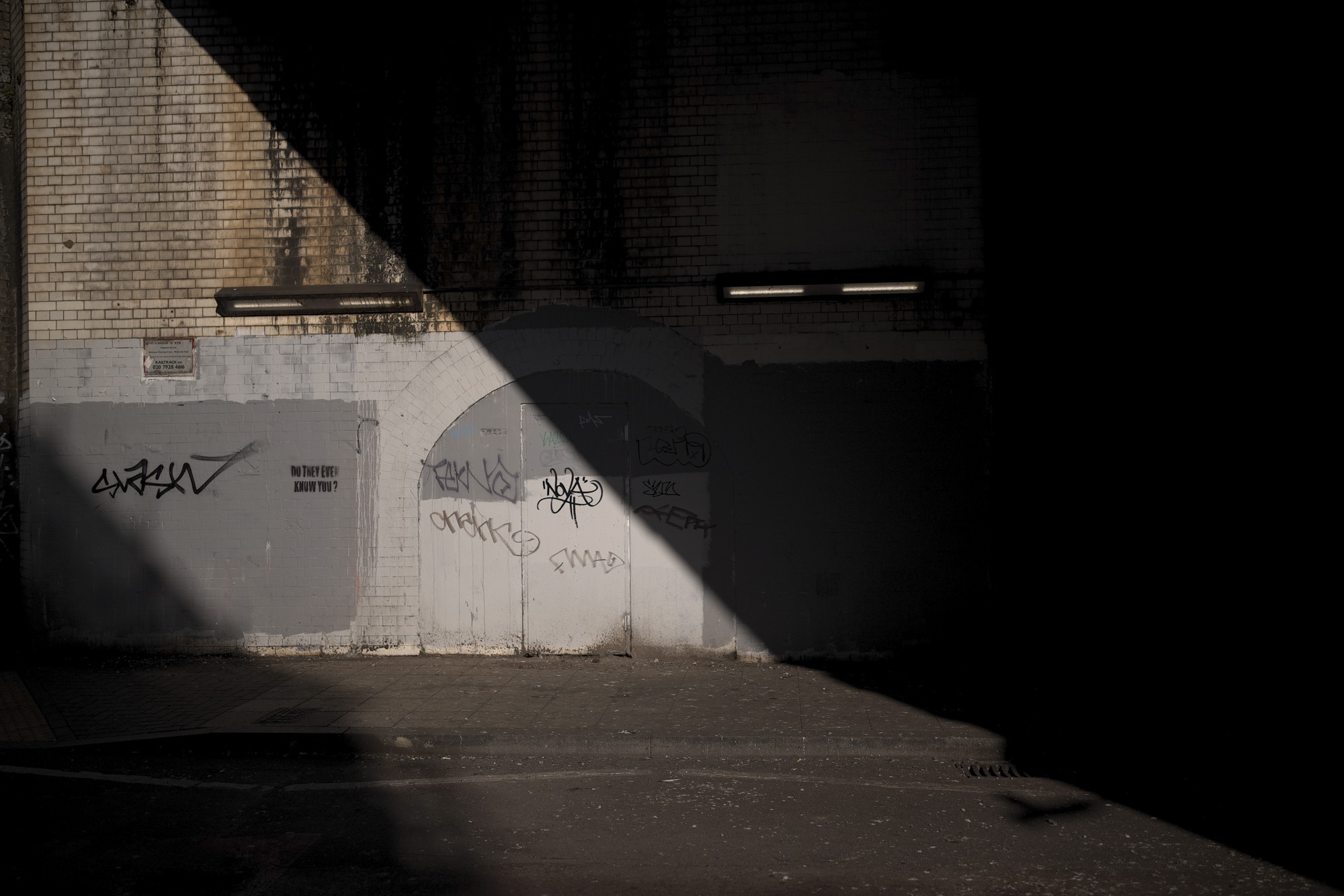
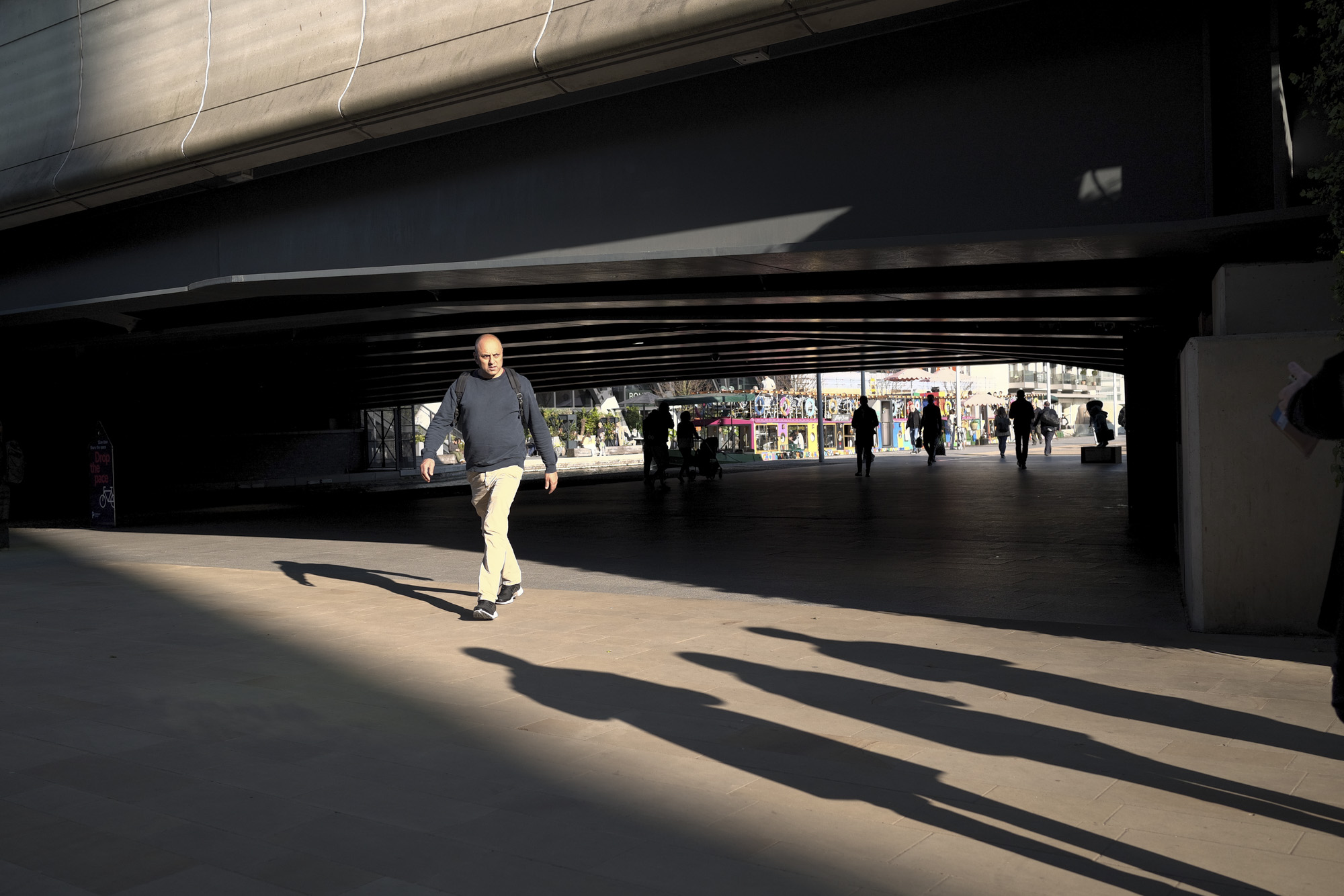
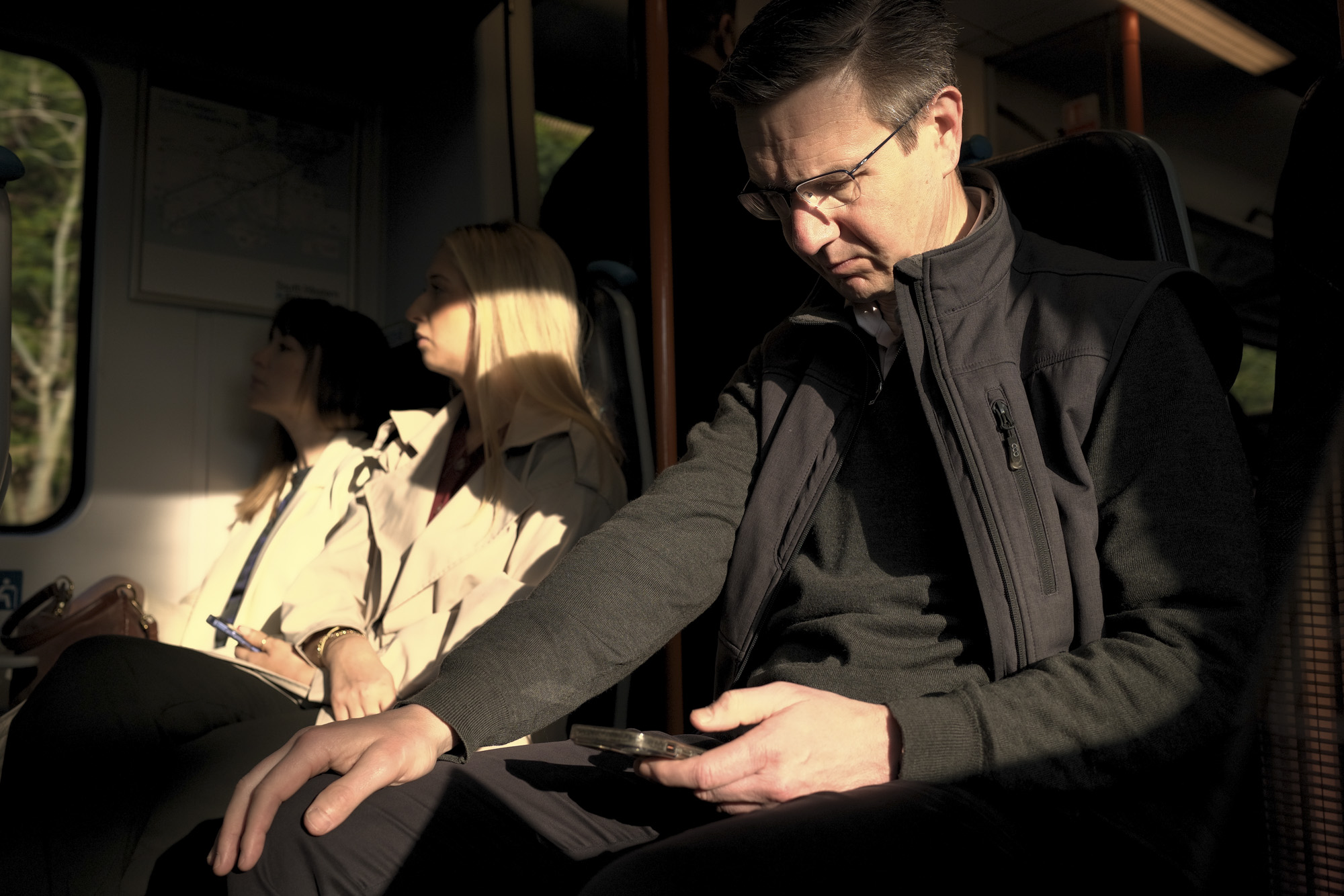
Would I prefer the BF had a 61MP sensor, like the one in Sigma's own fp L? Sure. And a stabilized sensor too. Those extra pixels would give greater scope for cropping into images taken with a lens like the 35mm F2 I had for this test, for the times you can't get close enough, while in-body image stabilization makes handheld shooting easier in various conditions.
All the photos you can see below were taken with the BF's autofocus with subject tracking active, and the close-up portraits are reliably pin-sharp on the eyes. My hit ratio in low light was less reliable, but impressive nonetheless.





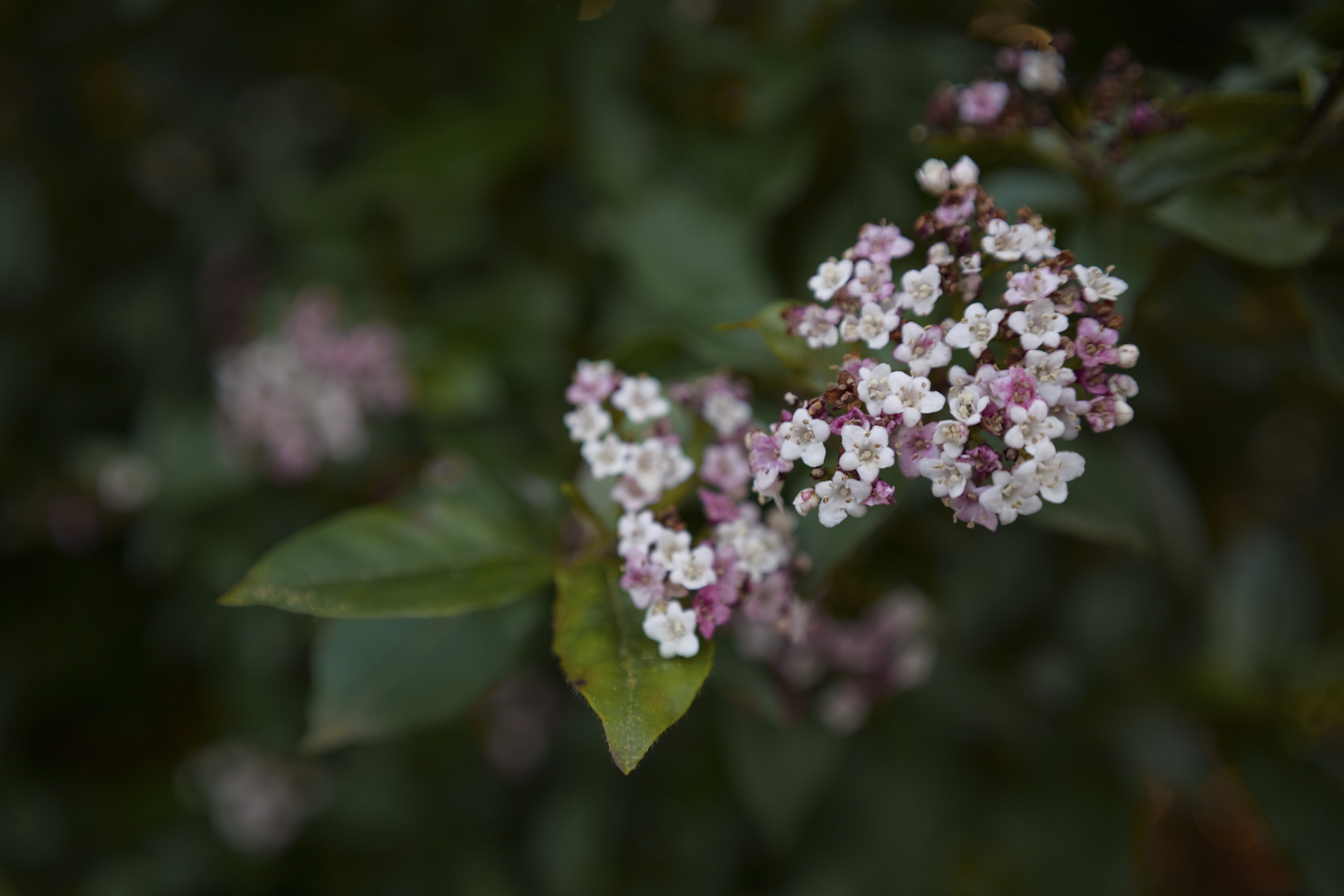


Video specs are decent, with 6K 30fps video in Sigma's L-log profile looking particularly lovely after grading, though you'll miss out on electronic stabilization in 6K, which rules out handheld footage on the move – the sample video below includes shaky unstabilized clips as I walk through London, plus a selection of the color profiles so you can appreciate the different styles.
However, it's the distinct lack of supporting features for video that plants the BF firmly in the photography camp, rather than it being a hybrid model.
- Image and video quality score: 4.5/5
Sigma BF: testing scorecard
Should I buy the Sigma BF?
Buy it if...
You love minimalist tech
I thought the Hasselblad X2D 100C was peak minimalism, but the Sigma BF is another level – there isn't even a memory card slot!
You want a camera that stands out from the crowd
The camera market is flooded with conventional DSLR-style mirrorless cameras; the Sigma BF couldn't be more different.
You want a small everyday camera
Considering its full-frame sensor, the BF is compact, and pairs nicely with Sigma's dinky Contemporary I-series lenses.
Don't buy it if...
You value function over form
Design is the BF's selling point... if you want something different. However, other cameras at this price point will offer more control and more features.
You shoot video a lot
The BF can record lovely-looking 6K video with Sigma's L-log color profile, but it lacks most supporting features needed for video, such as in-body image stabilization, and mic in and headphone out ports.
You need removable storage
The BF doesn't have a memory card slot, just an internal SSD, so if something goes wrong with the internal memory it's game over. We wouldn't expect any issues, but it's something to worry about.
Sigma BF: also consider
The BF follows two other Sigma full-frame cameras with similarly compact form; the fp (24MP) and the fp L (61MP). The fp L is more readily available and has the pricier, higher-resolution sensor yet costs the same as the BF, while the fp costs around 20% less, but is harder to find new. The BF wins for design, while the fp models arguably have better features and more conventional controls, even if the BF has improved in certain areas, such as autofocus performance. All three cameras use the same L-mount.
Read our in-depth Sigma FP review
Full-frame 24MP cameras at the BF's price point are plentiful. Most have a conventional design, such as the Canon EOS R6 Mark II and Nikon Z6 III. However, there are other cameras that pack a similar punch but whose design and user experience are key, such as the Nikon Zf. Unlike the modern, minimalist Sigma BF, the Nikon Zf is a retro model with exposure dials and faux leather finish.
Read our in-depth Nikon Zf
How I tested the Sigma BF
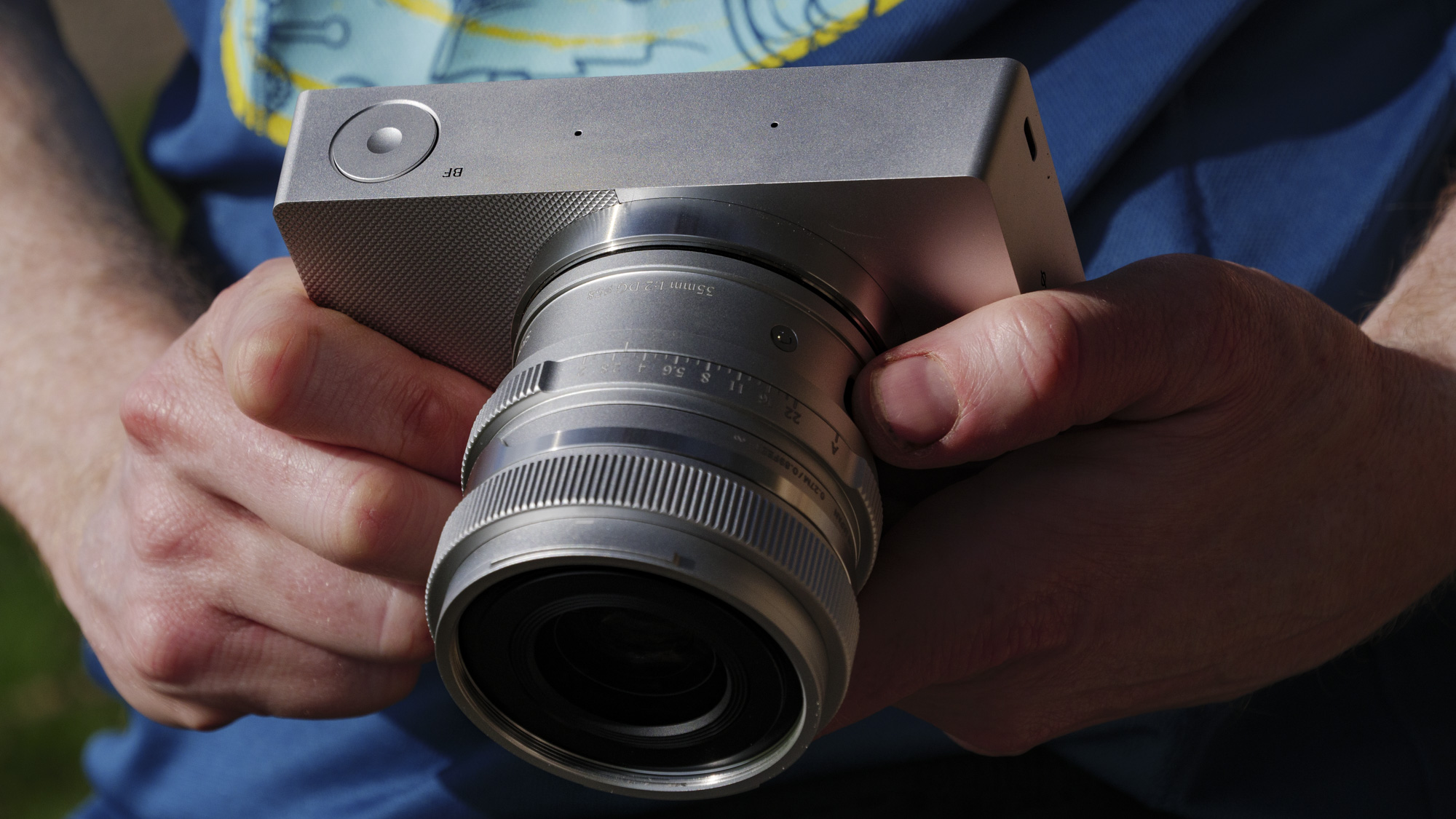
- Sigma loaned me the silver version of the BF for one week
- I tested it with the Sigma 35mm F2 DG Contemporary lens
- I mostly used it for everyday and street photography, taking between 500-1,000 photos and videos, and I also tested its video features
I tried to use the Sigma BF as much as possible during a oneweek loan period, taking it with me everywhere, including on city commutes and walks. As you can see from the photos, I had the silver BF, which was the version I was hoping for, together with a new silver version Sigma 35mm F2 DG Contemporary lens.
I've used the BF in bright sunlight and on cloudy days, as well as at night. I've made photos using the various color profiles and autofocus modes, as well as videos at the various resolutions.
First reviewed April 2025
Potensic Atom 2: one-minute review
Potensic has carved itself a strong reputation in the sub-250g drone category with the release of the Atom SE and Atom drones in recent years. The Potensic Atom 2 is now available, with this latest model taking the coveted title of best sub-250g DJI alternative. It's not perfect – few drones are – but it's an enticing drone for beginners, enthusiasts and more advanced pilots alike.
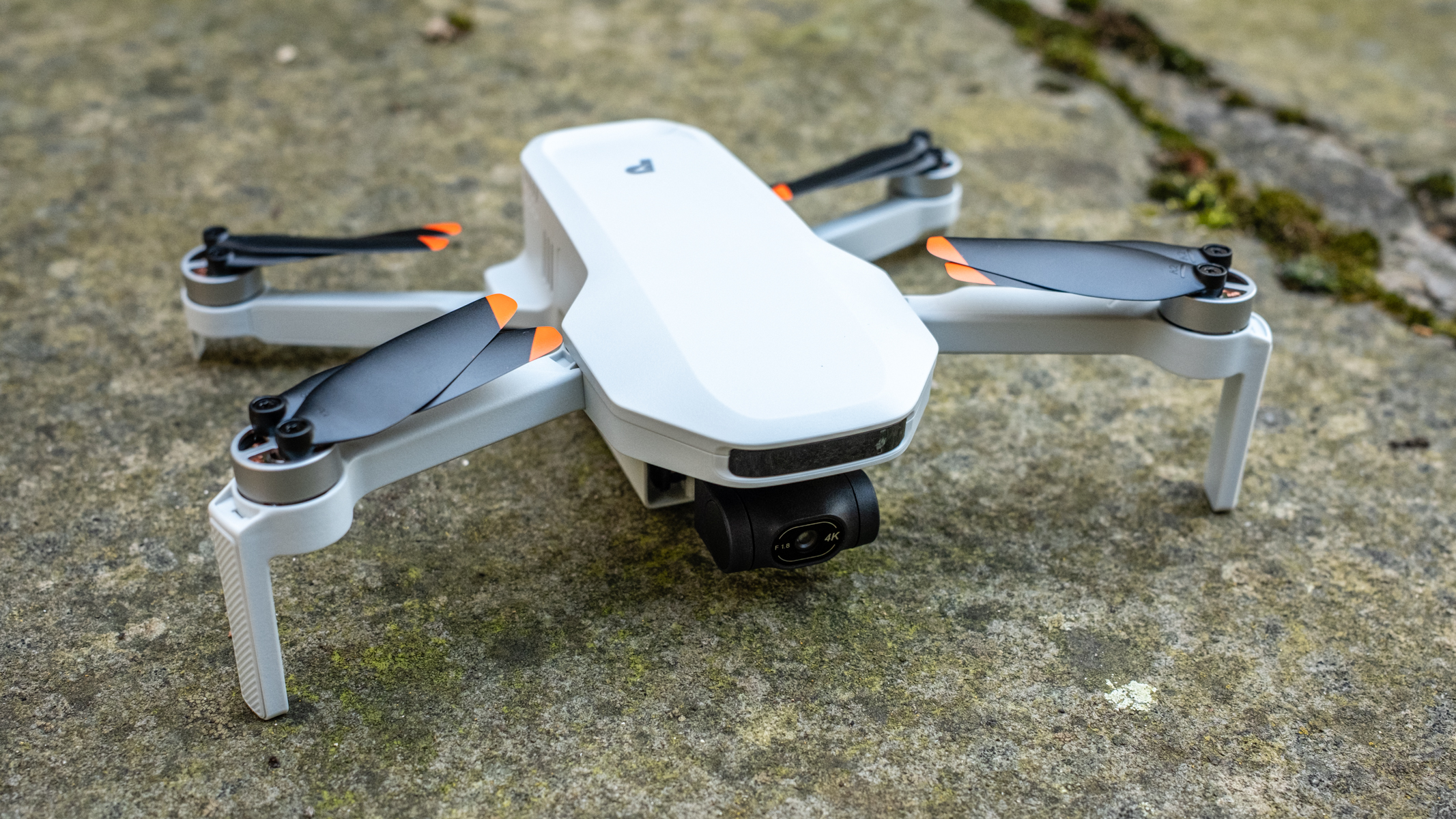
Given the features on offer, and what's to come in firmware updates – more on those later – the Atom 2 will sit somewhere between the DJI Mini 3 and the DJI Mini 4 Pro, which is an impressive achievement, especially when the Standard Kit costs just $330 / £300 / AU$580. This makes it only just a little more expensive than the entry-level DJI Mini 4K, making it a strong contender for our best drones guide.
The Atom 2 lets you capture video up to 4K at up to 30fps, in Normal and HDR color profiles; there's also slow-motion video and timelapse capture. Photos can be captured in raw and JPEG, while the camera offers both automatic and manual control. There are also AI Quickshots and AI Track for subject tracking. These features are just the tip of the iceberg, and with great flight performance to boot the Atom 2 is a solid option for many pilots.
Potensic Atom 2: release date and price
- Announced February 2025
- The Standard Kit costs $330 / £300 / AU$580
- The Fly More Bundle costs $430 / £400 /AU$785
The Potensic Atom 2 was announced in February 2025, and is available to purchase directly from the Potensic website and Amazon. The drone is reasonably priced considering the features and functionality on offer and will compete directly with other sub-250g models including the DJI Mini 4K, DJI Mini 3 and the Holy Stone HS900, although it exceeds all three in some areas.
The Atom 2 is available in two kits, with the Atom 2 Standard Kit costing $330 / £300 / AU$580 and comprising the drone, controller, one battery, two sets of spare propellers, phone cables and other accessories.
The Atom 2 Fly More Combo includes all of the above plus two additional batteries, a fast-charging hub, a shoulder bag and two extra sets of spare propellers for $430 / £400 /AU$785. This kit offers excellent value for money.
- Price score: 5/5

Potensic Atom 2: specs
Potensic Atom 2: design and handling
- Folding sub-250g design
- Solid build quality
- Excellent controller
With the exception of the DJI Neo, DJI Flip and the HoverAir X1 models, drone design has remained relatively unchanged for years, which is no bad thing – if it isn’t broken, why fix it? The Potensic Atom 2 makes no bold statements in terms of design with its light gray airframe and folding propeller arms, but it is solidly made. Its dimensions extend from a palm-sized 5.63 x 3.46 x 2.28 inches / 143 x 88 x 58mm when folded to 8.3 x 5.98 x 2.28 inches / 210 x 152 x 58mm unfolded.
The main difference with the Atom 2 design-wise is that Potensic claims the new propellers are 40% quieter, and they undoubtedly appear to be quieter, with a lower pitch hum during flights, rather than the higher-pitch whirr we're used to with smaller drones like this.
There's also a green flashing LED on the rear of the drone that's visible over long distances, so it may be bright enough for night flying. Drone strobes must be visible at three miles in the US for night flights, but this distance couldn’t be legally tested.
The only other notable external aspects of the drone are the 3-axis mechanical gimbal, which can be tilted between -90 and +20 degrees so the camera can look up slightly as well as straight down. Plus, there's a basic downward vision system, although I didn’t notice this doing anything when flying low to the ground with an undulating surface. As you'd expect for the price, there's no collision avoidance.
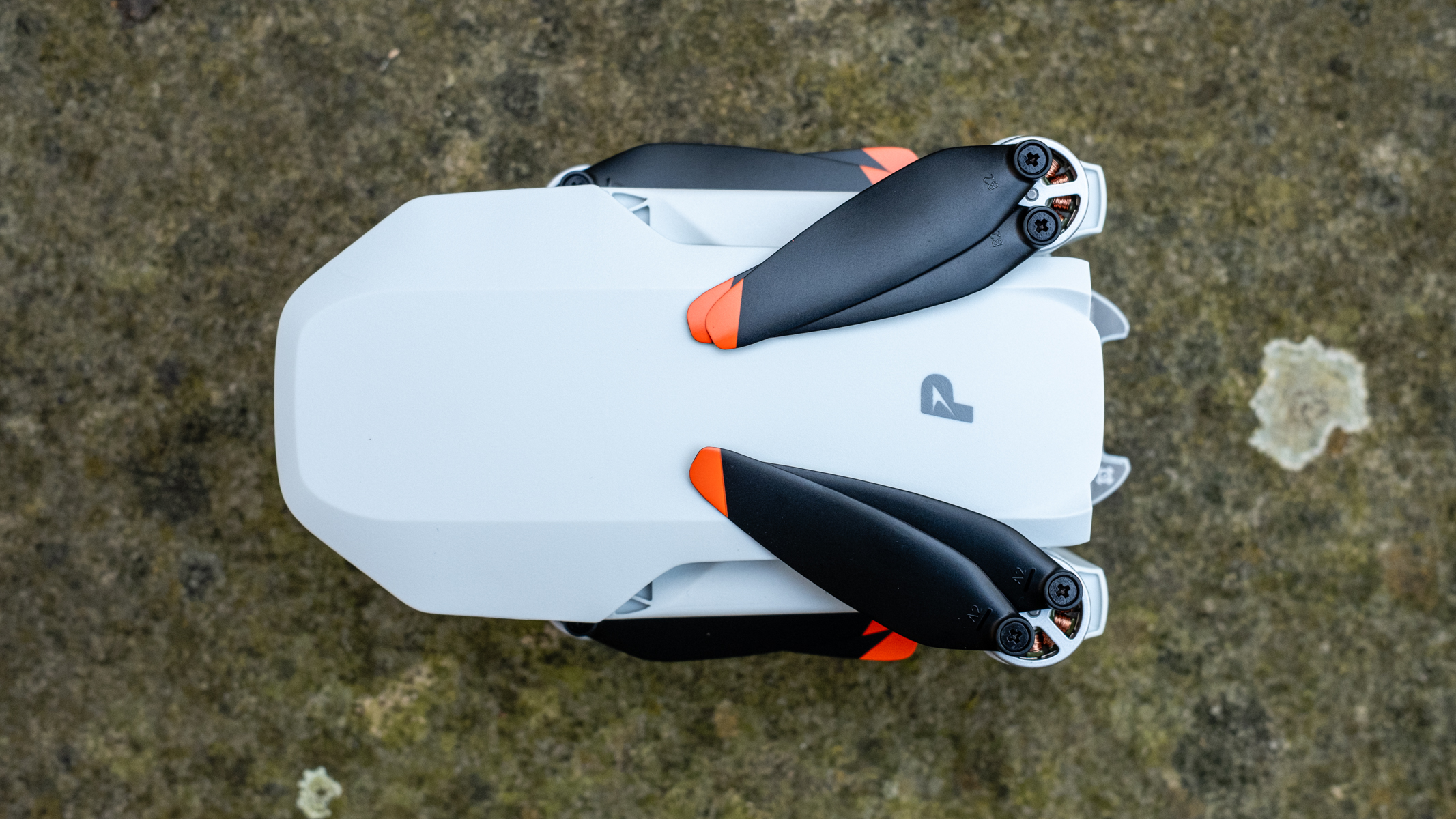
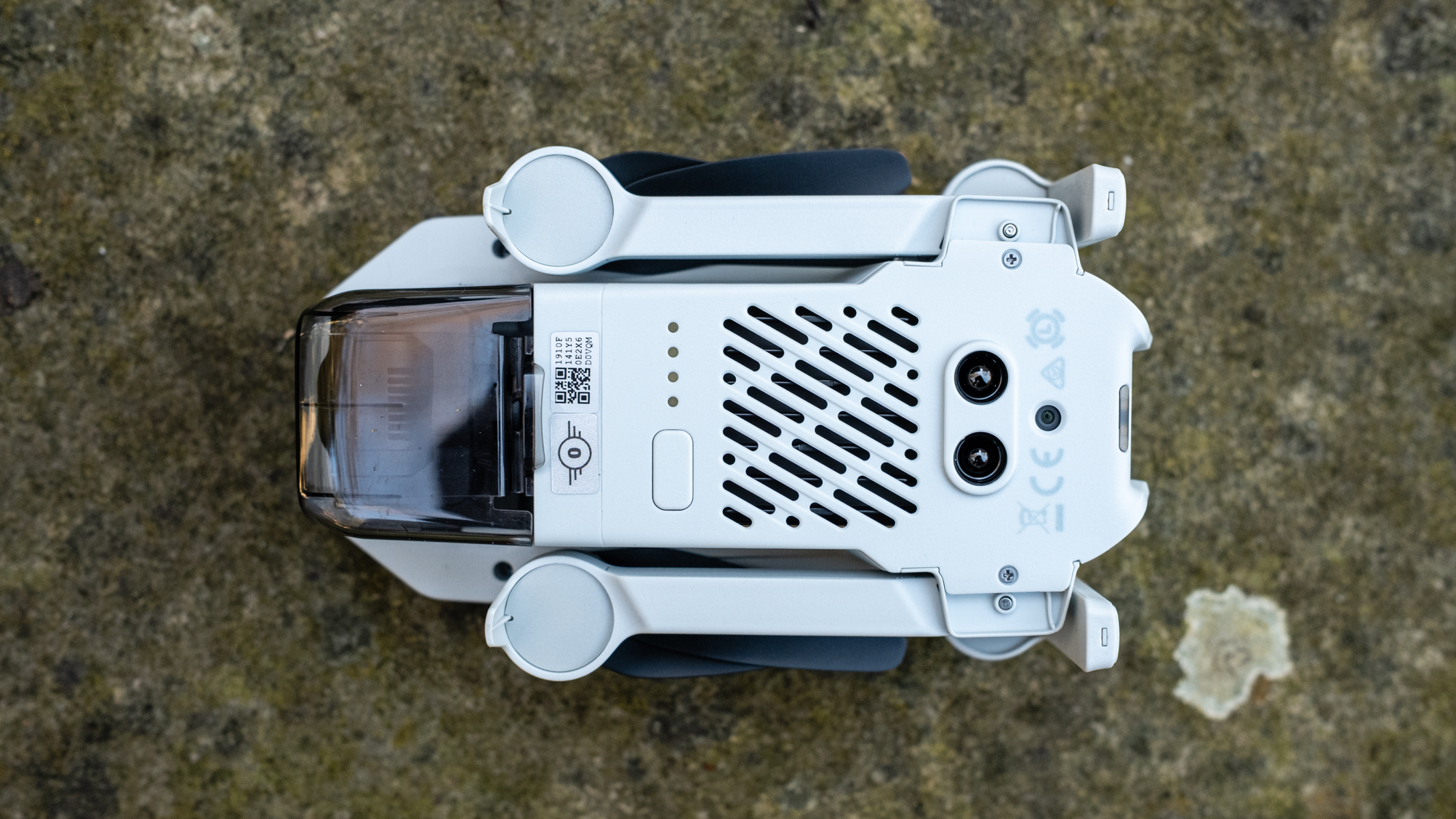
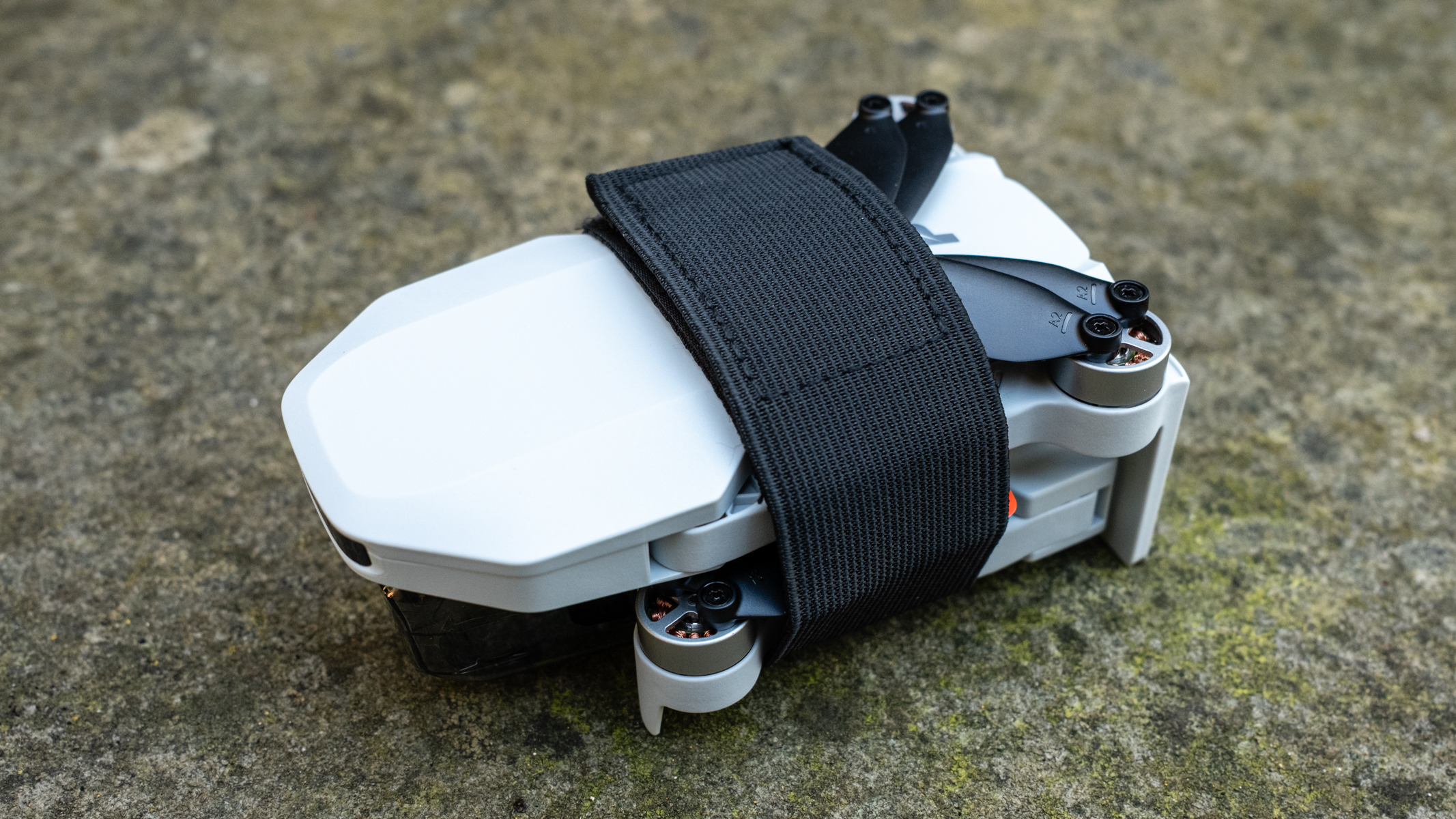
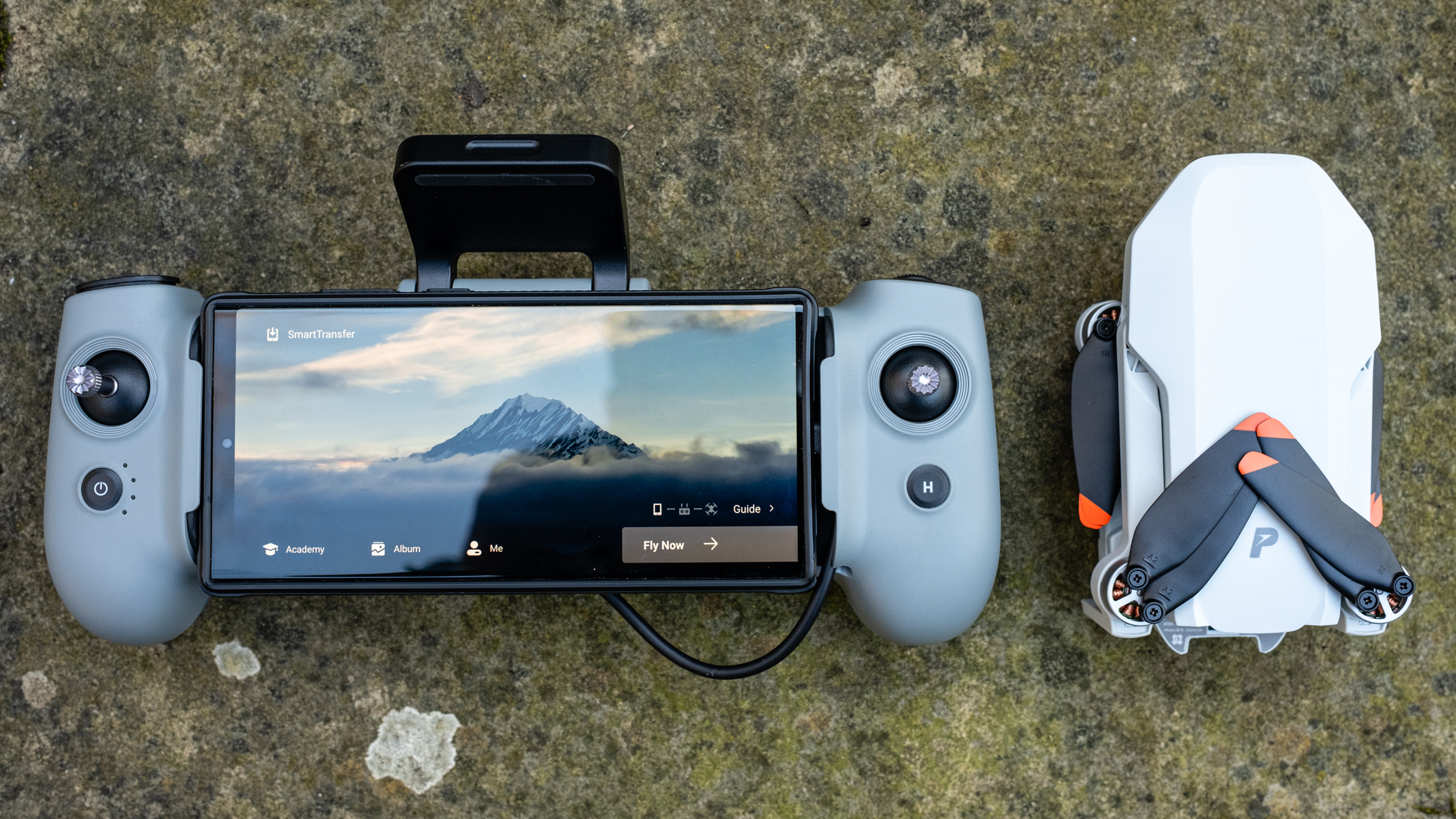
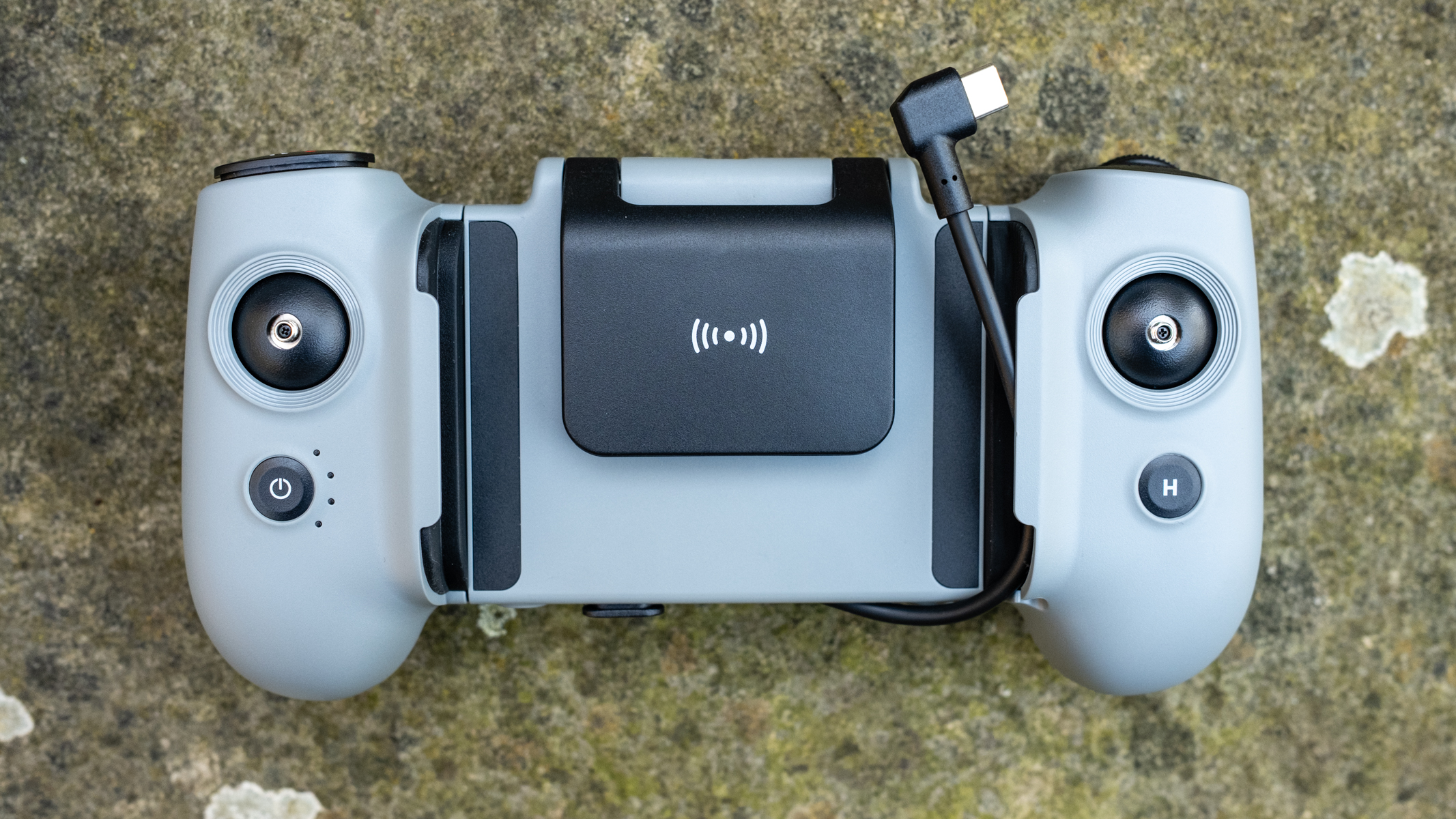

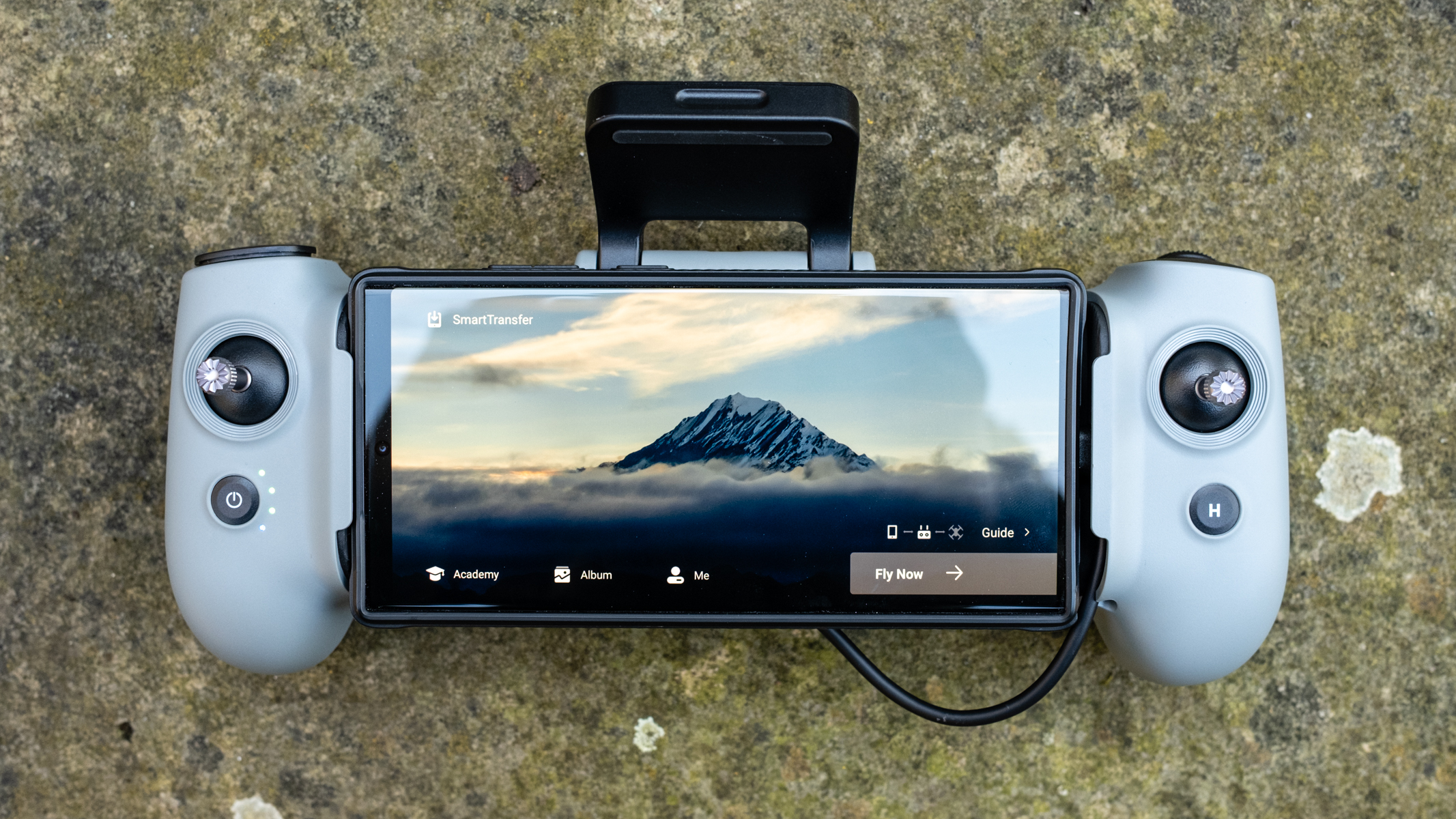

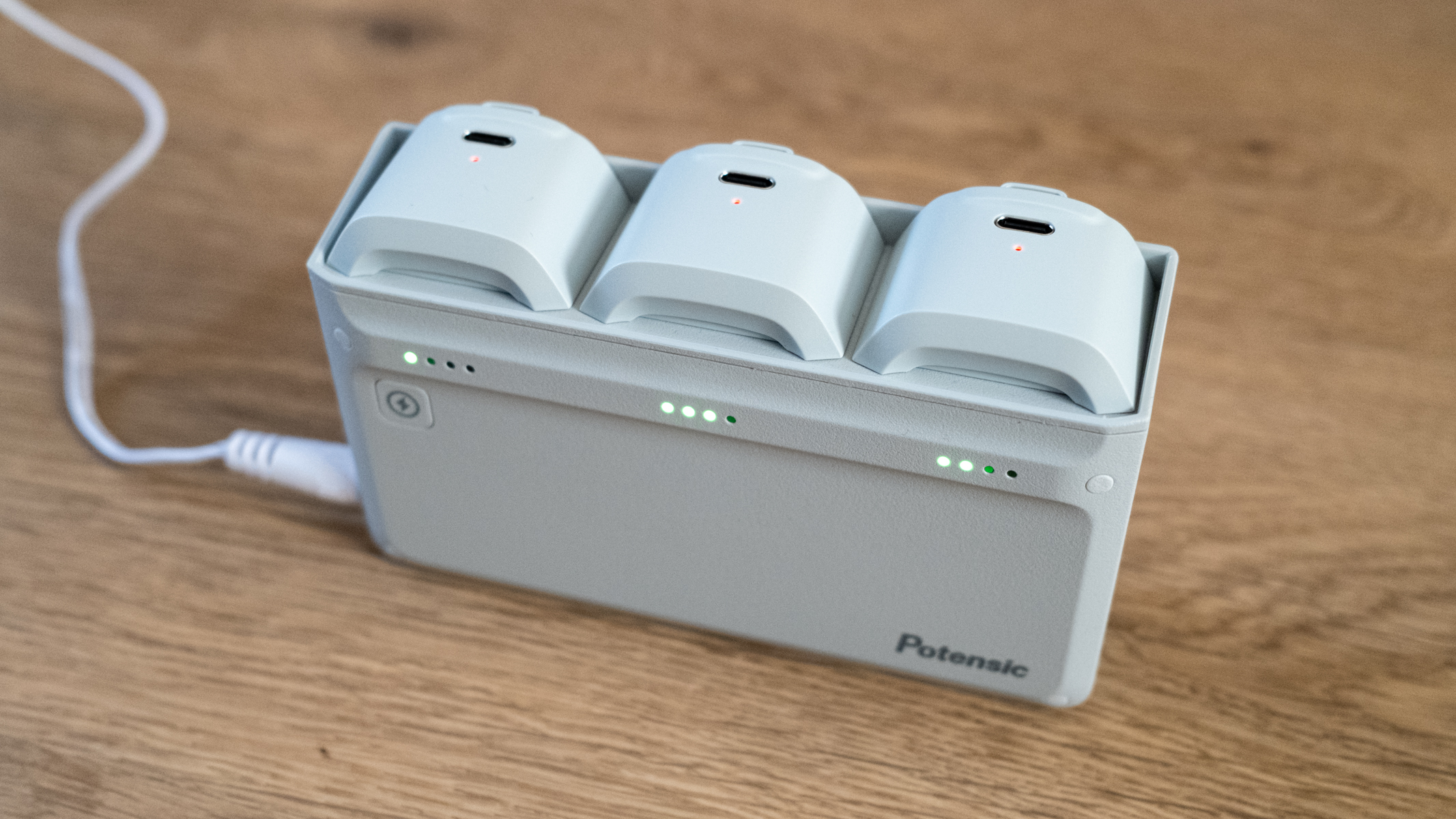
The controller follows the same design as the controller for the Atom and Atom SE, but has been upgraded and now features a directional antenna that helps maintain a control and video-transmission distance of up to 6.2 miles. During testing, there was occasionally some pixelation and stutter of the video feed, but ensuring the antenna was facing the direction of the drone alleviated this.
Moving back to the design, the controller holds your smartphone between the two comfortable handgrips that extend outwards to insert and then grip the phone. This makes the whole package look more like a smart controller, and the positioning of the phone in the centre between the controllers is much more comfortable than a top-heavy top-mounted phone.
There are six direct-access controls for accessing commonly used functions including the gimbal tilt, digital zoom, a shutter button and a Return to Home button. The two remaining buttons are set to switch the gimbal angle between 0 and -90 degrees and to change the flight mode by default. These two buttons are customizable if you'd like to change them, while the control-stick modes and stick sensitivity are also customizable.
- Design score: 4/5
Potensic Atom 2: features and performance
- Level 5 wind resistance
- AI subject tracking
- AI Quickshots
The Atom 2 is a fantastic flier, with responsive and smooth controls that facilitate seamless maneuvers when capturing video. GPS provides a stable hover, with no drift detected during testing, alongside providing Return to Home functionality which comes with standard RTH functionality and a new smart version.
Dynamic Home Point, when enabled, brings the drone back to the controller location rather than the take-off point when Return to Home is initiated. This may not sound like much, but it's an incredibly useful feature because it's sometimes useful to walk along behind drones during flight to maintain visual line of sight and to help with the performing of precise maneuvers.
This may be a small and lightweight drone, but the Atom 2 offers Level 5 wind resistance, which equates to speeds of up to 23.6mph. Flight modes include Video, Normal and Sport, with Sport mode offering a top speed of 35.8mph, while Video is for slower and smoother flight. There's also built-in Remote ID, which will be a welcome feature for US-based pilots.
Subject tracking is a feature that's becoming increasingly important and popular. It's been around for a while, but the introduction of AI in drones has made it more effective than ever before. The Atom 2 isn’t a selfie drone by any means, but its AI Track options for subject tracking include AI Spotlight, AI Follow and AI Parallel. These all work incredibly well.

Then there's AI Quickshots, which includes Pull-Away, Spiral, Rocket, Circle, Boomerang and Dolly Zoom. All of these perform well, and most create professional-looking videos.
Dolly Zoom produces a great effect, thanks to combining the digital zoom with flying backwards, but it's not perfect. At the end of the dolly zoom, when the digital zoom is at its maximum, image quality is noticeably reduced, and while it's still a fun feature, it's not for professional use.
All of these effects can be applied to human subjects and inanimate objects simply by drawing around the desired subject in the Potensic Eve app.
Flight times are advertised as being up to 32 minutes per battery, but during testing the batteries typically lasted around 22 minutes before Return to Home was suggested by the drone at 15% battery level. This isn’t too bad, but it does make the Fly More Combo with three batteries and a fast-charging hub an attractive option. The fast-charging hub is claimed to be able to charge three batteries at once in 1.3 hours, and in my experience it was faster with batteries at a 15-30% charge.
Other features pilots will find useful are the Interval Timer for timelapse capture, and Cruise Control. There's also SmartTransfer, which enables you to transfer media files to your phone at speeds of up to 25MB/s. This makes it easier to share photos and videos directly to social media if you like to do this on the go.
- Performance score: 4/5
Potensic Atom 2: image and video quality
- 1/2-inch sensor
- Fixed focus 26mm f/1.8 lens
- 4K video and 12MP Raw photos

The Atom 2 camera is an improvement on the Atom with improved image quality and additional features, but before we delve into those, let's take a look at the specs.
The camera features a 12/48MP Sony 1/2 in CMOS sensor with 4-in-1 pixels, which is claimed to reduce noise and enhance low-light performance, although if I'm honest I wasn't overly impressed with low-light performance.
The camera lens provides a 26mm equivalent focal length with a fixed f/1.8 aperture. The lens is fixed-focus from 4m to infinity, relying on hyperfocal focusing to achieve a large depth of field.
When it comes to image quality, sharpness is greatest in the center of the frame, with fall-off towards the edges. There's also some vignetting, and white balance can be inconsistent when using Auto and Manual settings, but this can be easily fixed in Lightroom when shooting raw.
Videos are consistently better quality and don’t suffer from these issues. Strangely, even white balance is more reliable for video capture. Moving back to photos, JPEG processing is heavy with strong and noticeable sharpening applied, so the best image quality will always come from raw files.

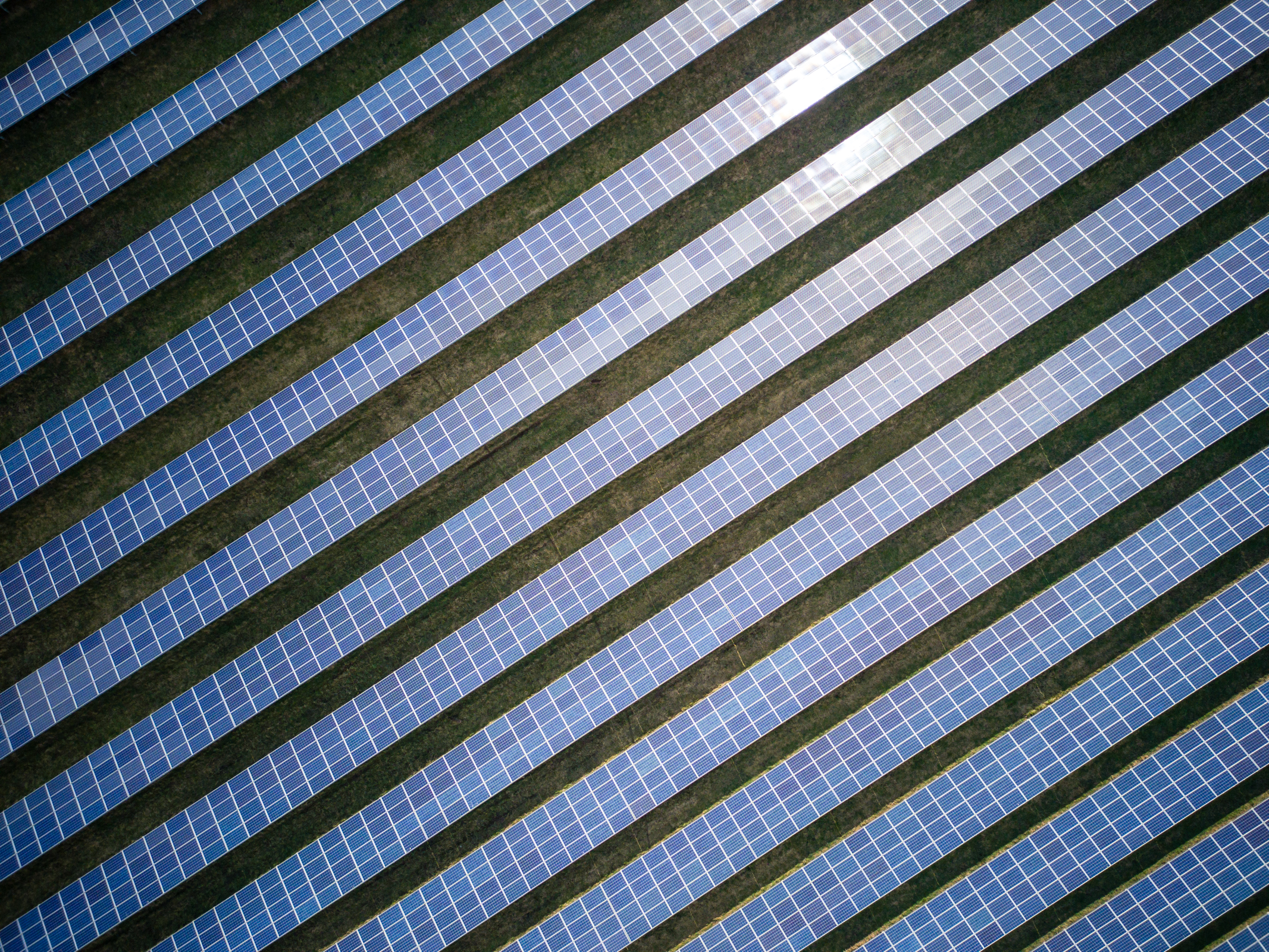
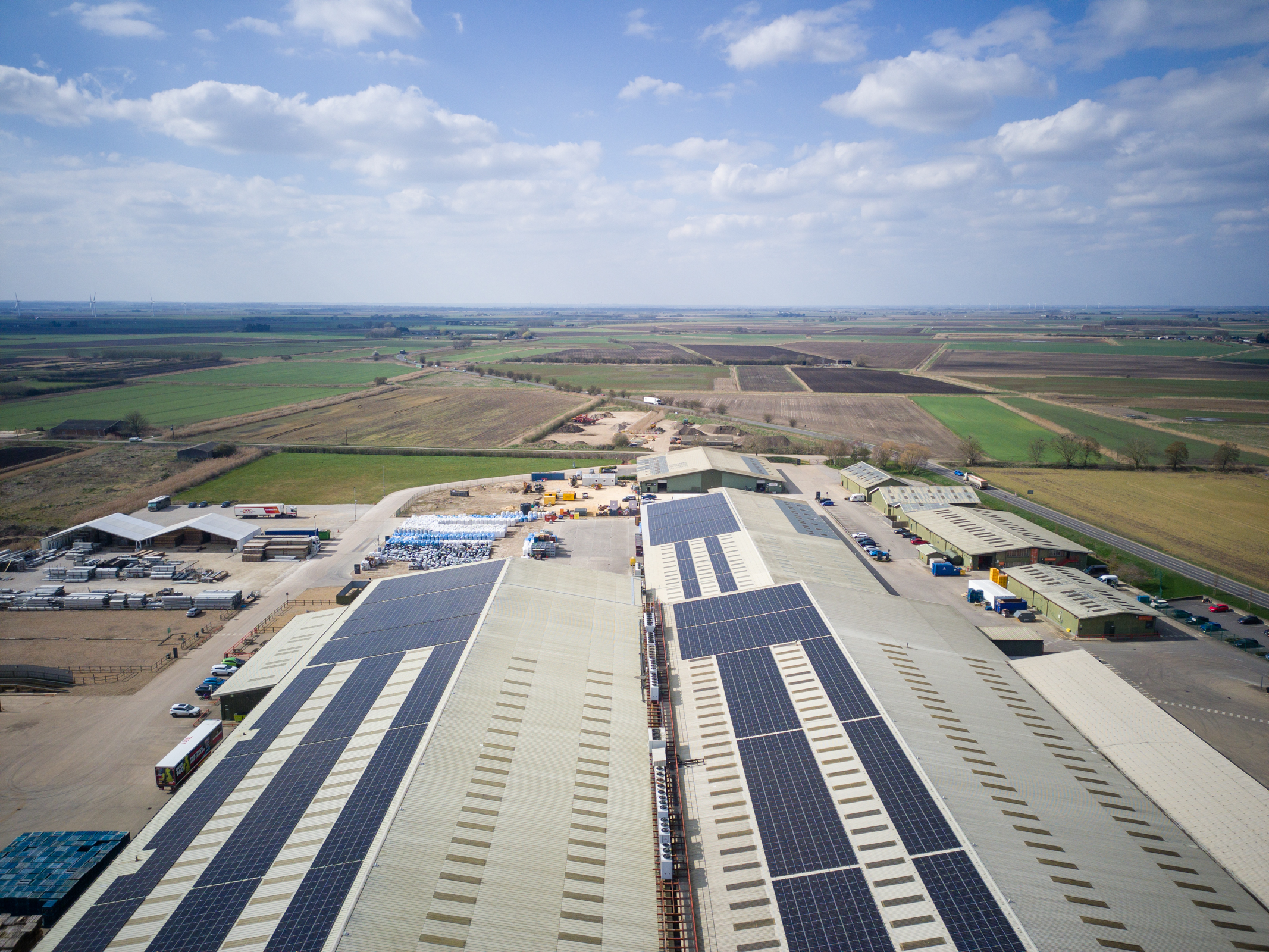


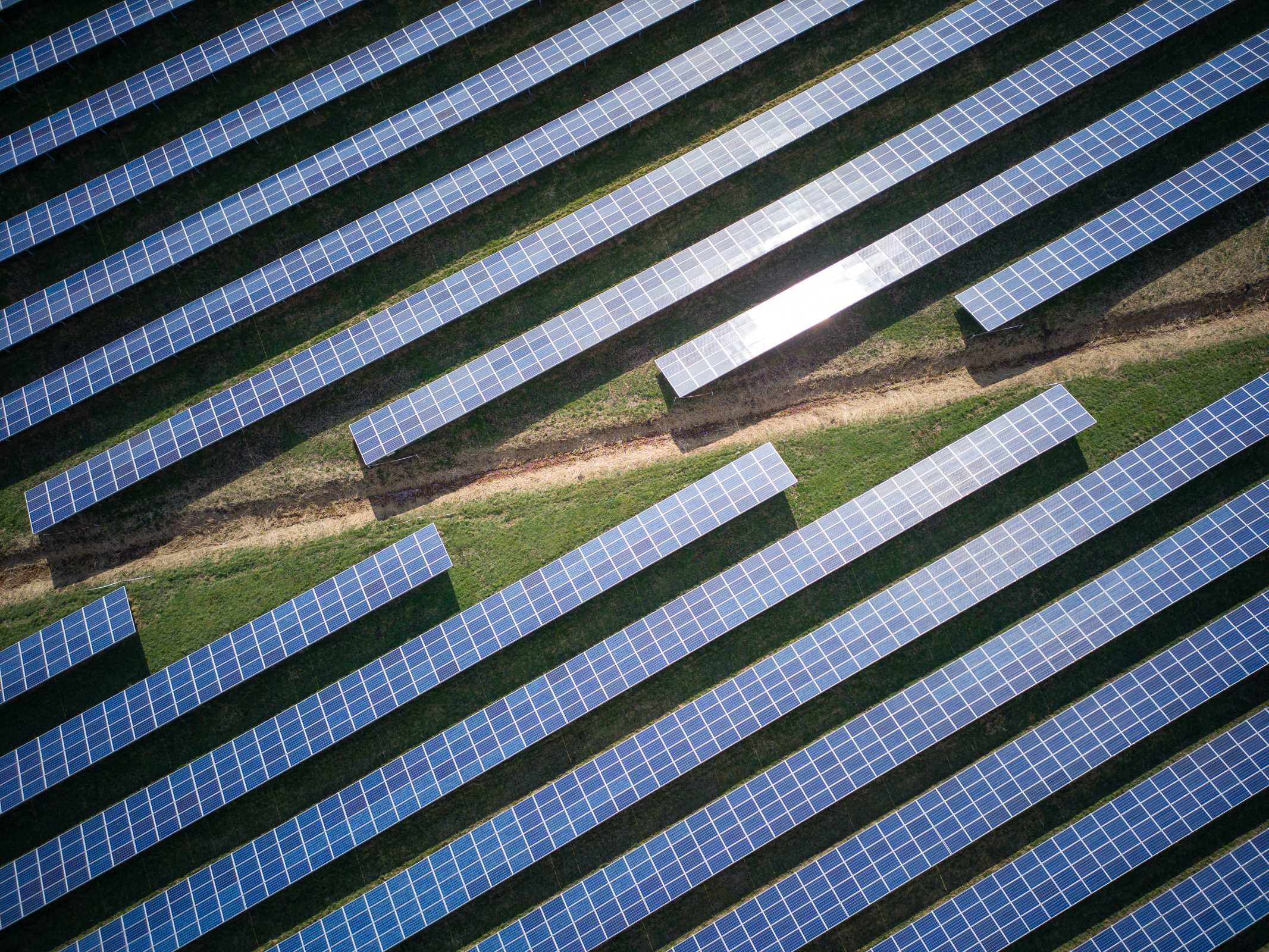
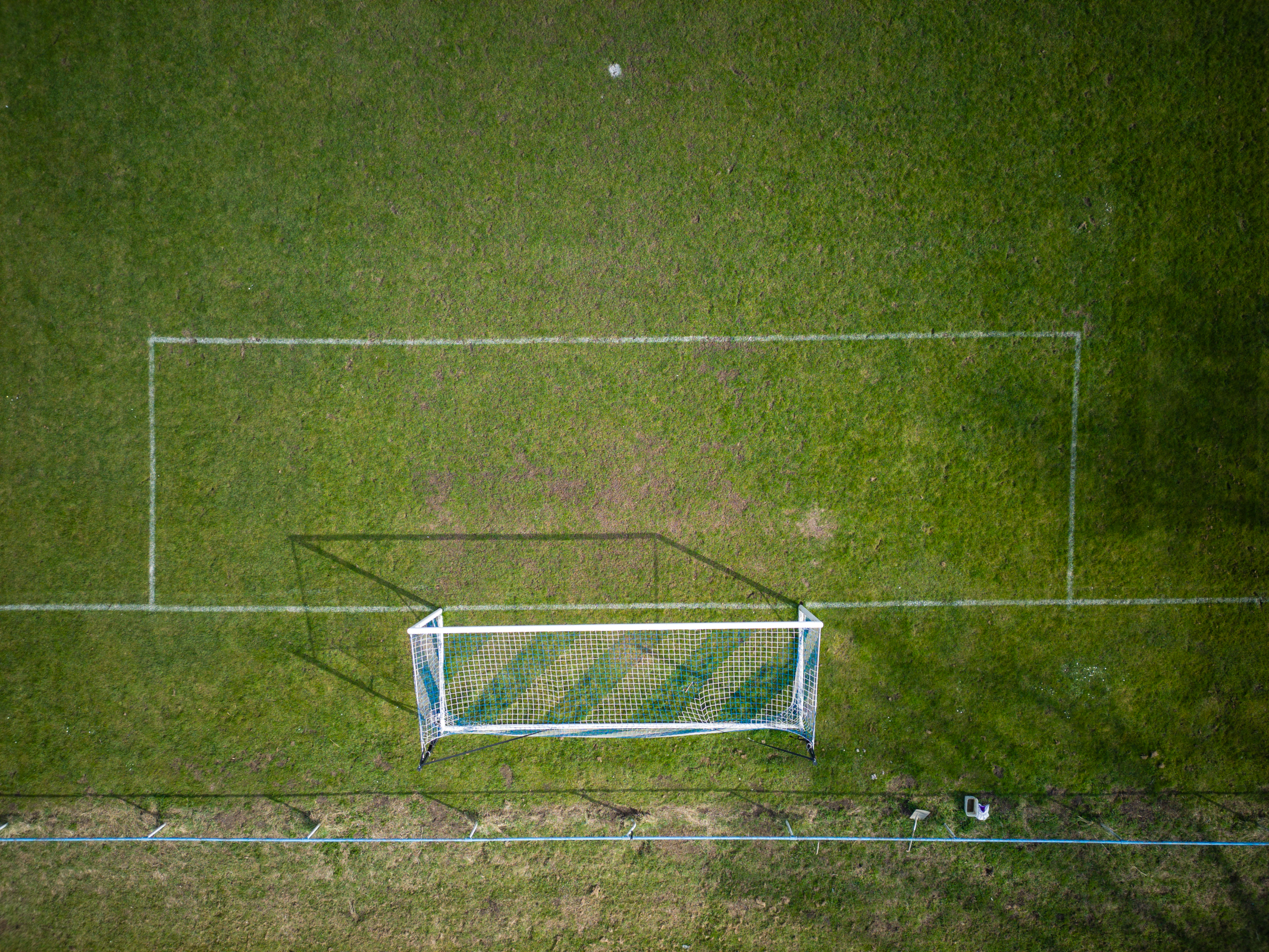


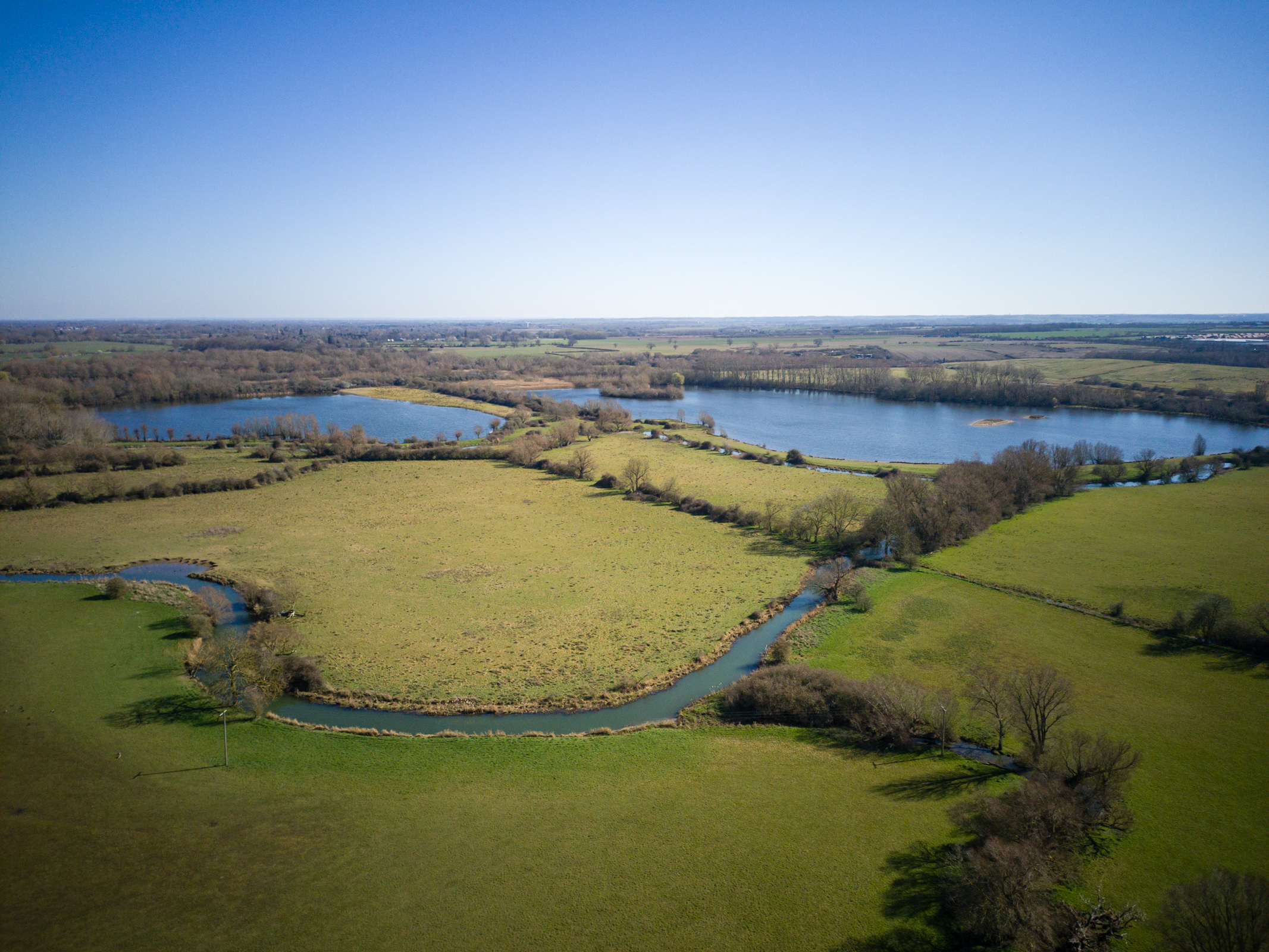
You also have the ability to switch between 12MP and 48MP photo capture, but doing so isn’t a straightforward decision when JPEG processing is as it is.
The caveat with 48MP/8K photo capture is that it's only available in JPEG format, and not in raw. This is an odd omission, and one that will hopefully be fixed in a future firmware update, alongside adding a histogram for aiding exposure. You also have the option of 9:16 vertical photo capture, in JPEG only, with file sizes at 1520 x 2704 pixels.
Video can be captured in 4K at 24/25/30fps, 2.7K at 24/25/30fps, FHD at 24/25/30fps, and slow motion FHD at 2/3/4/5x. The maximum video bit rate is 80Mbps, while color profiles currently include Normal and HDR. In a future firmware update, a flat P-Log color profile will be delivered to the Atom 2 for more advanced video capture.
A digital zoom is available at 4K up to 2x, 2.7K up to 3x, and FHD up to 4x. Photos can be zoomed in up to 2x. Image quality reduces but the feature can be useful. Additional photo features include Bracketing, Burst Shooting and Panorama.
The Panorama mode includes Wide Angle, 180 Degree and Vertical options, with Sphere set to be delivered in a future firmware update. Panoramas are stitched in-camera, and saved as JPEGs alongside the constituent images in JPEG format. There's also a Defog mode for shooting in hazy conditions, and an AI Night mode for capturing video at night. The latter reveals more shadow detail at night, but image quality is questionable.
- Image and video quality score: 4/5
Main example video
AI Night video
Potensic Atom 2: testing scorecard
Should I buy the Potensic Atom 2?
Buy it if...
You're on a budget
The Atom 2 is one of the most feature-packed 'mini' drones available for such a competitive price, so you can get a lot of bang for your buck with this drone.
You’re a drone beginner
This is a great drone for beginners, but also one that will meet your needs for years to come. In a nutshell, the Atom 2 won’t require an upgrade any time soon.
You'd like log footage
The P-Log color profile will be delivered in a firmware update, making the Atom 2 one of the least-expensive drones to be able to capture video in a flat Log color profile.
Don't buy it if...
You'd like 48MP raw files
Despite the 48MP sensor, 48MP photos can only be captured in JPEG format, with raw capture available at 12MP. If you want higher-resolution raw files you'll have to look elsewhere.
You'd like a telephoto camera
If you'd like a dual-camera drone with a wide-angle and medium telephoto lens the DJI Air 3S is a great option, albeit much more expensive. The Atom 2 does, however, have a digital zoom.
You need collision avoidance
If you'd like collision avoidance for flying confidently in complex environments, the DJI Min 4 Pro is going to be a much better option for you.
Potensic Atom 2: also consider
The DJI Mini 4K is slightly less expensive than the Potensic Atom 2, and offers similar features at a basic level. It doesn't offer the same subject-tracking, or more advanced features such as an interval timer for capturing timelapse videos, but if you'd like an inexpensive DJI drone capable of capturing 4K video and photos in raw and JPEG formats, it's a great budget option.
Read our in-depth DJI Mini 4K review
How I tested the Potensic Atom 2
- I tested all flight features
- I flew the drone in a range of conditions
- I tested all the camera functions
I tested the Potensic Atom 2 over several days of flying in a range of locations, environments and weather conditions (excluding rain) to test flight performance, flight features, overall handling, and image quality for both photo and video capture. All testing is conducted in a way that meets local aviation laws and restrictions to ensure that all flights are safe and legal.
Drones are always tested using manual flight patterns for videos that are typical of professional aerial video techniques for capturing visually interesting footage. This also provides the opportunity to test variables such as the connection between the drone and controller, latency between the two, and the accuracy of the controls and flight accuracy in general.
First reviewed March 2025
Ombar DC42 Dash Cam: one-minute review
It’s easy to stick with the big name best dash cams, but if you’re not fussed about brand then the low-key Ombar and its DC42 Dash Cam might be an alternative route to take. The Ombar DC42 Dash Cam I’ve been testing comes supplied as a bundle, which means there are two cameras inside the box. First up, the front-facing unit features a slender design that sits in landscape orientation well out of the way on a vehicle screen. It boasts 4K video capture too, plus very acceptable levels of audio, although there’s no rear screen, which might be a turn-off to some.
This is augmented by a second, rear-facing dashcam that shoots 2K. Instead of utilizing the same old barrel design that is seen in many dash cam bundles, this unit is a small rectangular design and can be easily mounted in the rear window of the majority of vehicles. Everything works via a series of cables, with one going to the power and the other connecting the cameras together. In this respect, it’s worth remembering that there is quite a lot of cable to feed in behind trim panels during the installation process. Both cameras are held in place by supplied sticky pads that adhere to the mounting plates and screen glass.
The Ombar DC42 Dash Cam has to be one of the easiest models to setup and configure, with much of this needing to be done via the supplementary app. The front camera unit also hosts some handy LEDs, one in red to tell you it’s recording neighbored by a small green LED that indicates GPS is activated. Microphone and camera reset holes sit immediately adjacent to them. Another benefit is down to the design, which alongside being super svelte offers a sliding mount that enables quick and easy removal of the front-facing camera if and when it is needed.
Adding to the appeal is the specification, which includes 170-degree field of vision for the front camera, 5G Wi-Fi, voice guidance, night vision, 64GB of storage and parking monitoring. The latter functionality requires an optional hardwire kit. Indeed, the Ombar DC42 Dash Cam comes with a dazzling array of features and functions given the fact that it retails for just over the $100/£100 mark, which makes it a great option for anyone on a budget. There’s a supporting Ombar ‘Kacam’ app too. This takes the place of a rear screen on the main unit and provides all of the tools needed for file management, as well as initial setup.
Another bonus with this bundle is that the Ombar DC42 Dash Cam comes with a supplied 64GB microSD card, which slots into the end of the front camera. Everything else needed is in the box too, with all wires and fixings supplied. However, it’s worth remembering that the Ombar DC42 Dash Cam is just like the majority of other models in that it will need permanent fixing in your vehicle using an optional hardwire kit if all of the static parking and 24-hour monitoring tools are required. Nevertheless, this is a straightforward fitment job for any qualified individual and can even be attempted by novices if time and care is taken.
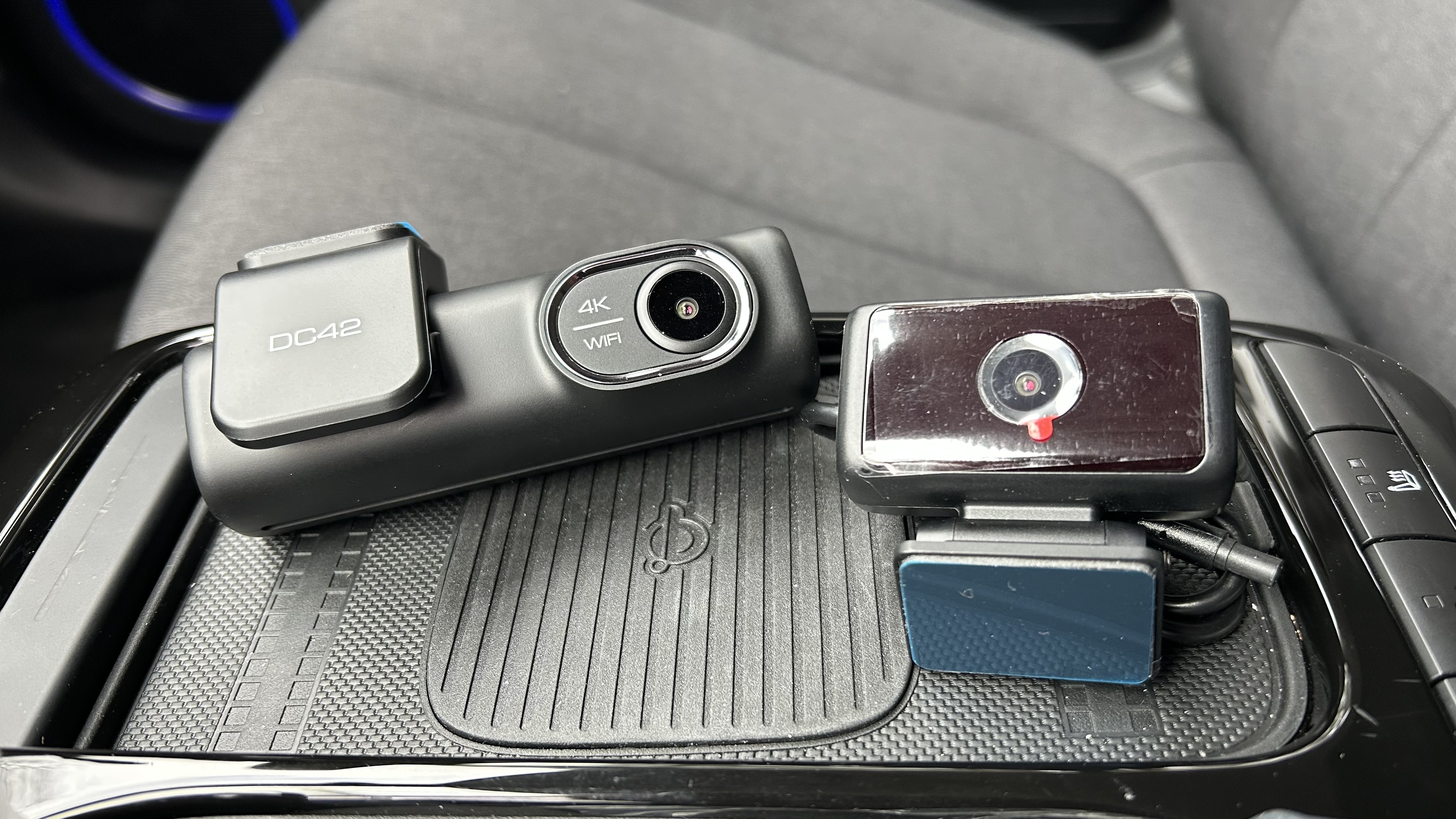
Ombar DC42 Dash Cam: price and availability
The Ombar DC42 Dash Cam is available now and, in the bundle arrangement I’ve been testing, can be purchased from the manufacturer’s website. It’s listed there as the OMBAR DC42 Dash Cam Front and Rear 4K/2K/1080P+1080P 5G WiFi GPS and currently costs just $107.99 (around £84). This represents a $12 saving over the original cost price of $119.99 although shipping needs to be added and depends on the delivery location and route using either the US postal service or UPS.
Ombar DC42 Dash Cam: specs
Ombar DC42 Dash Cam: Design
I rather like the design of the Ombar DC42 Dash Cam. It’s very sleek and slender, which worked well when I tried it in a couple of different models of vehicle. In fact, it can sit quite happily just behind the rear-view mirror and is barely visible.
The unit looks and feels well made too, featuring a construction of grey heavy-duty plastic, along with a selection of ports and LEDs that also look and feel very durable during daily use. Of course, the downside here is there’s no rear screen, but a respectable supporting app takes good care of dash cam and file management.
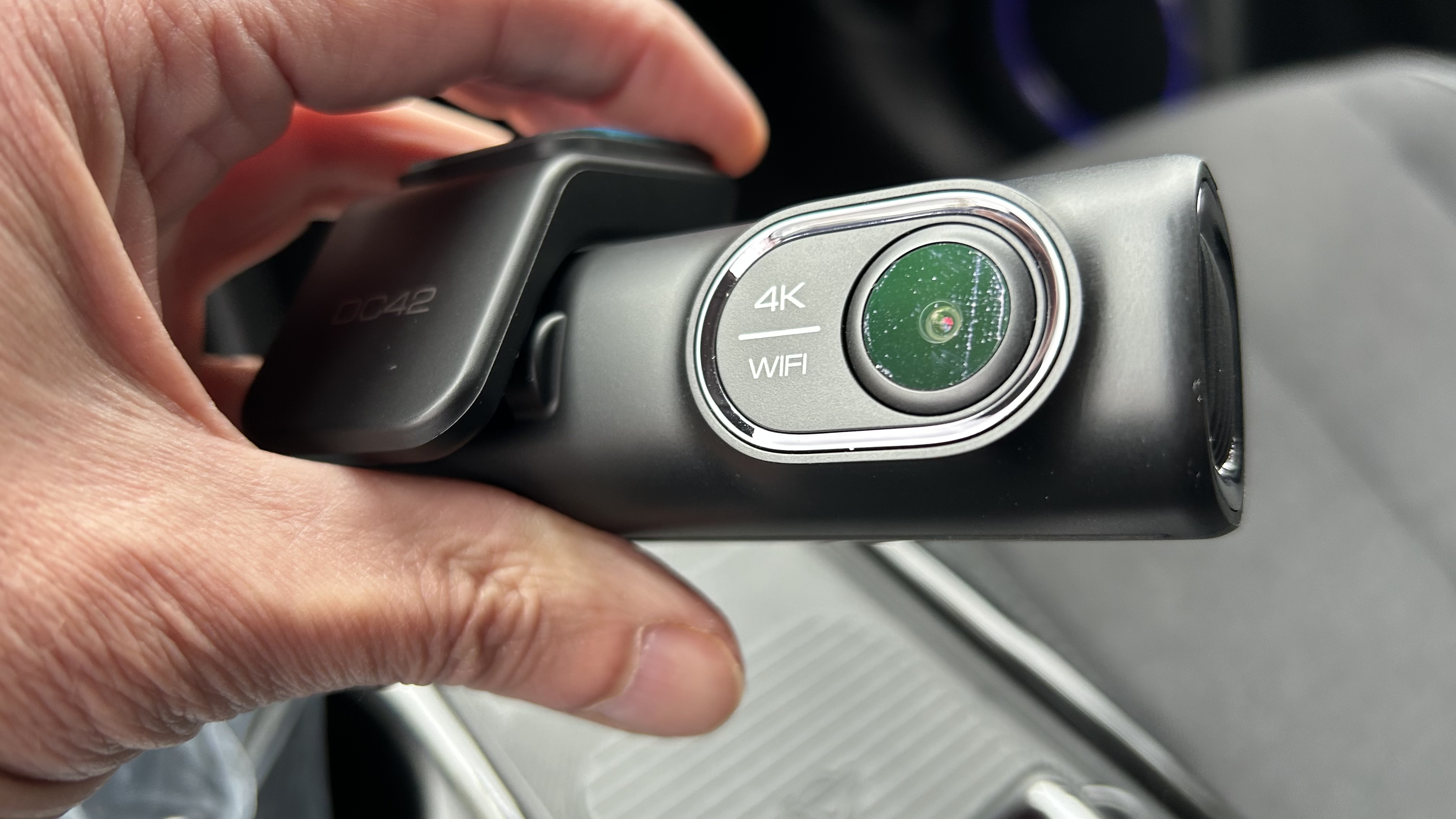
Backing it up is the secondary camera, which sports a neat little rectangular design that sits happily in the rear window of a car. Both cameras are affixed using self-adhesive pads attached to brackets. The one for the front camera has a handy slider mechanism, so it can be detached quickly and easily if you need to take it with you for some reason.
Then there’s the cabling, which is standard issue dash cam wiring that needs to be fed behind trim panels in the car. The rear camera wire connects with a push fit to link it to the front unit.
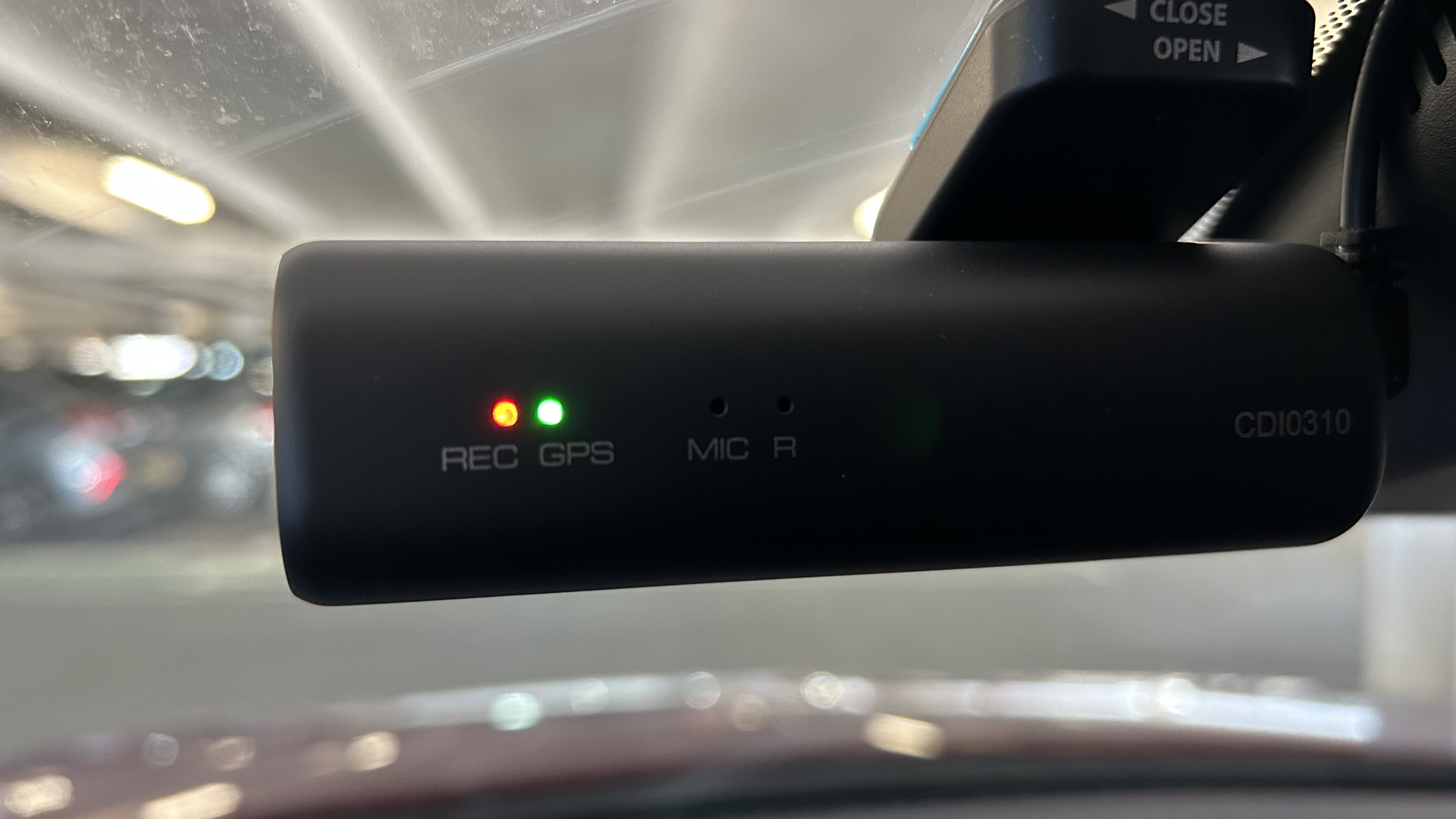
Ombar DC42 Dash Cam: Performance
Considering the Ombar DC42 Dash Cam is essentially a budget model, this is an impressive bundle arrangement. The front-facing camera delivers crisp and clear F1.8 aperture, 4K, UHD footage shot at 3840x2160p maximum with very good audio as well. The rear-facing unit is a 2K capable offering, but the footage is still very serviceable and feels like it would definitely be of use in the event of any kind of incident. After installation, I found the Ombar DC42 Dash Cam to be reassuringly low maintenance.
In fact, it operated seamlessly and offers an audible alert once you’ve switched the vehicle on, plus there’s the bonus of the LEDs that glow to show the camera is working. I found this handy considering there’s no rear screen for this model. The so-called Kacam app, by Ombar itself, is neat too with a user-friendly interface that doesn’t deliver any surprises.

File transfer is impressive as well thanks to up to 5Ghz transfer rates. Ombar keeps its processor information quite well hidden, but to be honest I couldn’t fault the Galaxycore internals, which certainly never failed during my time using both dash cams.
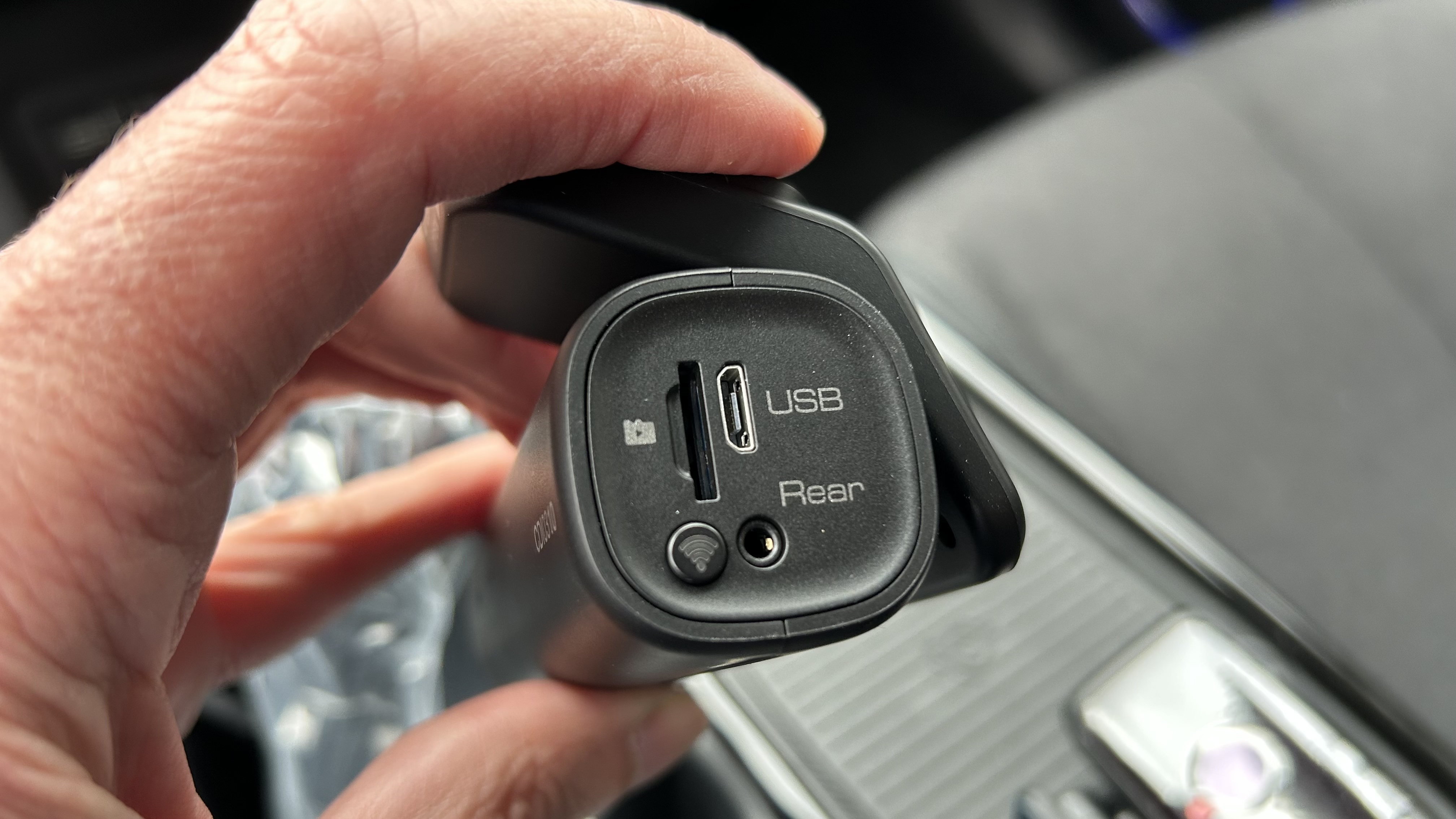
I’ve been mightily impressed by the after-dark capabilities of the Ombar DC42 Dash Cam, which makes it very notable as the WDR and Super Night Vision tools built-in seem able to capture license plates and road signs without fuss or bother. This adds additional value to the Ombar DC42 Dash Cam and, again, makes the dash cam bundle particularly appealing if you make a lot of journeys after the sun has gone down.
Another extra that I got good use from was the voice prompt feature, which allowed me to confirm settings, like if the Wi-Fi was connected. Rounding out this impressive package is the benefit of built-in GPS tracking, which is always good for gathering data about any journey, including date, time and speed.
Should you buy the Ombar DC42 Dash Cam?
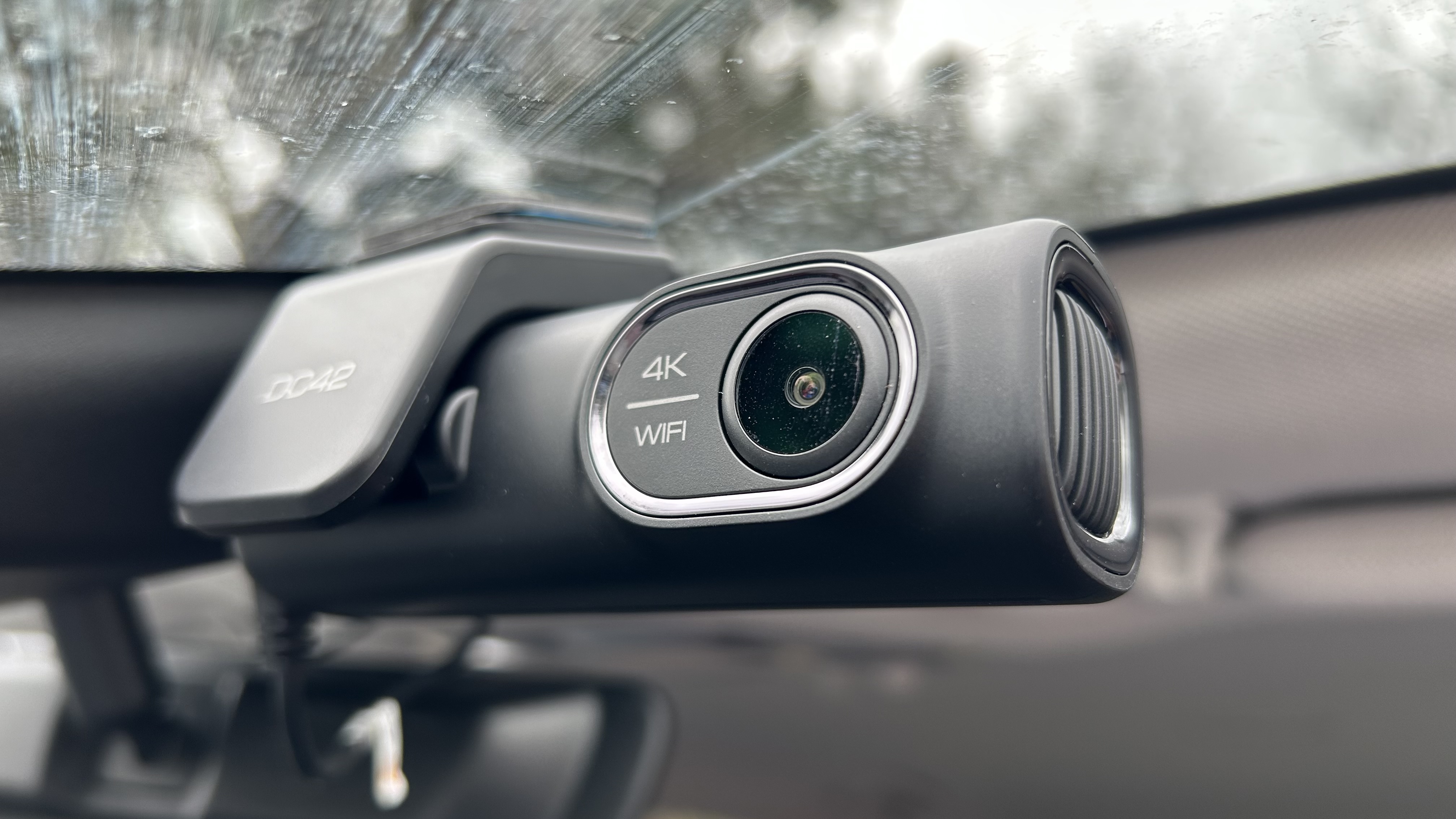
Buy it if...
You’re a newbie or need a replacement
The Ombar DC42 Dash Cam makes a lot of sense for anyone who wants to get a dashboard camera for the first time or simply replace an older, outdated model.
Features and functions matter
Surprisingly for an affordable package, the DC42 packs in a lot of functionality for something so frugally priced even though there’s no rear screen.
You want all round coverage
This model has the benefit of twin cameras, which offer a reassuring level of coverage for both the front and back of your car.
Don't buy it if...
You require a rear screen
The Ombar DC42 Dash Cam lacks a rear screen, which can be a turn-off although the supporting app works as a great replacement.
Only front-facing is needed
This review features a twin-camera setup, which means there are more cables to install and that might not be needed by some.
You like an imposing design
Having a visible dash cam can be handy when you’re behind the wheel, but this model’s svelte lines are quite easy to miss.
How I tested the Ombar DC42 Dash Cam
- I installed the dash cam into two test cars for an initial period of three weeks
- I used it for numerous journeys during both day and night
- I connected it to my phone and downloaded recordings for comparison
I got to test the Ombar DC42 Dash Cam over the course of a few weeks and had the benefit of being able to try it in more than one vehicle. That allowed me to check just how flexible the design was, especially when it came to removing the dash cam after use. The sliding bracket is super handy, although this does leave the base bit sticking to the windshield, which has to be removed for installation in another car.
However, due to the temporary fitment situation, I wasn’t able to fully explore the parking features, which requires permanent installation using the optional hard wire kit. Nevertheless, based on performance during daylight and after dark hours, I have every reason to think that the Ombar DC42 Dash Cam should work very well in this scenario. I particularly liked the low maintenance way it just got on the with job.
- First reviewed March 2025
Canon PowerShot V1: two-minute review
There's been a buzz surrounding the PowerShot V1, principally because the compact V-series vlogging camera is like a bigger sibling to the trending (and dated) PowerShot G7X Mark III, with an all-new 1.4-inch sensor and 16-50mm lens.
Put the two cameras side by side and the design / control layout similarities are clear (see below) – these are pocketable compact cameras, with the PowerShot V1 being the bigger of the two, and both offer impressive suites of video features.
The PowerShot V1's most obvious rival is the Sony ZV1-II, while the DJI Osmo Pocket 3 is a gimbal-stabilized alternative, and in many regards the well-rounded PowerShot V1 is a clear winner, even if there's a strong case to be made for DJI's take on the format.
Headline features include that 22.3MP, 1.4-inch sensor. That's a rare sensor size – it's essentially the same as Micro Four Thirds, but in 3:2 aspect ratio rather than 4:3. It measures 18.4 x 12.3 mm – much bigger than the 1-inch type used in the aforementioned rivals, which measures 13.2mm x 8.8mm.
A bigger sensor size in general means better image quality, but there are caveats. The notable PowerShot V1 drawback for me is the f/2.8-4.5 maximum aperture of its 3.1x optical zoom lens. Compare that to the ZV-1 II's f/1.8-4, and the PowerShot G7X Mark III's 4.2x zoom with a f/1.8-2.8 maximum aperture, and the V1 comes up short for light-gathering capabilities, which in some respects counters the image-quality advantage of its larger sensor.
Still, it's the widest lens of the bunch, with a 16-50mm range that's ideal for vlogging. Even with digital image stabilization active and the consequent image-area crop applied, the framing is plenty wide enough for vlogging with the camera at arm's reach – that extra 2mm at the wide end goes a long way.

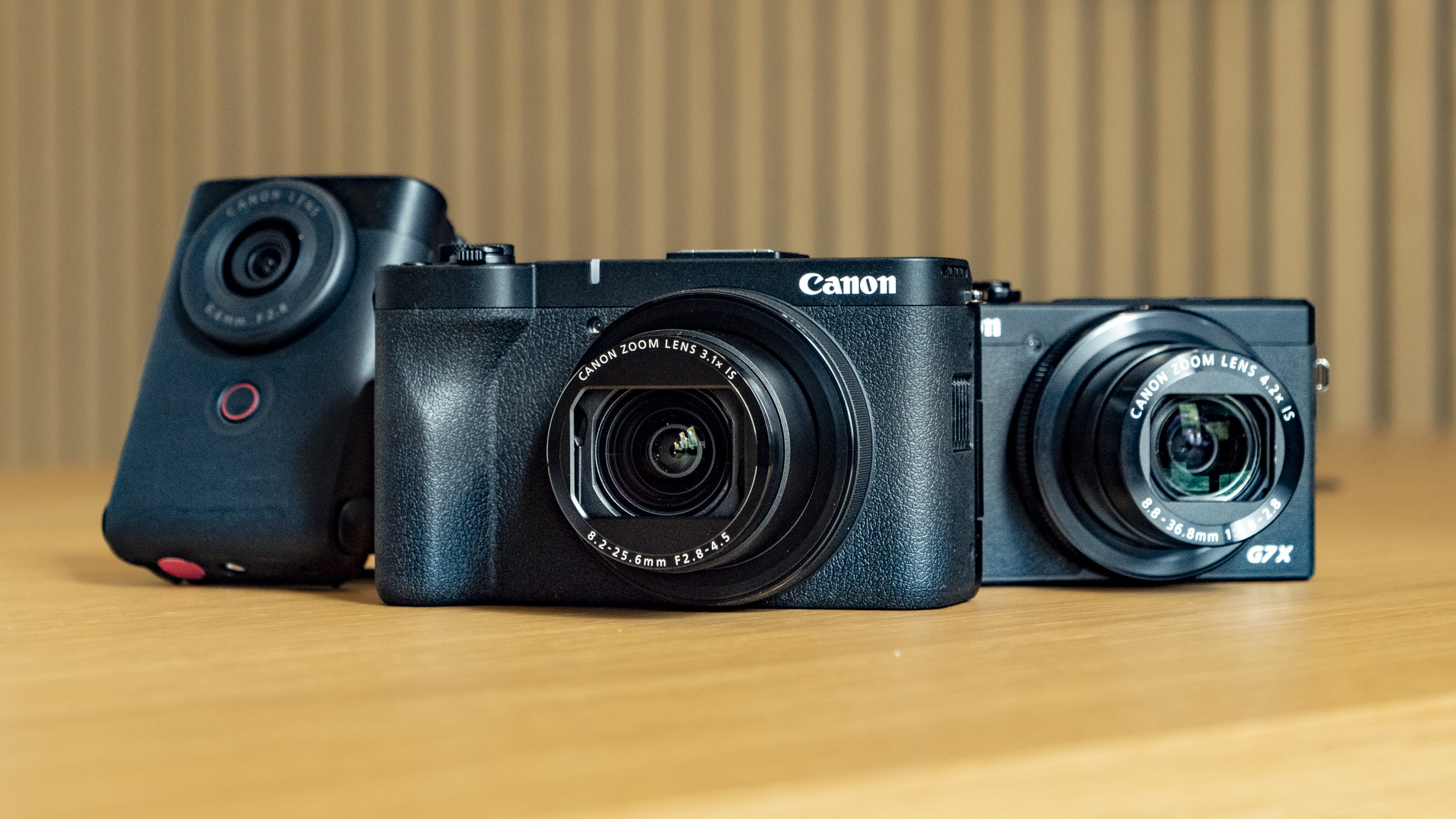
The comprehensive suite of video features includes cooling vents and unlimited 4K 30fps video recording times, a built-in ND filter, Canon's best-ever autofocus for a PowerShot compact, plus mic and headphone ports.
Photographers are well catered for too, with a hotshoe accepting an external flash (but not 5-pin ones), and a rapid 15fps burst shooting speed that's doubled when using the electronic shutter, ably supported by that reliable subject-tracking autofocus.
Image stabilization is unavailable when shooting 4K video at 60fps, plus there's a 1.4x crop using this setting – I'm sure I'll discover a few more drawbacks when I have the camera back in for in-depth testing.
However, the PowerShot V1 makes a strong first impression. As a complete package with Sony-beating features and a relatively decent price, it looks set to be a vlogging star.
Canon PowerShot V1 specs
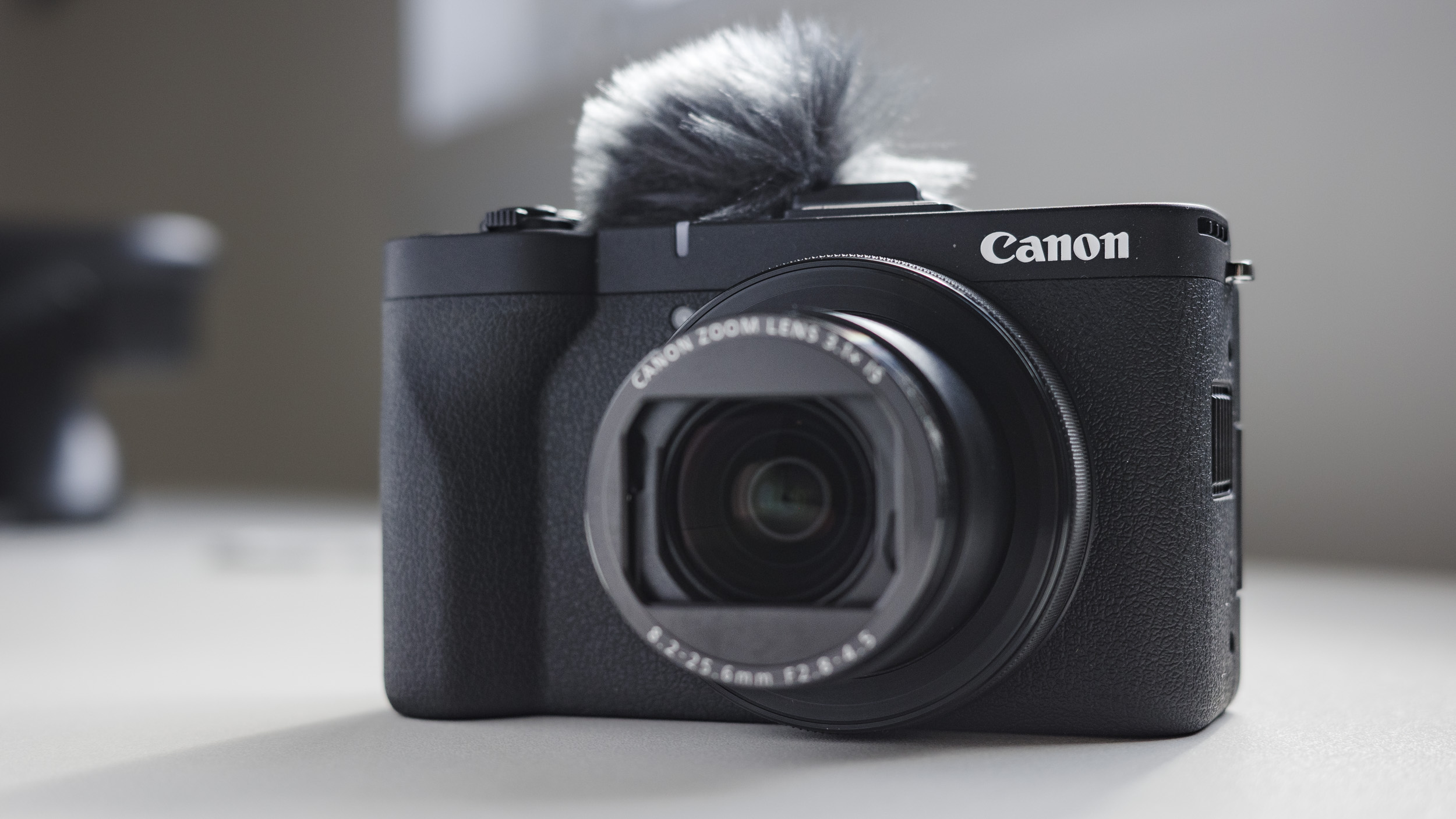
Canon PowerShot V1: Price and availability
- £959.99 / AU$1,449 (US pricing TBC)
- Available from early April, exact date TBC
The Canon PowerShot V1 costs £959.99 / AU$1,449, with US pricing to be confirmed, and is due to hit the shelves in early April (Canon Australia says 'late April', with an exact release date also yet to be confirmed by Canon.
That starting price is less than what the older G7X Mark III currently goes for, with scalpers are capitalizing on the smaller model's popularity. However, the Sony ZV-1 II costs around 20% less than the V1, while the DJI Osmo Pocket 3 is about half the price.
Canon PowerShot V1: Design
- 16-50mm f/2.8-4.5 lens with customizable ring and 5EV optical stabilization
- Similar design and control layout to the PowerShot G7X Mark III
- Includes hotshoe, tally lamp, headphone and mic ports
Canon has created a well-rounded and solid compact camera with a focus on video, but which also packs a solid suite of photography features.
Its design and control layout are strikingly similar to the PowerShot G7X Mark III's (see below), but on a larger scale that has enabled extra features such as a hotshoe, vari-angle screen, plus of course that larger sensor.
The camera sits nicely in the hand thanks to a generous handgrip, and is adorned with a number of customizable buttons and controls, with special mention going to the lens ring, which is ideal for making quick changes to aperture or your desired setting.

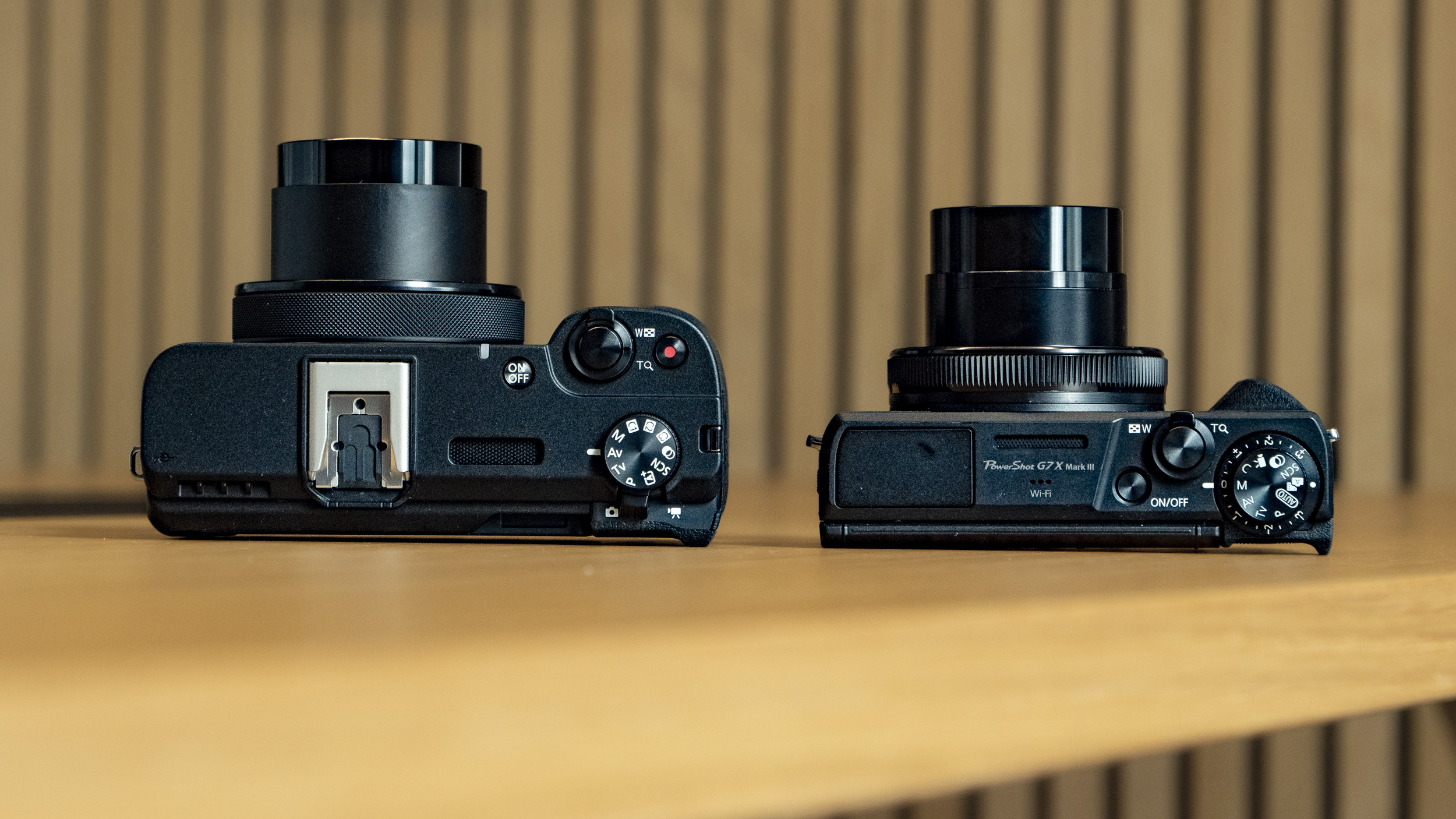

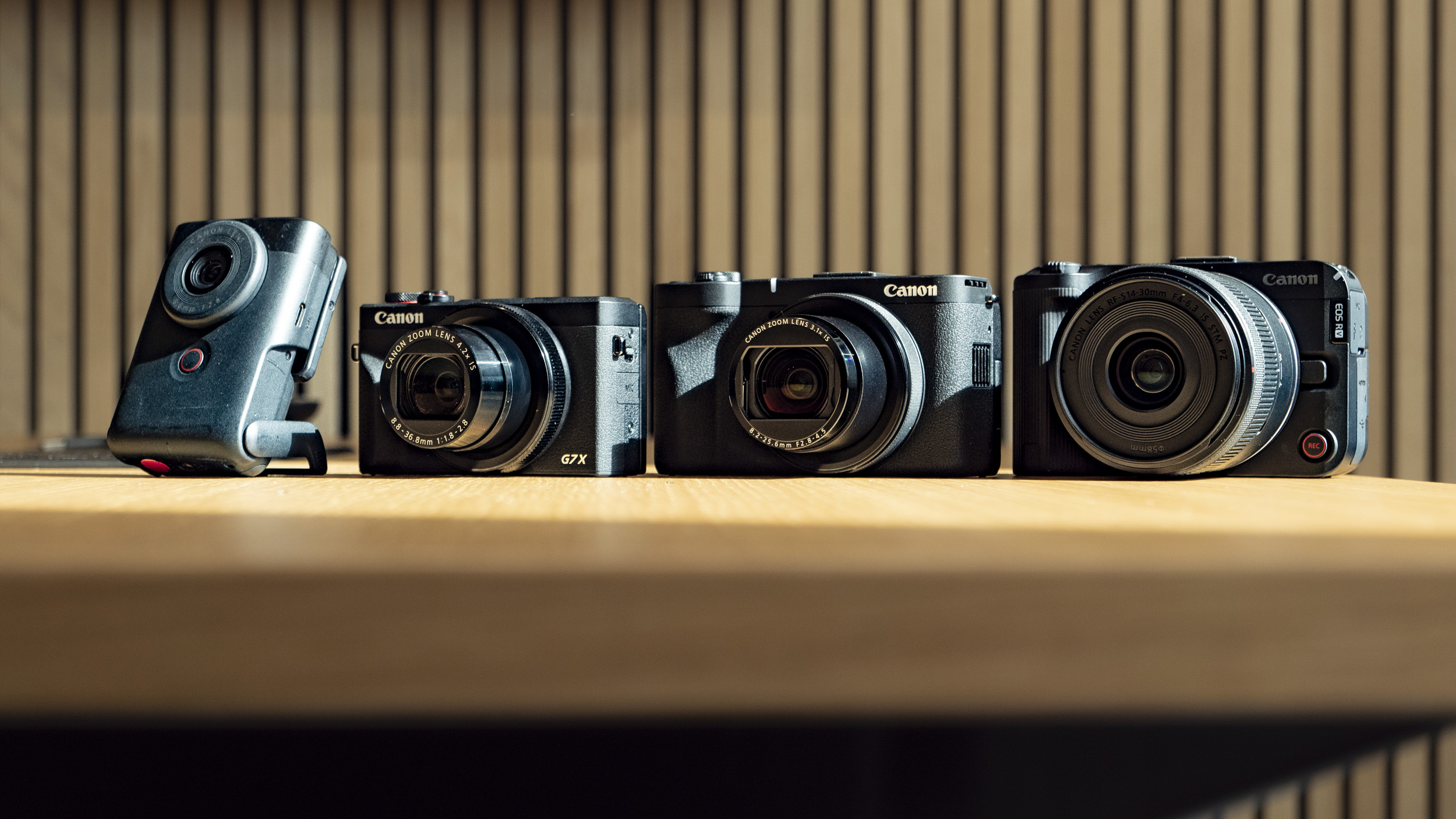
With the camera off and the lens retracted, I'd call the PowerShot V1 pocketable, which is impressive given the decent-size 1.4-inch sensor within.
A vari-angle touchscreen is pretty much the norm in 2025 for video-focused cameras – it can be flipped out and tilted upwards for easy viewing from awkward angles when shooting horizontally, and flipped around for vlogging.
Another handy feature for vlogging is a tally lamp, which lights up red to confirm when you're recording. You can also opt for manual focus peaking and zebra display, plus timecode – again, all handy video features.
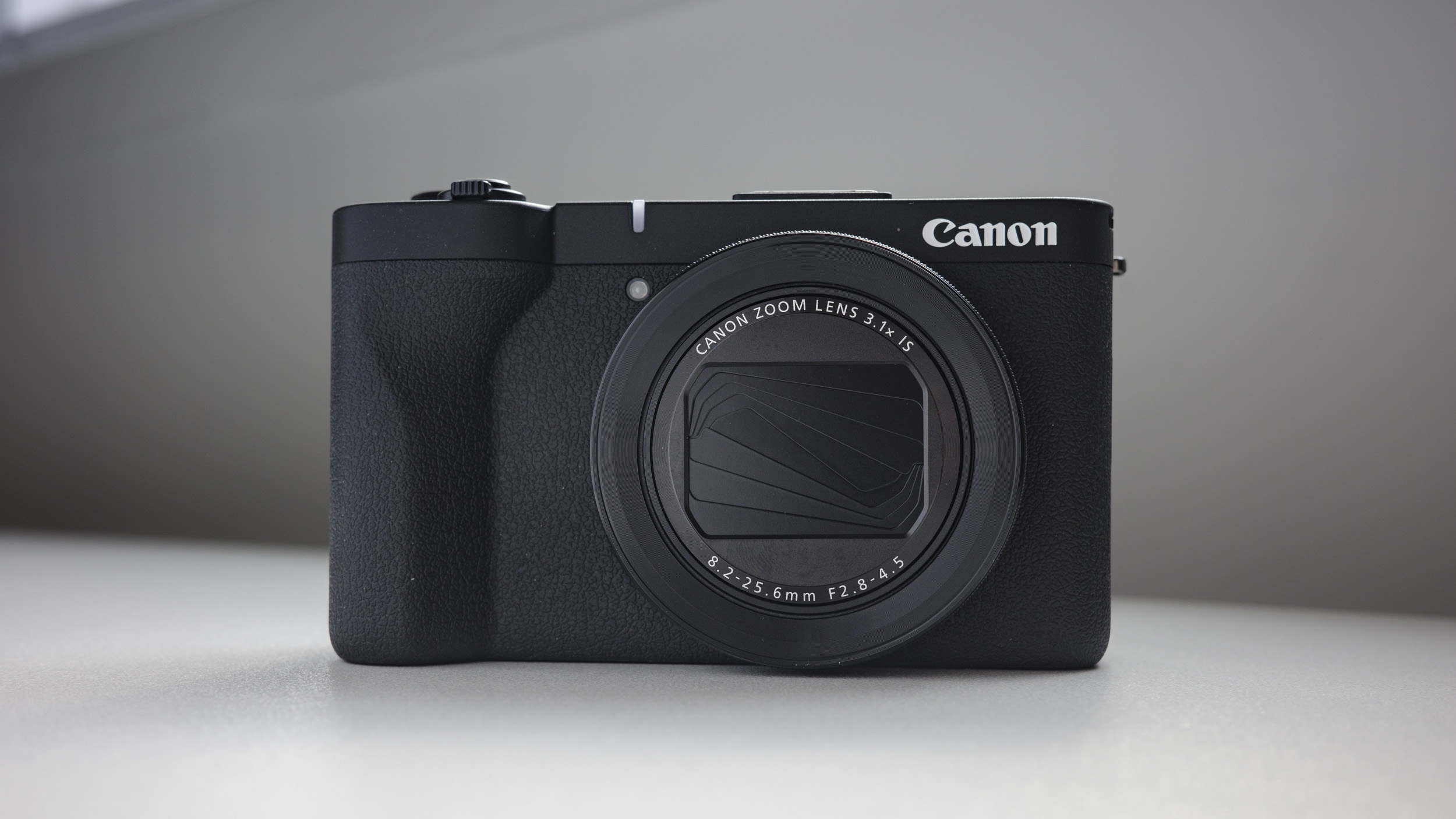

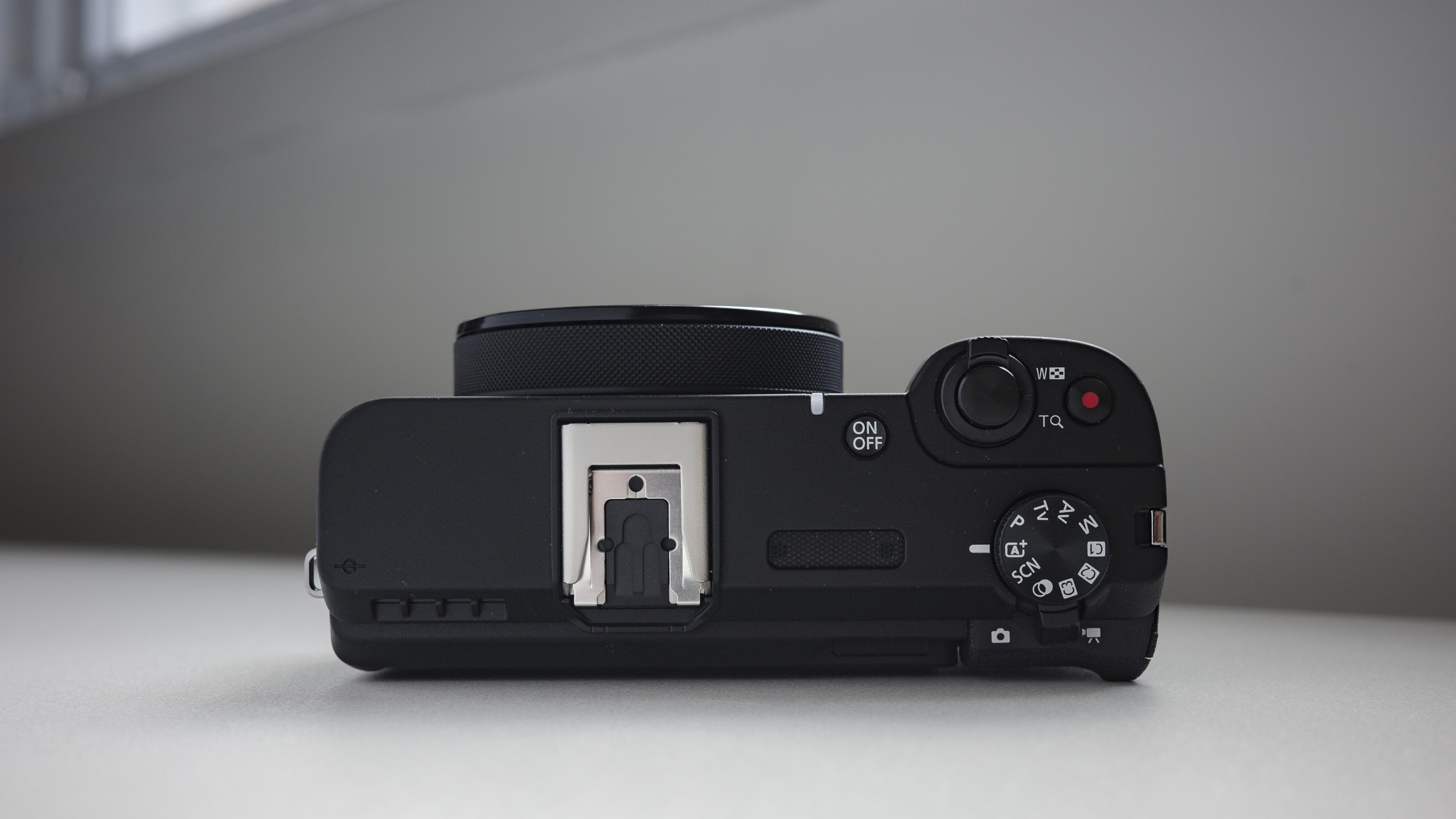
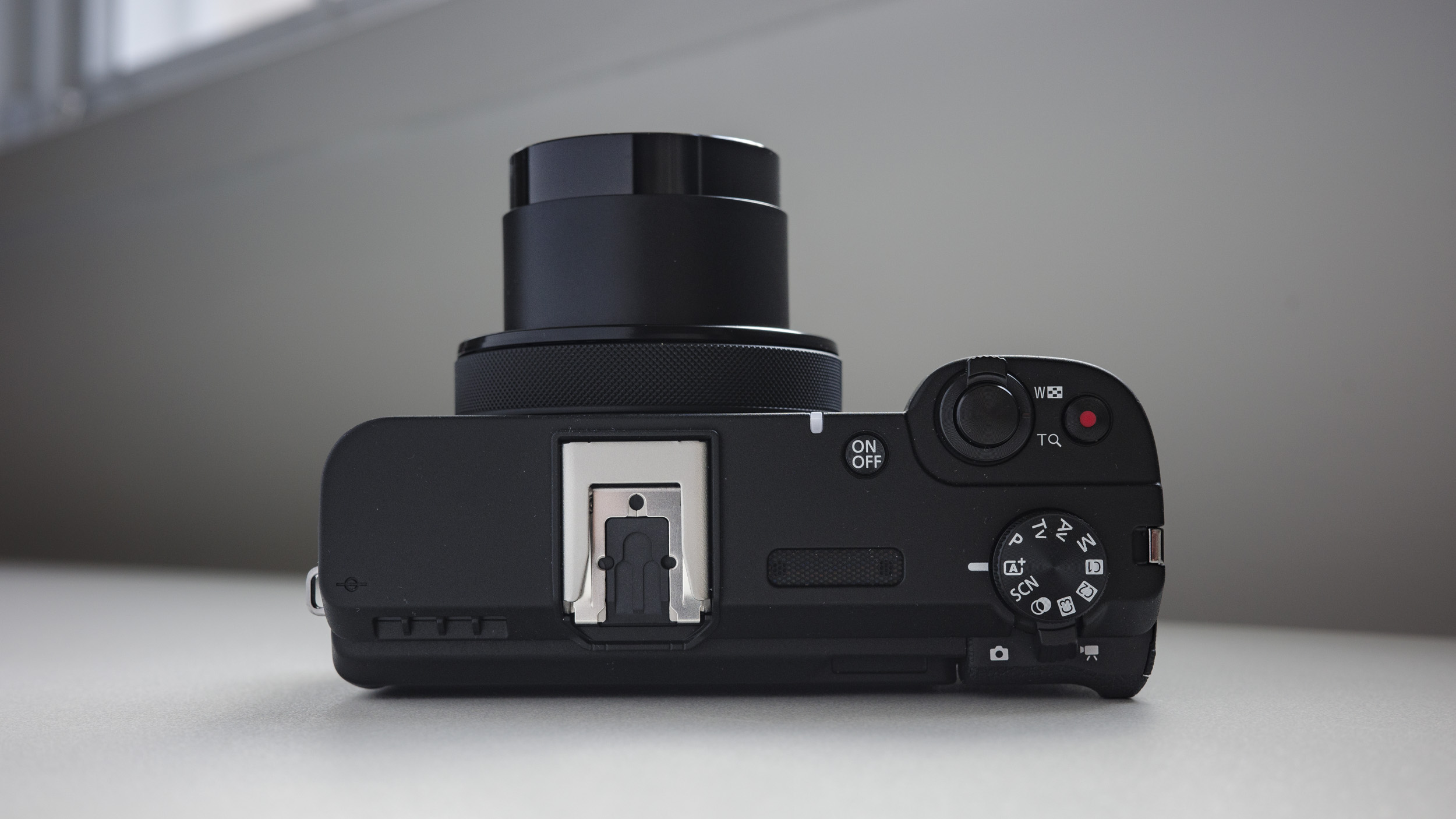
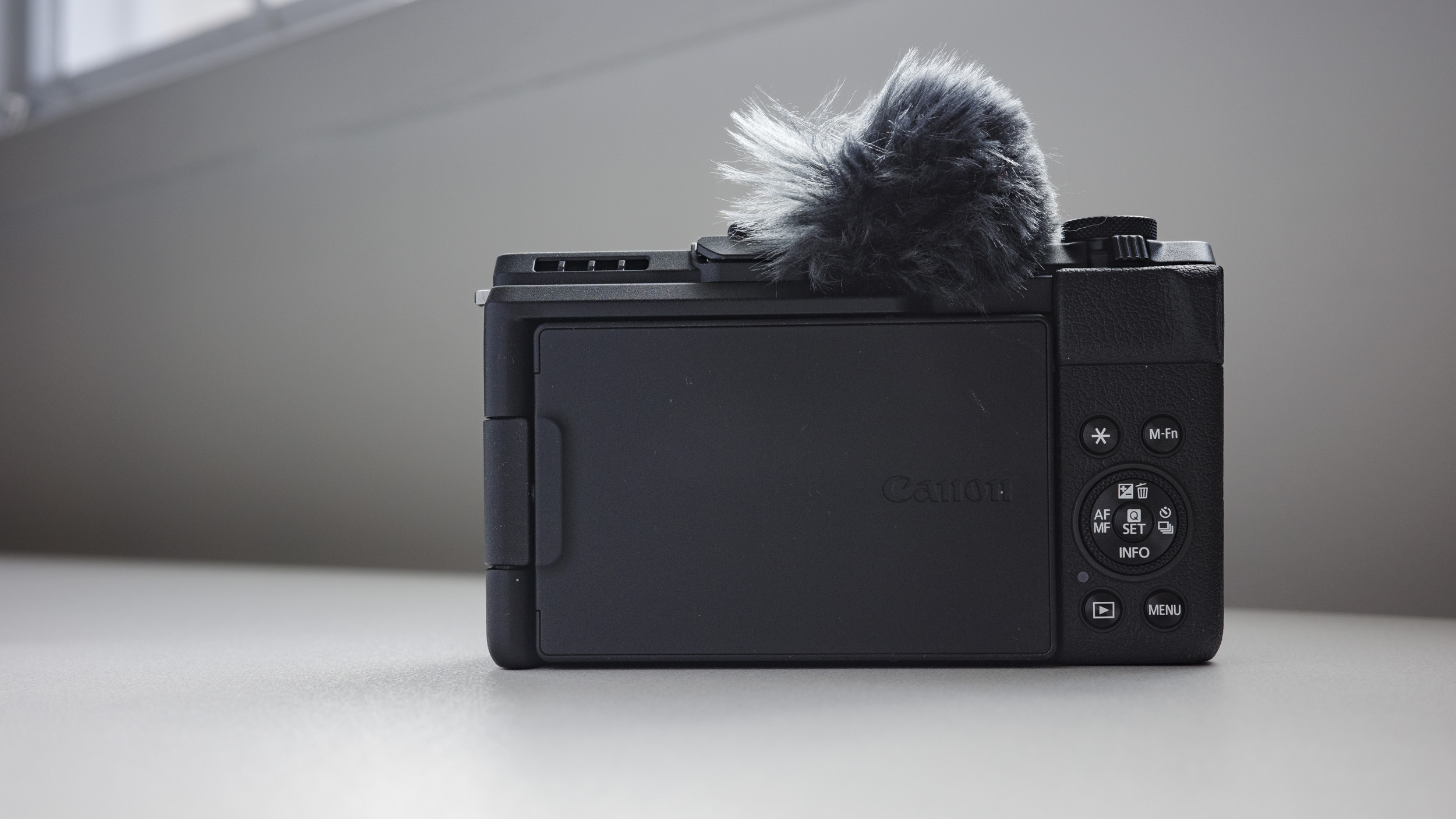

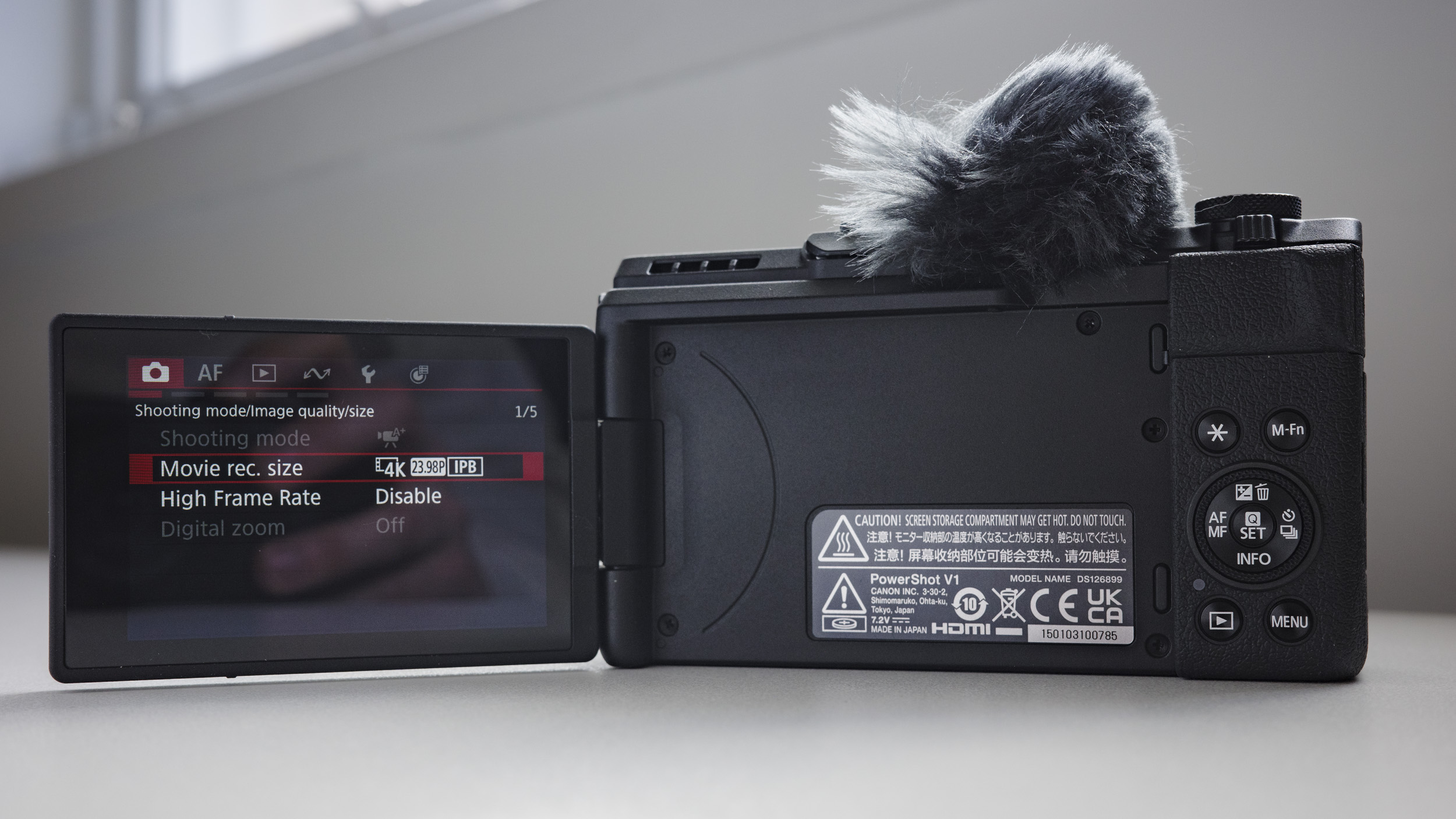
Cooling vents are found on the top and left-hand side of the camera, and these effectively enable unlimited 4K video record times. This isn't the sort of feature I'd expect in a camera at this level and price point, so kudos to Canon for that.
There's a decent internal mic, and Canon provides a wind muff with the camera that slots into the hotshoe to be positioned over the mic for clearer audio on breezy days.
When using the internal mic, the wind muff feels like a must, even if it somewhat obstructs some of the camera controls, such as the on/ off switch.
Still, if you're a serious creator you'll be using an external mic instead, and these can be connected using the 3.5mm mic input, with sound monitoring possible through headphones and on-screen.
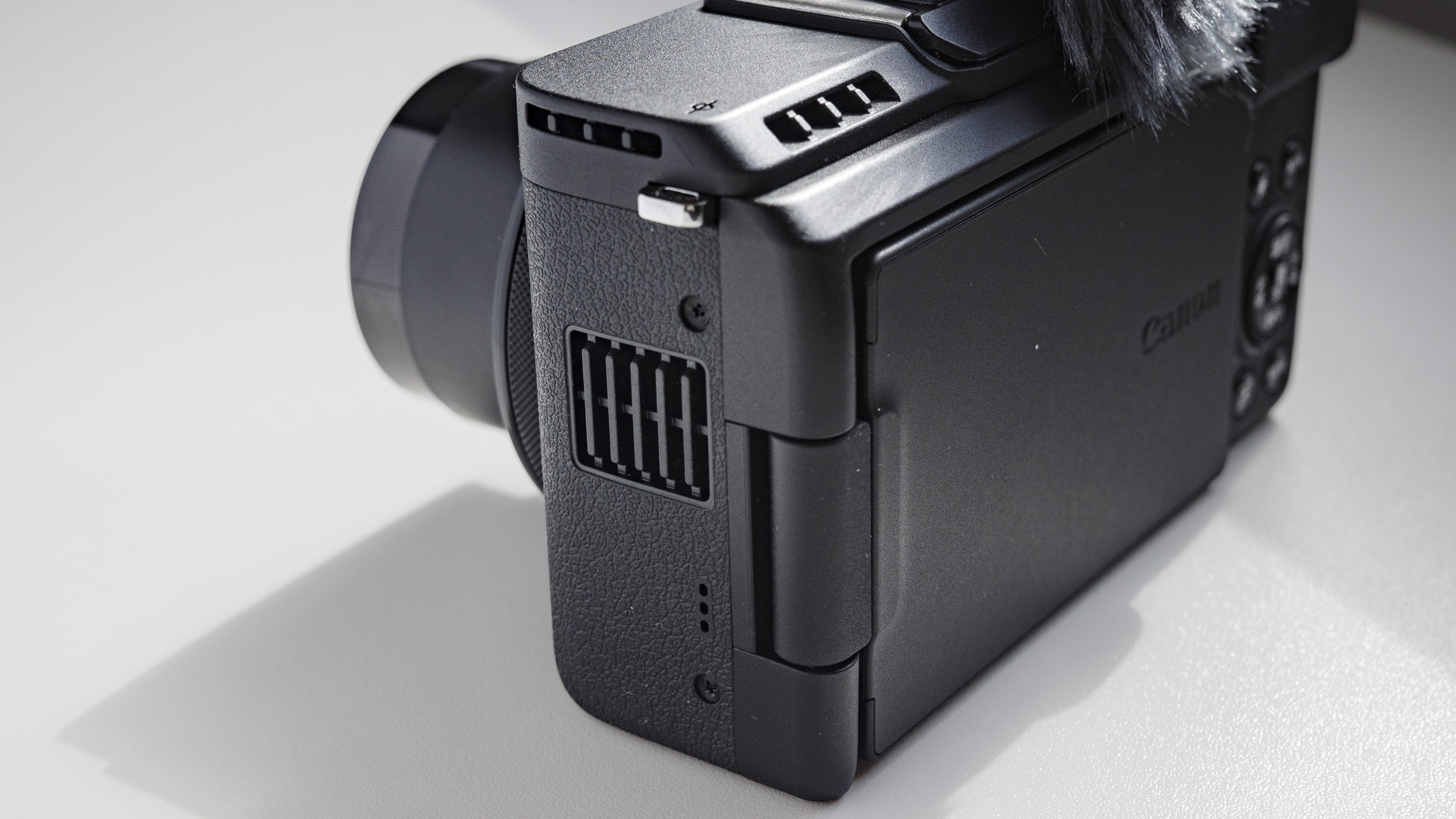

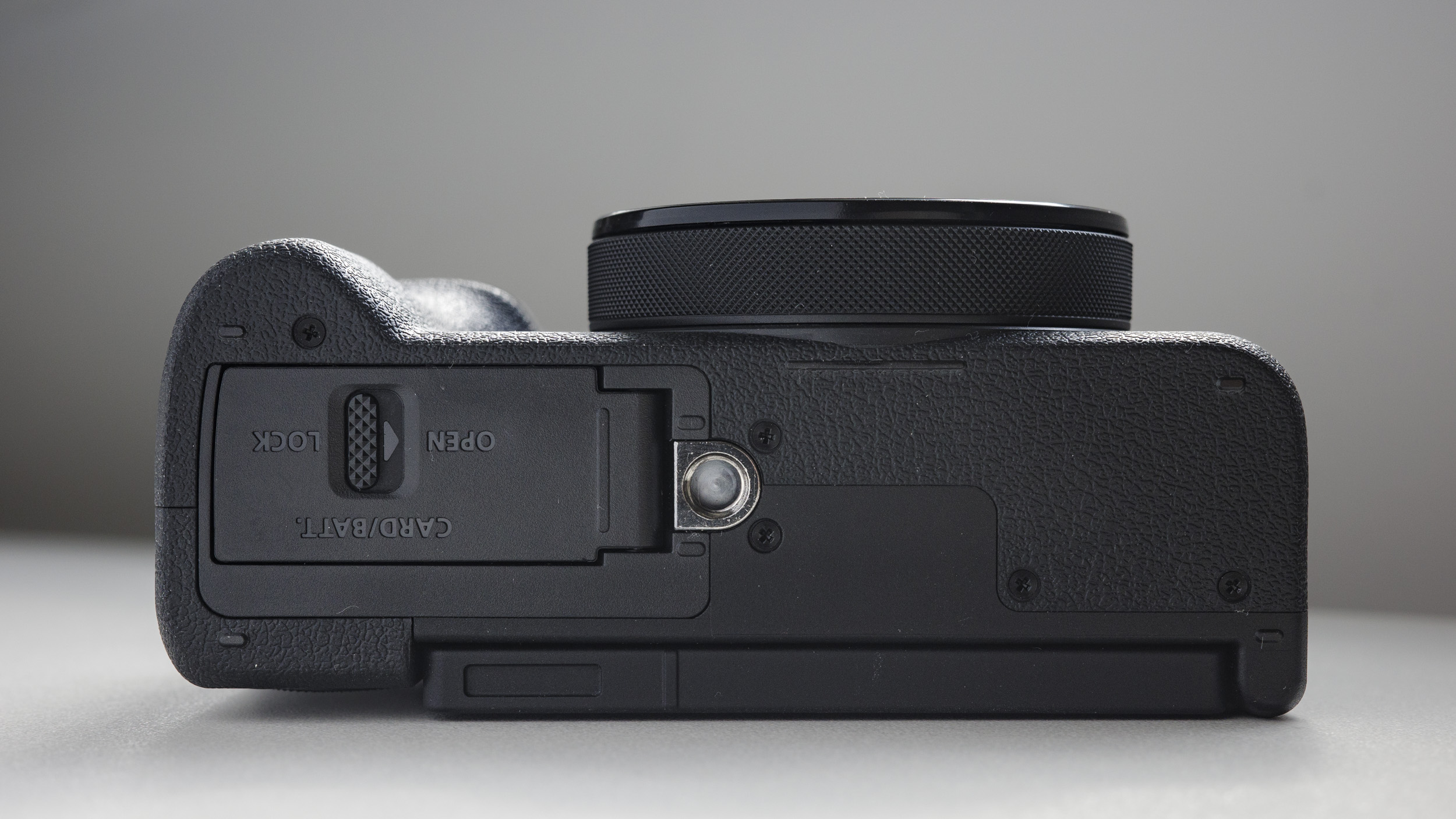

The lens is equipped with optical image stabilization (OIS) that's rated up to 5EV. That's a decent performance for photography, though it's of little use for video. For that, there's digital (or electronic) image stabilization (DIS). There's a small crop of the image area with DIS active, and even more with the enhanced DIS option, and that's where the V1's wider-than-most 16mm wide focal length is particularly handy – you'll still be able to frame yourself nicely in the shot with stabilization active.
Canon PowerShot V1: Performance
- Canon's best-ever autofocus for a PowerShot
- Digital image stabilzation only for video
- 4K video 30fps, 4K 60fps with a 1.4x crop, Full HD 120fps
I haven't had enough time with the PowerShot V1 to run full tests, but during my two-day hands-on time I have been able to use the various video record modes, snap a few photos, check image stabilization performance and shoot a few short vlogs using the internal mic.
In the sample footage below, I cover 4K 30fps, 4K 60fps, image stabilization, and the 3.1x optical zoom among other things.
Overall, 4K video footage is crisp, and subject-tracking autofocus is reliable – and that's something that's not to be taken for granted. Canon says it has put its best-ever autofocus for a PowerShot compact in the V1, and it really does perform well.
Usually, the camera's exposure metering and color are linked to the focus area. When focus was locked onto me, exposure looked fine with the help of an auto ND filter, although I have seen shifts in the color of my skin in vlogs – some look spot on, others a little green, others too magenta. It's a good practice to set white balance manually, rather than rely on auto white balance.
4K 60fps video looks great too, although you'll lose out on the option for Digital Image Stabilization at this setting, while there is also a 1.4x crop of the image area.
I don't mind the crop so much, as it effectively extends the lens for close-up B-roll. There's also a crop when you employ enhanced DIS (not available with 4K 60fps), but the V1's widest 16mm focal length gives a lot of scope for cropping into the image area for vlogging. Lens focal length might sound like a small thing, but Canon has been smart with its choice of 16mm focal length for the wide setting.




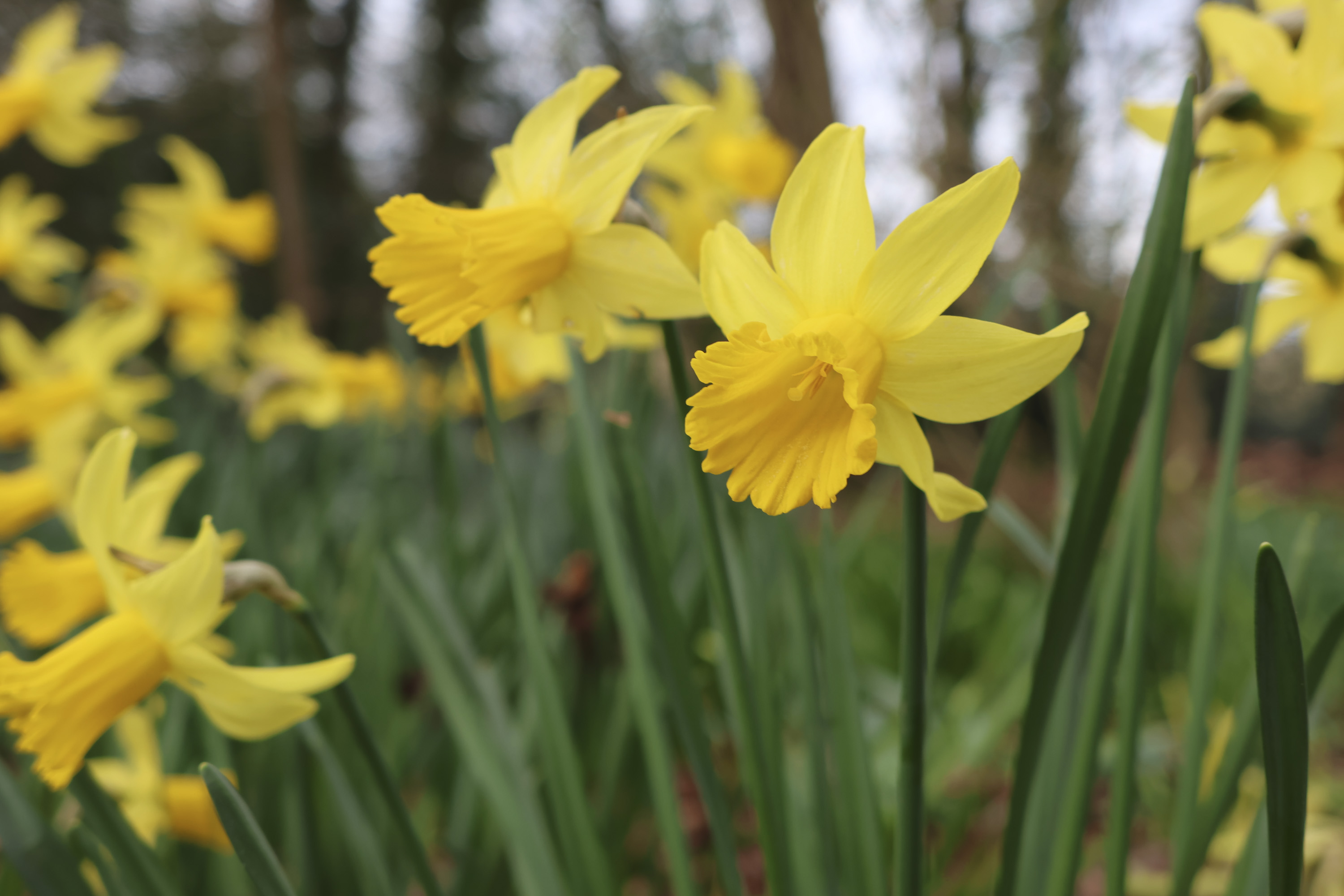
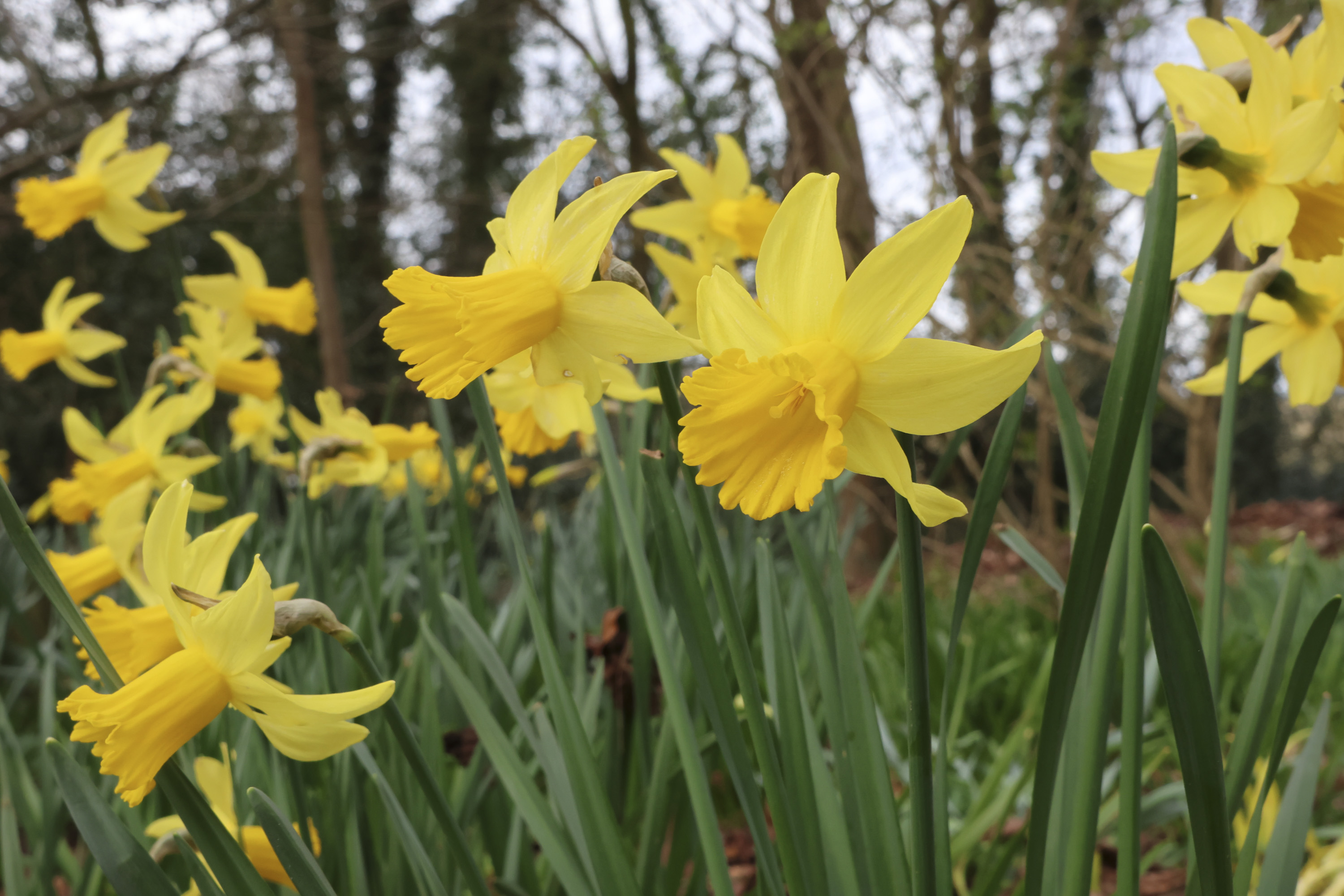
Canon's 22.3MP 1.4-inch sensor is new, but we get Canon's familiar color science, and that's a good thing. Full-size photos look natural and are packed with detail – my skin and facial hair are super-crisp in the selfie above.
The PowerShot V1 also has decent close-focusing skills, so you can create photos and dynamic video cutaways for vlog footage – check out the flower closeups, again in the sample gallery above.
Would I have preferred a faster maximum aperture, say f/1.8-2.8? Yes, but that wouldn't be possible within the same compact lens dimensions. In any case, with the lens set to its maximum aperture (f/2.8-4.5) and when the focus distance is close, it's possible to get a lovely shallow depth of field.
I'll share more findings in my upcoming in-depth review.
How I tested the Canon PowerShot V1
- Tested for two days, full production model
- I shot various handheld video clips using a range of resolutions and frame rates, and with stabilization active and off.
- I recorded vlogs using the in-camera mics only
I've not had long enough with the PowerShot V1 to give a definitive verdict. However, the two days over which I tested the compact vlogging camera gave me enough time to have a play with the various video modes on offer, including 4K and Full HD videos, and 60fps and 30fps frame rates, make short vlogs using the in-camera microphone, and shoot comparison videos with the stabilization active and turned off, to see how effective digital stabilization is for video. I've also made several photos in full quality.
- First reviewed March 2025
